TestRoom
VISUAL TRAINING
PROFESSIONAL ARTICLES FOR EYESIGHT TESTING



Our products comply with Regulation (EU) no. 2017/745. Regulation (EU) no. 2017/745 on medical devices establishes the general safety and performance requirements of devices with the aim of guaranteeing the safety and protection of the health of patients, users and any third parties during the use of such products.

•
•
•
•
•
Medical device compliant with EU Regulation no. 2017/745

•
It will show you the items that can be used by users at home to carry out visual training exercises, after an optometric check.
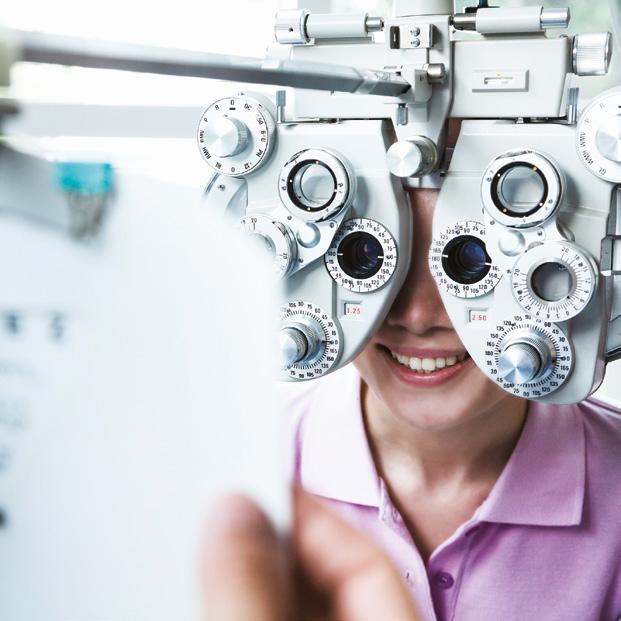
•
•
•
•
•
•
7.5 Flippers: cross cylinders and confirmation test

Centro Style offers a range of useful products suitable for visits outside the optical centre. An increasingly requested and appreciated service, an important moment of relationship with customers who, due to problems relating, for example, to advancing age and travel, do not have the possibility of going to the store to have their eyesight checked.
Easy portability, simplicity of use of the instruments (both classic and innovative) and minimal bulk are some of the prerogatives of this system, which aims to make the home visit effective and complete.

● Service
● Innovation
● Professionalism
● Relationship
● Differentiation
● Opportunities
Designed to hold a selection of items ideal for an in-home visual exam or for screenings outside the office. It also contains eyewear maintenance and adjustment tools consisting of a selection of screws, nose pads, pliers and screwdrivers most used in daily practice.

Ref. 08269
Contains:
For eyesight testing
Ref. 08262 Regular trial lens set with 90 lenses
Ref. 08311 Red occluder
Ref. 08312 Frosted occluder
Ref. 08313 Black occlude
Ref. 08317 Pen light
Ref. 08333 Confirmation Test Visus +/-0.50D
Ref. 04961 Multifunction ruler
Ref. 04959 Plastic PD ruler with black occluder
Ref. 08427 Reading chart 3 m distance with “E” letters
Dimensions: 555x370x95 mm
Weight: 5,5 kg.
Tablet not included
Per la manutenzione e regolazione dell’occhiale:
Ref. 03250N Easy Move inclination plier
Ref. 03722 Screw holding tweezer
Ref. 02257 Ball-bearing screwdriver
Ref. 03546N Hard metal inclined side cutter
Ref. 03200N Easy move holding plier
Ref. 00299 Stainless steel screws for flex hinges
Ref. 00410 Self-tapping stainless steel screws M1.2
Ref. 00412 Self-tapping stainless steel screws M1.4
Ref. 00341 Nickel-silver screws for nose pads M1,0
Ref. 01466 Symmetrical screw fixing
silicone nose pads 14,5 mm
Ref. 01461 Symmetrical push-on silicone nose pads 14,5 mm
Specific pathologies or visual problems, if identified early (within six years of age), can be effectively improved until completely resolved thanks to specific and timely visual rehabilitation interventions.
Among the many ocular anomalies that can develop in the visual system in childhood, the most frequent and important are strabismus and amblyopia.
Strabismus is a vision condition in which the eyes are not aligned correctly and point in different directions. In a normal state of vision, both eyes look in the same direction, allowing the brain to receive two separate images and combine them into one threedimensional image.
However, in people with strabismus, one of the eyes may turn inward (convergent strabismus), outward (divergent strabismus), up or down, causing a mismatch between the points of the object and points in the eye that can cause double vision (diplopia) or suppression of the image from the deviated eye, to avoid double vision.
Strabismus can be present from birth or develop in
childhood. If left untreated, it can lead to vision problems and development of three-dimensional perception.
Alterations in binocular vision induce a series of sensory adaptations, aimed at minimizing the disadvantages of the deviation. Three types of adaptation are identified based on the age at which the deviation appears and its severity:
• monofixation syndrome if the angle of deviation is very small, <10DP;
• anomalous retinal correspondence if the angle of deviation is between 10 and 20 DP;
• large suppression scotoma if the angle of deviation is very large, greater than 20DP (Nucci, Serafino 2012)

The rehabilitation path to undertake depends on the causes that generate diplopia (double vision). Regardless of the cause, it is possible to address the problem with techniques that allow you to eliminate visual duplication. In particular it is possible to use special adhesive lenses that have prismatic power called Press-On prism or additional power called Press-On lens.
Amblyopia is a condition characterised by a reduction in the visual capacity of one or, more rarely, both eyes, which can be caused by various eye diseases. The word ‘amblyopia’ comes from the Greek and means ‘dim vision’, thus defining the deficit in the maturation process of the visual pathways induced by abnormal visual stimulation.
Clinically, an eye is defined as amblyopic if it has a visual acuity that is at least two-tenths less than the other eye; furthermore, the amblyopic eye also presents a reduction in contrast sensitivity and altered chromatic perception (Rajavi et al., 2015; Kocakaltintas et al., 2000). The amblyopic eye is often called lazy because it is not normally used by the brain and therefore has a visual capacity that it does not actually use.
Amblyopia can occur in strabismus, in the presence of very high or significantly different refractive errors

between the two eyes (anisometropia) and finally in the presence of obstacles on the visual axis (congenital cataract, eyelid ptosis, etc.) which prevent the light stimulus to arrive on the retina in an adequate manner.
Amblyopia can also arise in the presence of micro strabismus, i.e. in the case in which the angle of deviation is very small; in this case, double vision of objects does not occur.
This visual defect, if treated early and adequately in preschool age, is largely recoverable, otherwise it becomes a visual condition that will persist even into adulthood when it can no longer be modified. Rehabilitation of amblyopia is carried out by occluding or penalizing the eye with the best visionby means of plasters or occluders to be applied directly to the eye or fabric occluders or suction cups with or without elastic to be applied to the glasses - to stimulate the lazy eye to take action to improve their visual ability.
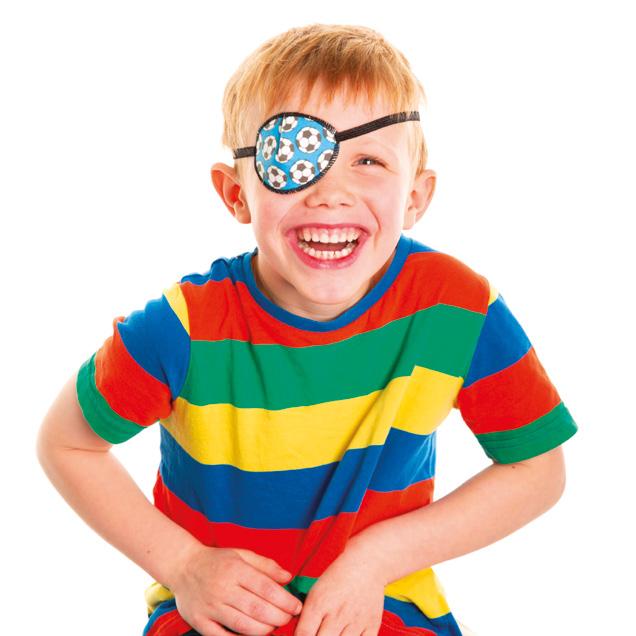

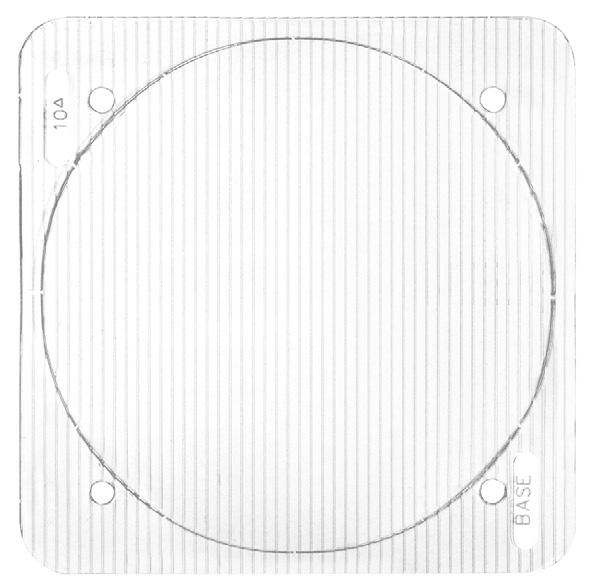

PRESS-ON™ PRISM
Used to treat several ocular motility disorders including strabismus..
Advantage of Press-On: practical, lightweight, wide power range. Thin and flexible and easy to fix to existing lenses - held by static adhesion, easily removed. Low cost and low risk treatment during power changes and vision therapy
DIOTTRIE PRISMATICHE Ø utile 67 mm - 1 pc.
Press-On and 3M are a registered trade mark of 3M Ref. Power
The pictures show how the image is moved by the prism to accommodate the different direction of the patient’s line of sight. The image is moved in the opposite direction to the base.
HOW TO APPLY PRESS-ON PRISMS
• There is no need to determine the optical centre of the lens.
• • The glossy side of the Press-On is applied to the inside of the lens.

1. Place the lens onto the Press-On with the inner side of the lens facing the smooth surface of the prism, according to the prescription.
2. Trace the shape of the lens
onto the Press-On.
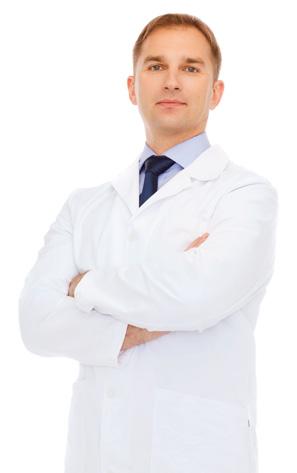
3. Cut the Press-On (1 mm less than the traced shape).
4. Moisten the inside of the lens and apply the 5. Press-On prism with the glossy side facing the inside surface of the lens. Do not use any adhesives.
POSITIONING OF PRESS-ON PRISM ON LENS
The base orientation of the prism is indicated with the word “base” on the prism edge. Mark lens and prism at the same position on their edges to indicate alignment. The Press-On must be positioned onto the lens according to the BASE description indicated in the prescription: NASAL, TEMPORAL, TOP, BOTTOM, DIAGONAL.

Vertical Correction
NASAL BASE
The prism’s lines are vertical. Real position of the word ‘BASE’ on the Press-On: Right eye: nasal, at the bottom, text vertical. Left eye: nasal, at the top, text vertical.
TEMPORAL BASE
The prism’s lines are vertical. Real position of the word ‘BASE’ on the Press-On: Right eye: temporal, at the top, text vertical. Left eye: temporal, at the bottom, text vertical.
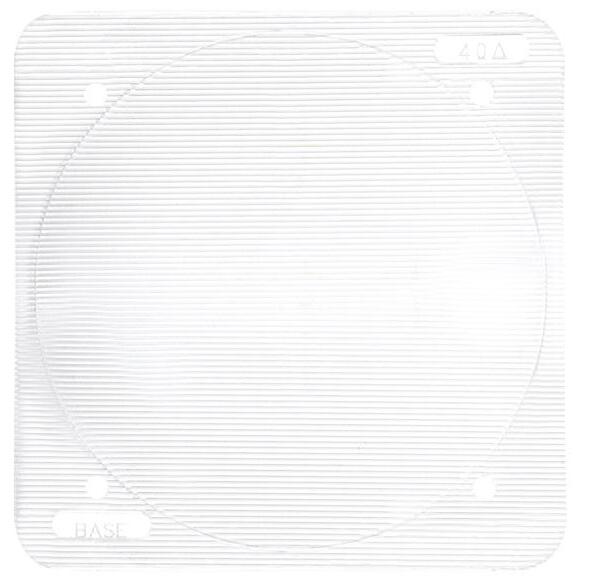
Horizontal Correction
TOP BASE
The prism’s lines are horizontal. Real position of the word ‘BASE’ on the Press-On: Right eye: nasal, at the top, text horizontal. Left eye: temporal, at the top, text horizontal.
BOTTOM BASE
The prism’s lines are horizontal. Real position of the word ‘BASE’ on the Press-On: Right eye: temporal, at the bottom, text horizontal. Left eye: nasal, at the bottom, text horizontal..
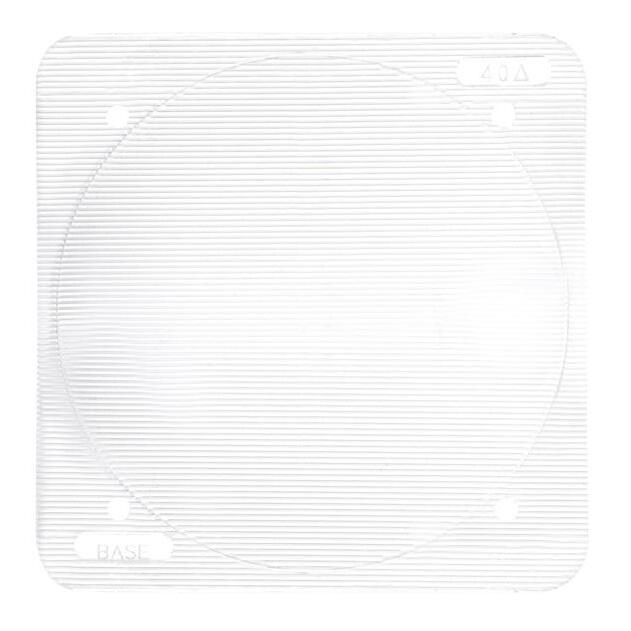
Oblique Correction
DIAGONAL BASE
The prism’s lines are diagonal. Such a prescription is achieved by locating the axis of the prism diagonally determining the angle with a Rotation Nomograph.


Press-On™ è un marchio registrato 3M
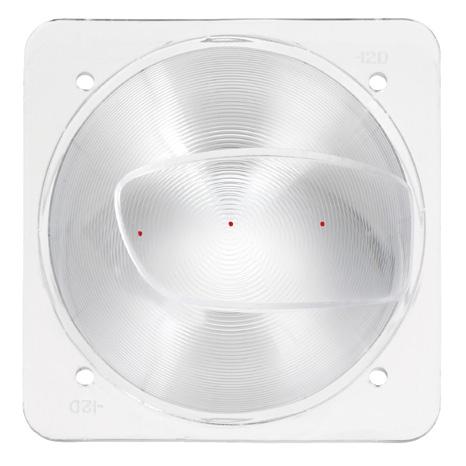

PRESS-ON™ LENS:
Vantaggi del Press-On Lente: practical, lightweight, widerange of powers. Thin and flexible and easy to fix to existing lenses - held by static adhesion, easily removed. Low cost and low risk treatment during power changes and vision therapy.
LPOSITIVE LENSES Ø 67 mm - 1 pc.
+3,0
1. Determine the optical centre of the lens and “dot” it on the front surface.
2. Place the lens onto the Press-On with the inner side of the lens facing the smooth surface of the Press-On.
3. Make sure that the optical centre of the lens coincides with the optical centre of the Press-On, which is the smallest concentric ring.
4. Trace the shape of the lens onto the Press-On.
5. Cut the Press-On, but slightly smaller than the lens.
6. Moisten the inside of the lens and apply the Press-On with the glossy side facing the inside surface of the lens.
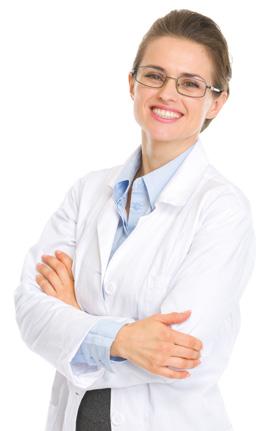

Ref. 08139
Kit consisting of:
• Fine tip marker (Ref. 06970)
• Scissor for shaping (Ref. 03782)
• Protractor to apply Press-On with oblique base (Ref. 08135)
• Tray (Ref. 01667)
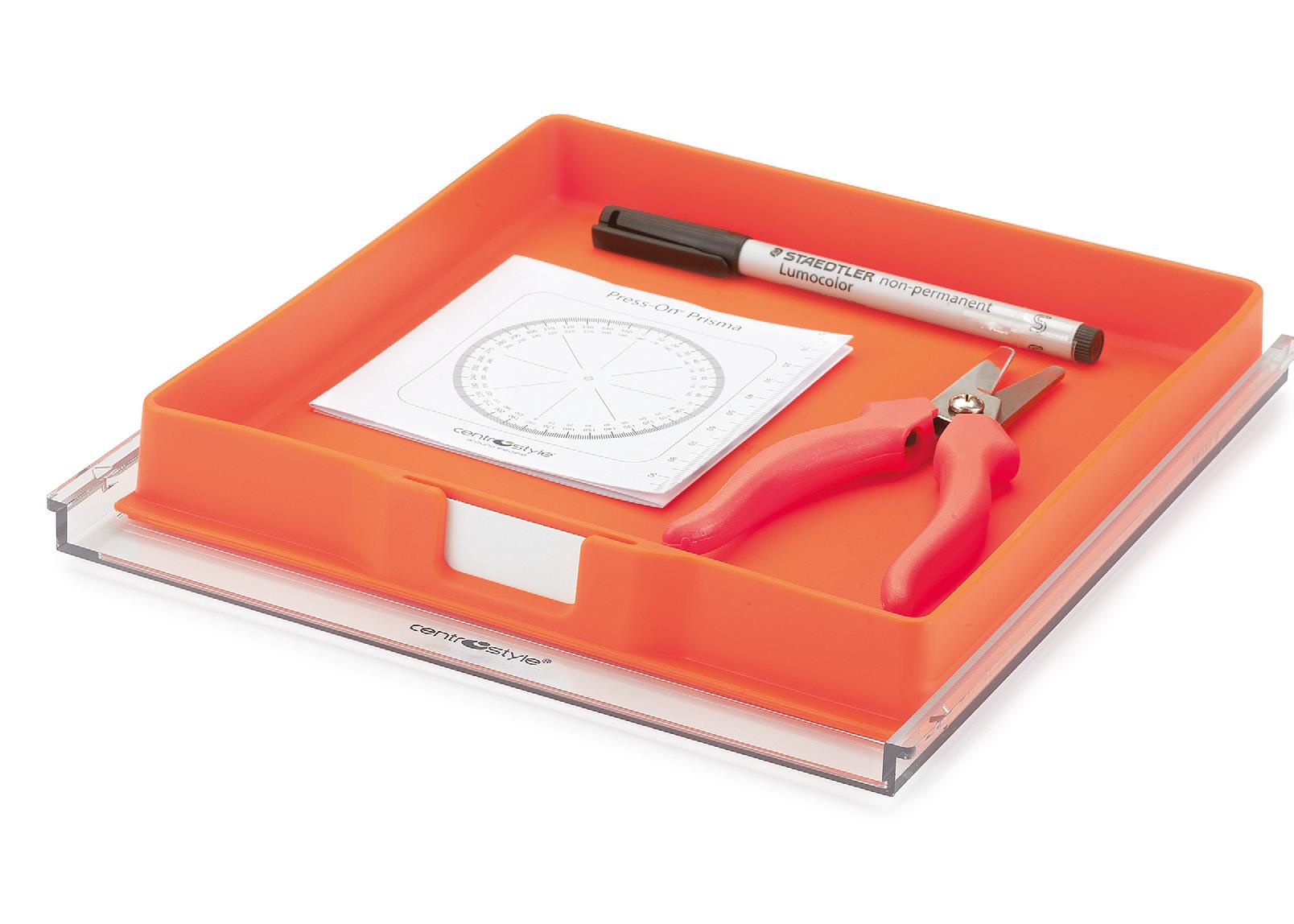
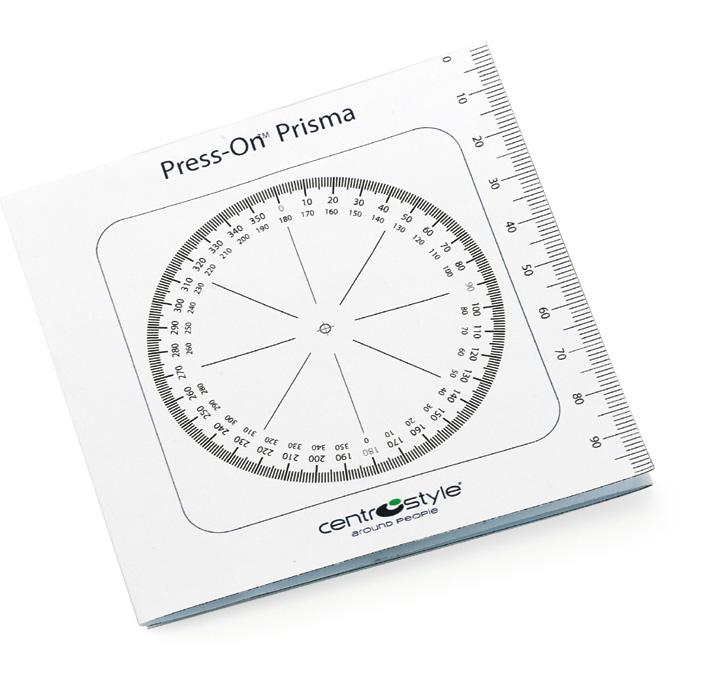
PROTRACTOR
Ref. 08135
To apply oblique base Press-On prism with a correct inclination. 2 pcs.
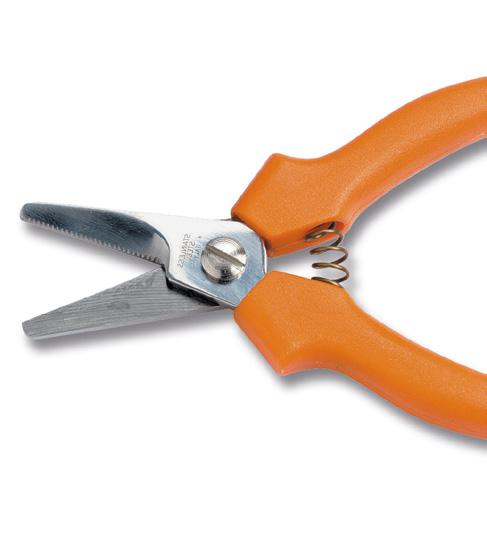
SCISSOR
Ref. 03782
To cut and shape Press-On.

Ref. 06970
Ideal to mark the shape of the lens.
Occlusion foils are a system of graded thin flexible foils of varying degrees of transparency that equalize the spatial contrast of the dominant eye to that of the amblyopic eye. They cling to the spectacle lens of the healthy eye to improve the function of the weaker eye. There are 10 levels of occlusion - see table below.
Use: These are used to treat amblyopia, exclusion and the anomalous retinal correspondence found in amblyopia; problems relating to correlation, monolateral aphakia and temporary diplopia.
Examples of vision with different occlusion levels

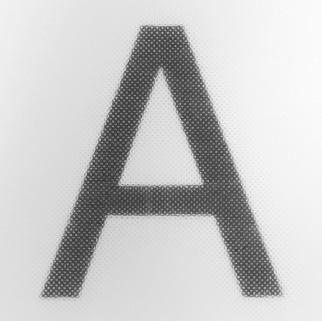
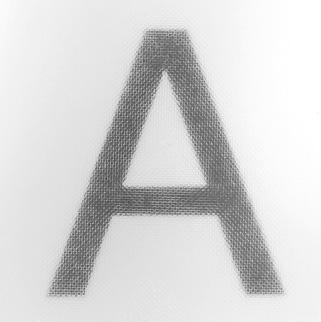


Dimensions: 65x65 mm. - 1 pc. / Ref.



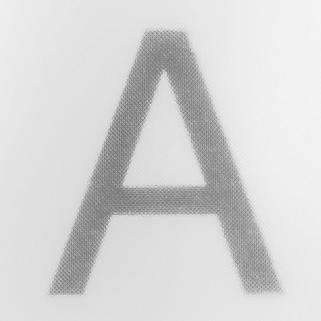
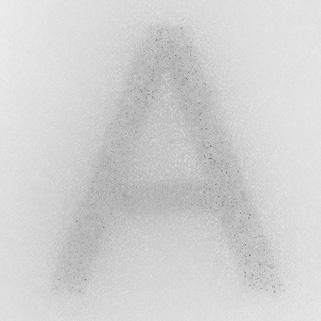
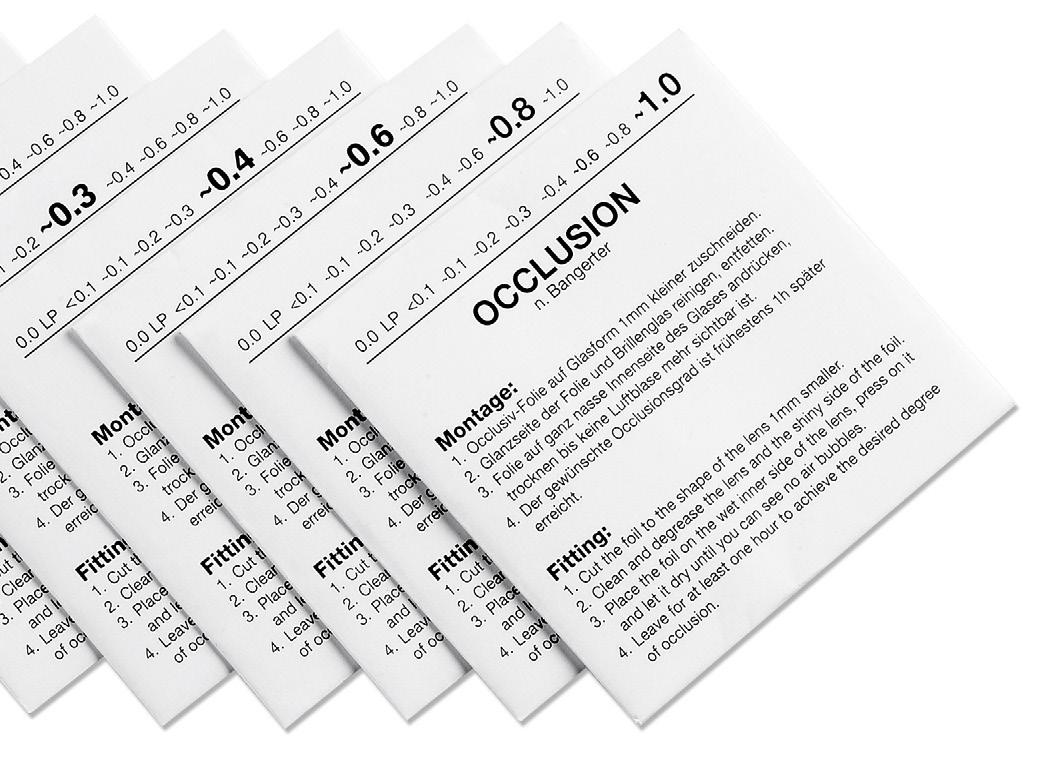
Ref. 08017
Kit of assorted Bangerter occlusion foils with display showing reference and 10 levels of occlusion. QR code for video.
Ref. 11315
Display only Dimensions: 240x240x10 mm
The shiny side of the foil is applied to the inside of the lens.
• Cut the foil to a shape slightly smaller than that of the lens
• Clean the lens thoroughly
• Damp the shiny side of the foil with warm water and apply to the inner side of the lens.
• Press with a dry cloth to remove any air bubbles and traces of damp.
• Allow to dry for 1 hour.
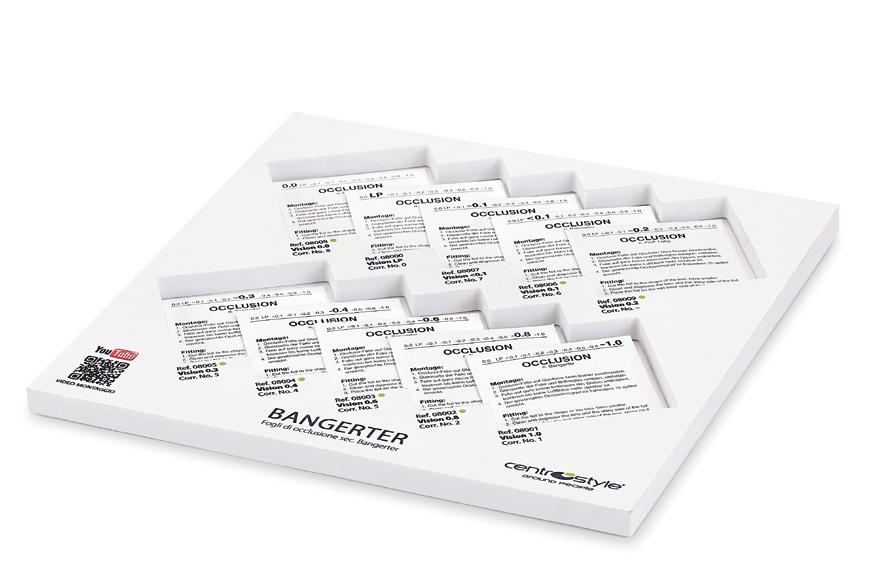

device compliant with EU Regulation no. 2017/745
ADULT Dimensioni: 130x60 mm 1 pc.

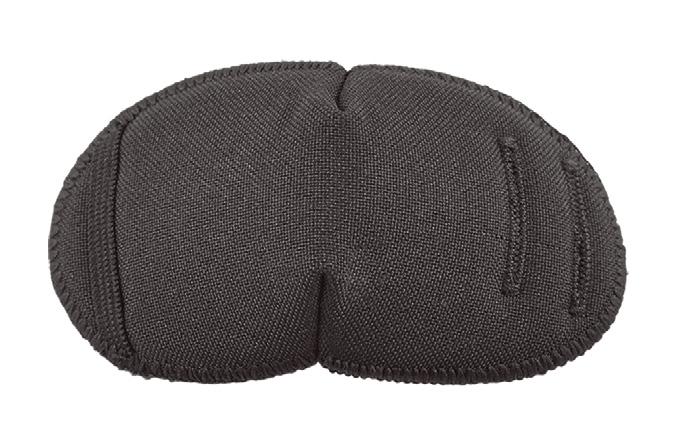
BABY Dimensions: 105x50 mm 1 pc.
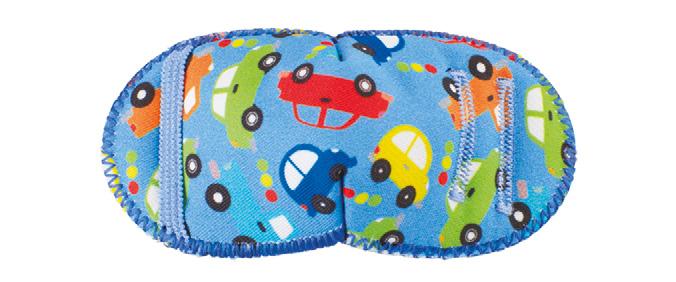
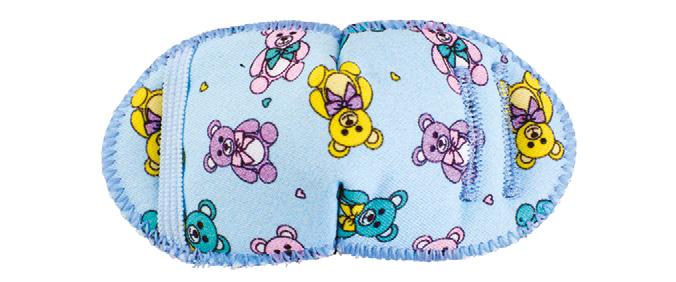

Occluders for children and adults frames made of high quality ecological fabric, reusable and washable.
They are made with certified materials, hypoallergenic and breathable, and eco-friendly. The fabric is printed using inks and water based dyes.
They are designed to comfortably fit on any type of frame and provide a total occlusion, effective for the treatment of amblyopia (lazy eye).
These occluders offer the perfect combination of comfort, style and fit to make treatment time fun and effective for children, and elegant for adults.
These occluders have colorful and fun drawings graphics suitable for both the right and left eye.
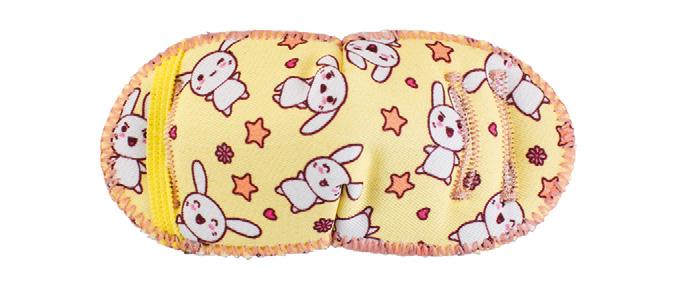
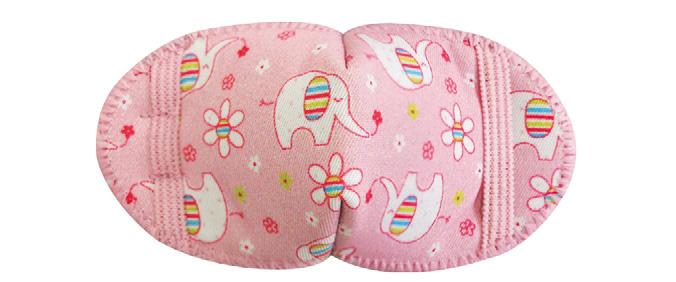
JUNIOR Dimensions: 118x60 mm
1 pc. For orthoptic therapies of amblyopia and strabismus - In fabric
Ref. 08180 Soccer Blues

Ref. 08181 Pirate Skulls
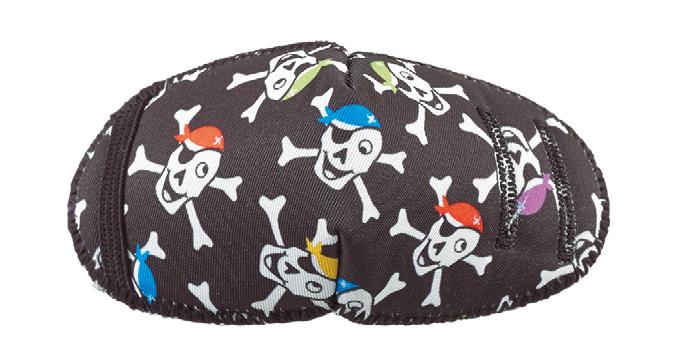
Ref. 08182 Jurassic
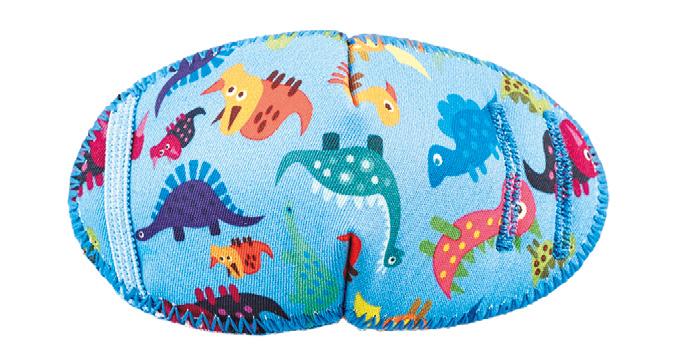
Ref. 08183 Fairies

Ref. 08184 Hearts&Flowers

Ref. 08185 Hoots
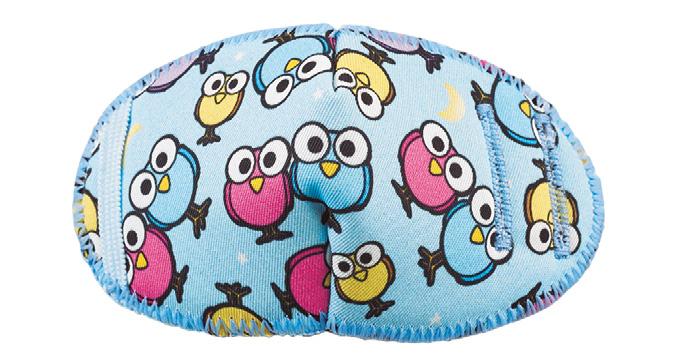
Ref. 08186 Fire Engines

Ref. 08187 Flutterby

Ref. 08188 Spiderweb
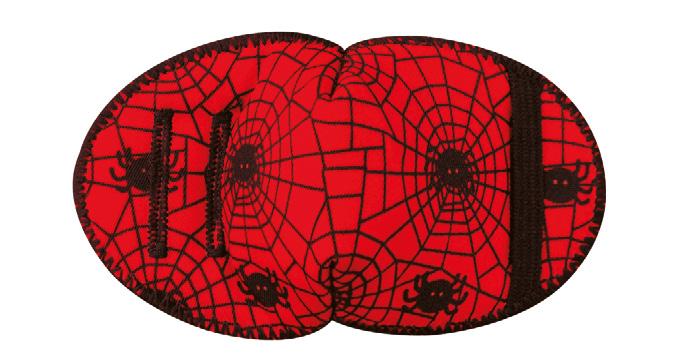
Ref. 08189 Unicorn

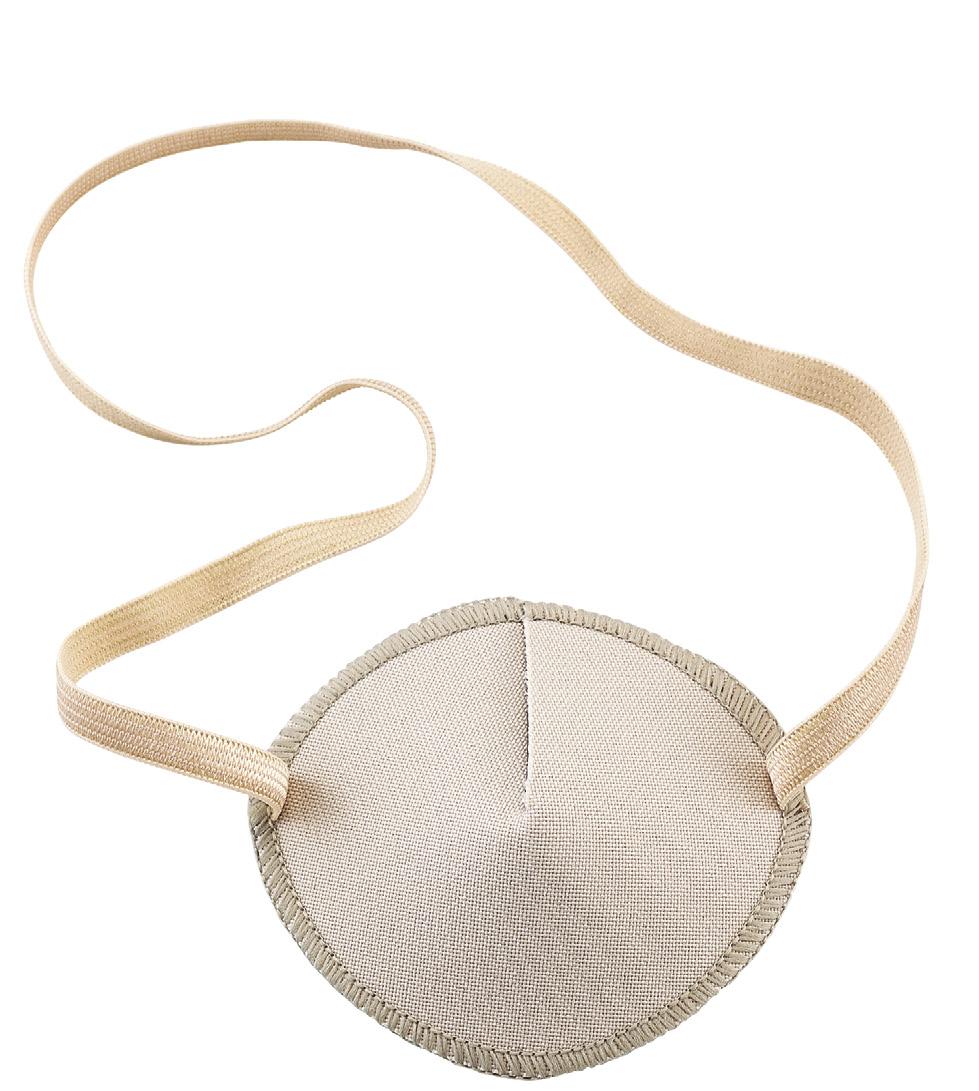
ADULT
Dim.: 77x67 mm - 1 pc.
Ref. 08170 Beige
Occluders for children and adults with elastic to place directly on the eye, usable even without frames.
Entirely made of breathable certified fabric, safe in contact with the skin to ensure a soft and enveloping fit around the eye. Reusable and washable.
Ideal for occluding one eye: they are kept in position with a quality elastic, latex-free, which makes them comfortable to wear for long periods.
The occluders have a black lining to exclude most of the light and a reinforced fabric core that keeps its shape even after the washing.
These occluders have colorful and fun drawings graphics suitable for both the right and left eye.
EYE PATCH WITH ELASTIC CORD
Ref. 08315
Total occlusion, in vinyl Dimensionis: 76,5x52,5 mm 3 pcs.
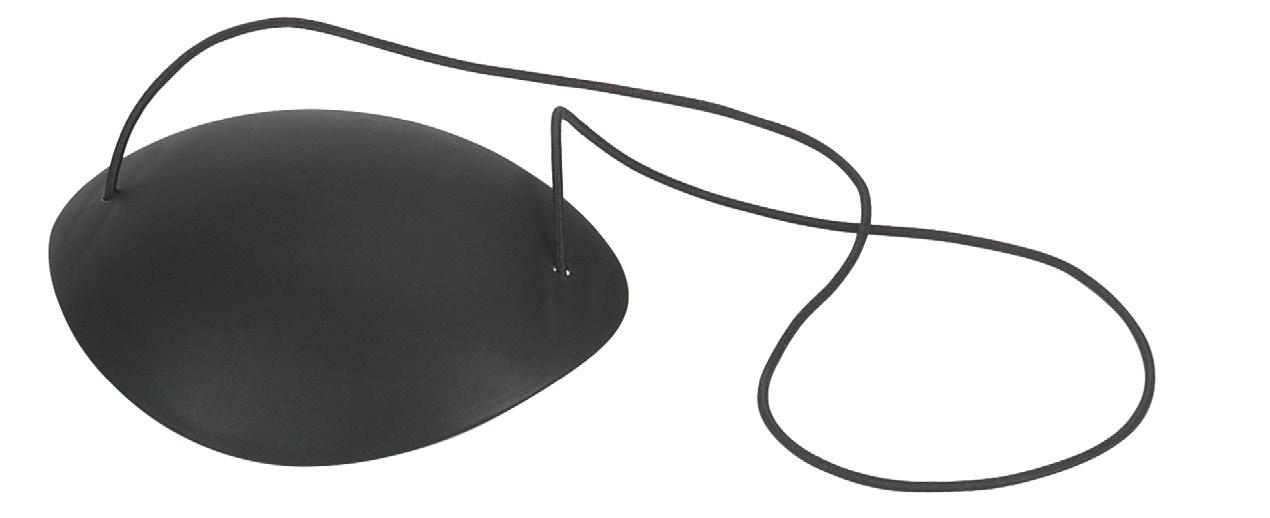

Ref. 08321
Translucent, in soft plastic Dim. 76,5x52,5 mm 3 pcs.
For orthoptic therapies of amblyopia and strabismus - In fabric
CHILDREN
Dim.: 70x55 mm
1 pc.
Ref. 08194

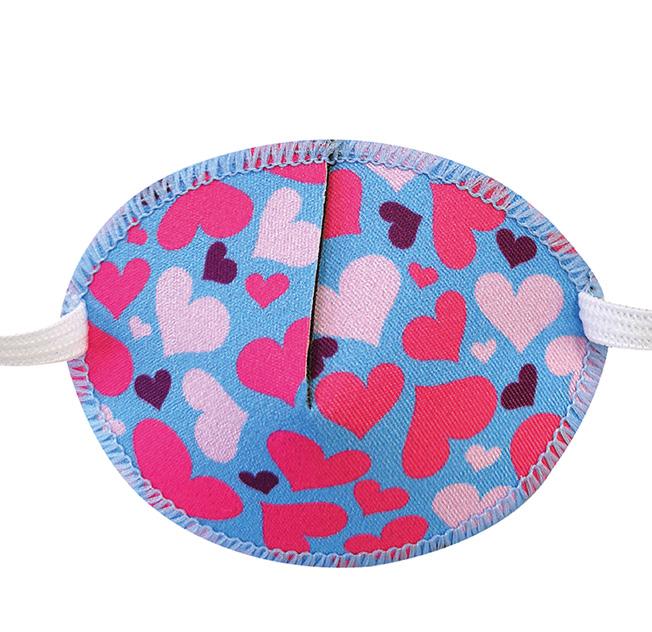
Ref. 08195

08196

08197
08199
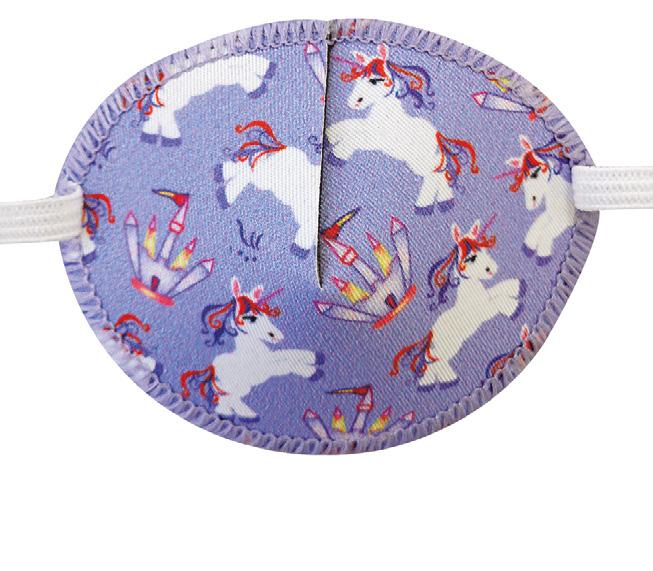
08193

• Reserved for the Italian Market

Each pack contains funny patch stickers.
Each box contains 20 eye patches sealed in individual sleeves.
JUNIOR WHITE 67x50 mm
Ref. 08076 6 Packs MEDIUM WHITE 76x54 mm
Ref. 08079 6 Packs
REGULAR WHITE 85x59 mm
Ref. 08077 6 Packs
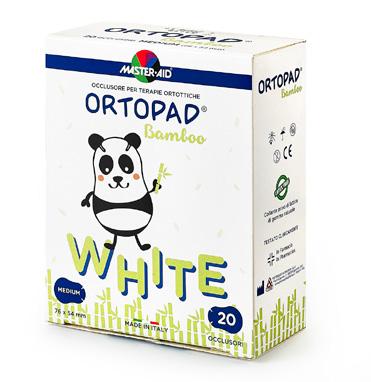
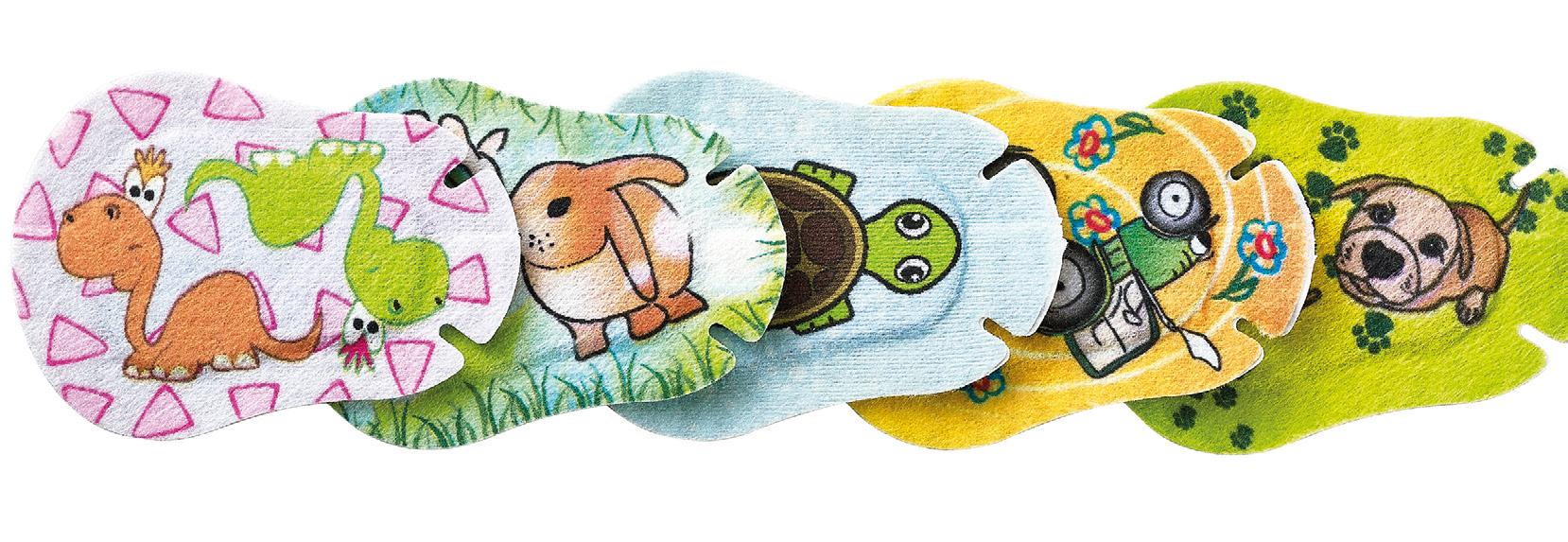
Each box contains 20 eye patches sealed in individual sleeve.
JUNIOR SYMPATHY 67x50 mm
Ref. 08071 1 Pack
• Made of a perforated monostretch non-woven material for extreme comfort.
• A special black screen in the central pad prevents the passage of light. For this reason, they are suitable to treat strabismus and amblyopia.
• Totally hypo-allergenic, latex free, for sensitive skin around the eye. Well ventilated to avoid sweating.
• Can be used for prolonged treatment.
• Close eye when applying.

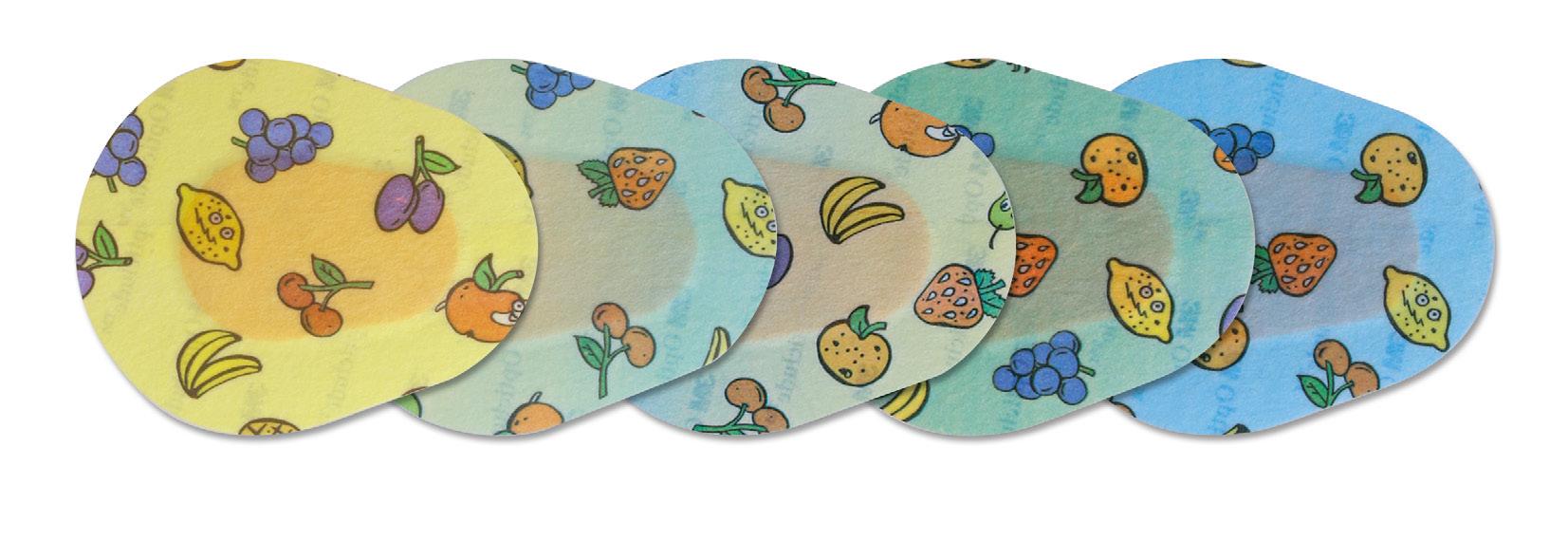
Each pack contains 30 patches.
OPTICLUDE BOY&GIRLS MINI 50x62 mm
Ref. 08069 1 Pack
• Made of perforated non-woven material and a pad placed on a transpirable and conformable support, covered by a hypoallergenic adhesive.
• Well ventilated to respect the physiological functions of the skin.
• Totally safe for the skin of the periocular area and can be used for prolonged treatments.
OPTICLUDE BOY&GIRLS MAXI 57x82 mm
Ref. 08073 1 Pack
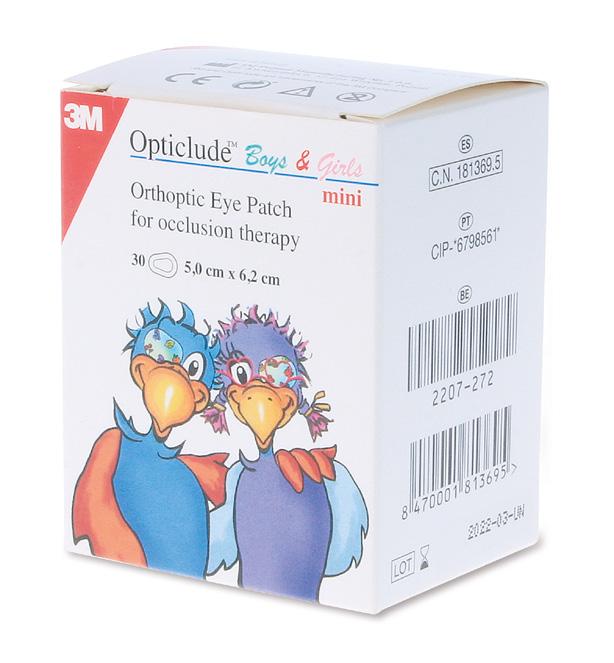
• Make sure that the skin around the eye is dry and clean and that the child’s face is relaxed before applying the eye patch over the closed eye.
• Open the wrapper and peel off the film from the adhesive side of the patch.
• Apply the patch to the skin with the smaller corner nearest the nose.
• Use fingers to apply pressure to all outer edges of the eye patch to ensure that all of the patch is sticking to the skin.
• We recommend to replace eye patches every day or according to the doctor’s instructions.

Visual training is an Optical Optometric activity aimed at promoting the development, improvement and optimization of the visual process. It is a set of specific exercises and procedures that train and stimulate visual functions, improving their effectiveness, ensuring greater overall visual comfort and an increase in the benefits obtained with visual aids.
In some cases, Visual Training is necessary to improve the effectiveness of visual skills which could not be achieved with the sole use of glasses and/or contact lenses.

Exercises to improve eye coordination and binocular vision in usual activities with the brock string.
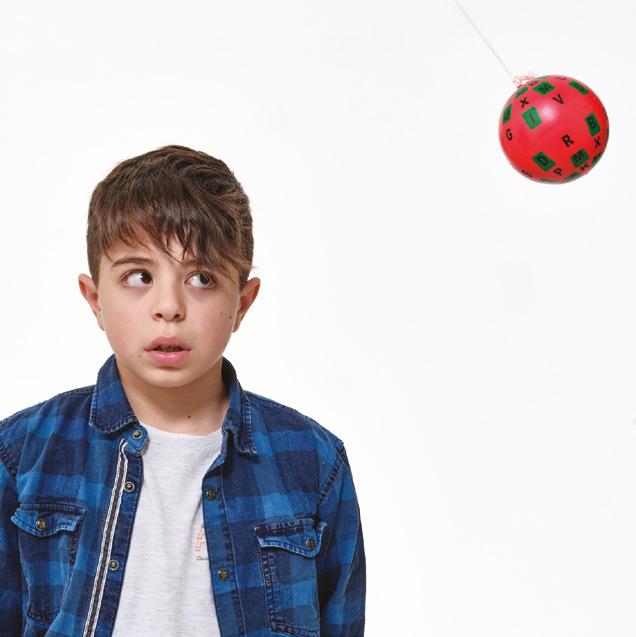
Exercises to improve peripheral vision and visual tracking with the Marsden sphere.
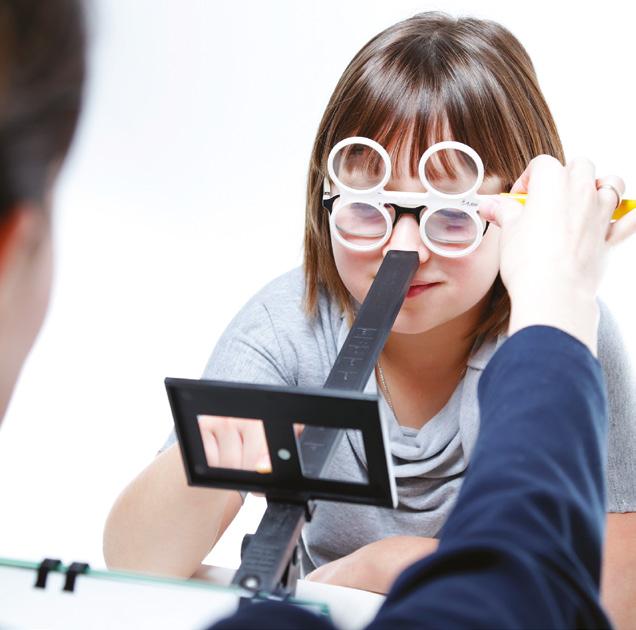
Exercises to improve low fusional and accommodative reserves and poor stereopsis with the Aperture rule.
VISUAL TRAINING HELPS:
• To read better, faster, more effectively, without getting tired, reducing any tension in the muscles of the neck, shoulders and back in general, memorizing, understanding and therefore assimilating more easily in less time.
• To maintain a correct posture with greater balance and greater agility during any motor act, in particular during sporting activity, making it more precise, faster, effective and satisfying.
• To interpret visual information more effectively, creating a more adequate representation of space and the environment and therefore greater safety and reliability in driving vehicles.
• To support the complex organization of the extrinsic ocular muscles in the conduction of the most effective movements for reading during study and daily work in the office and in all activities with a high attention requirement, significantly reducing asthenopia.
• To synergistically integrate all the senses together (multisensory integration).
APPLICATIONS OF VISUAL TRAINING
The fields of application are varied and multiple:
ASTHENOPIA
ACCOMMODATION DYSFUNCTIONS
FUNCTIONAL DIPLOPIA
MOVEMENT SICKNESS
MYOPIA FUSIONAL DYSFUNCTION
POOR ATTENTION
VISUAL STRESS
DIZZINESS LEARNING DIFFICULTIES
ORIENTATION DIFFICULTIES
Visual Training is also particularly effective in Global Postural Reprogramming that concerns the repercussions on the entire musculoskeletal system and “aims” to prevent or correct the postural anomaly.
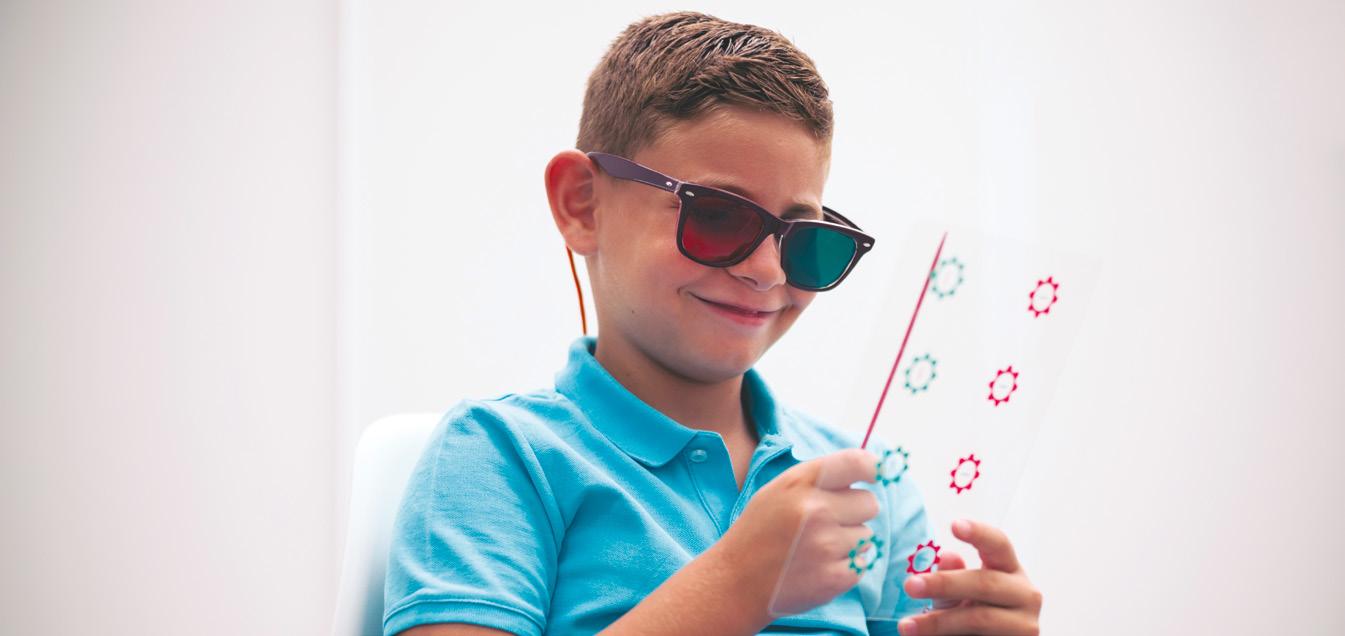
Test to exercise accommodative and convergence flexibility
TO IMPROVE THE ACCURACY AND SPEED OF TRACKING MOVEMENTS
New spheres with letters and numbers for visual training exercises useful for improving peripheral vision and visual tracking. Training with the Marsden sphere improves body coordination and perception of space. The exercises can be performed lying down, sitting, standing or on a platform in monocular or binocular vision. Equipped with a rope for hanging from the ceiling.
Ref. 08438

Soft sphere with letters and numbers on a yellow background for eye motor activities, fixation, accommodation and free-space dynamics. The yellow background helps in perception of the letters with the contrast of the common white wall background.
Dimensions: Ø 70 mm
Weight: 90 g
Cord length: 6 m
Material: foam sponge 1 pc.
Ref. 08439
Soft sphere with letters on a Red/Green background for activities such as ocular movement, fixation, accommodation and free space dynamics hung from a string. To be used with the Red/Green goggle (Ref. 08291).
Dimensions: Ø 70 mm
Weight: 90 g
Rope length: 6 m
Material: foam sponge 1 pc.
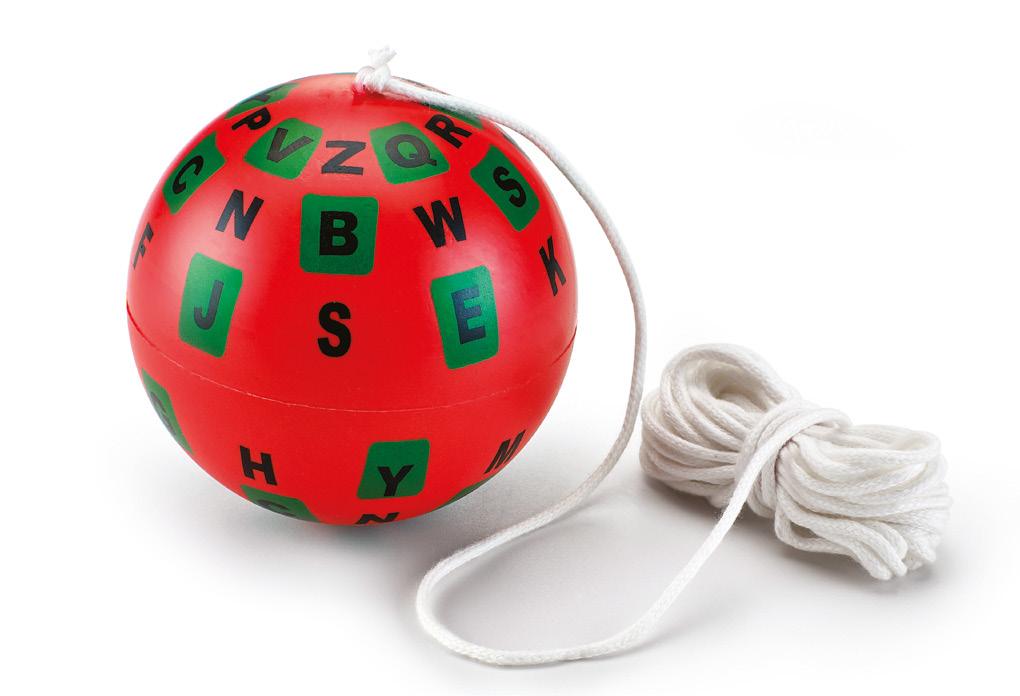

EXERCISE FOR CONVERGENCE AND ACCOMODATION
Ref. 08356
The purpose of this test is to measure the near point convergence. It can be used for home exercise. Very effective test as it ensures correct ocular alignment. Comprises of a narrow strip of double-sided paper with central fold. On one side there is a line of 10 points positioned at 3cm intervals along the central fold, on the other side there are two columns of letters 4 cm apart. Each pack contains 50 cards plus instructions.

Medical device compliant with EU Regulation no. 2017/745

TO DEVELOP KINAESTHETIC AWARENESS OF CONVERGENCE/DIVERGENCE
Ref. 08416
The Brock String with 5 coloured beads is used for physiological diplopia training. Used for jump vergences and other anomalies of binocular vision.
Dimensions:
Beads Ø 15 mm String 4 m 6 pcs.
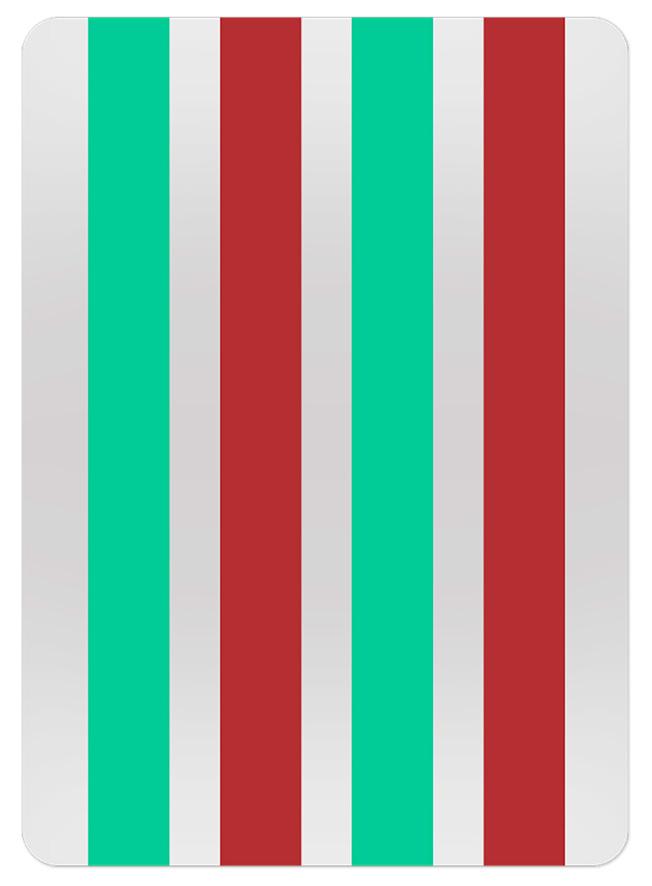
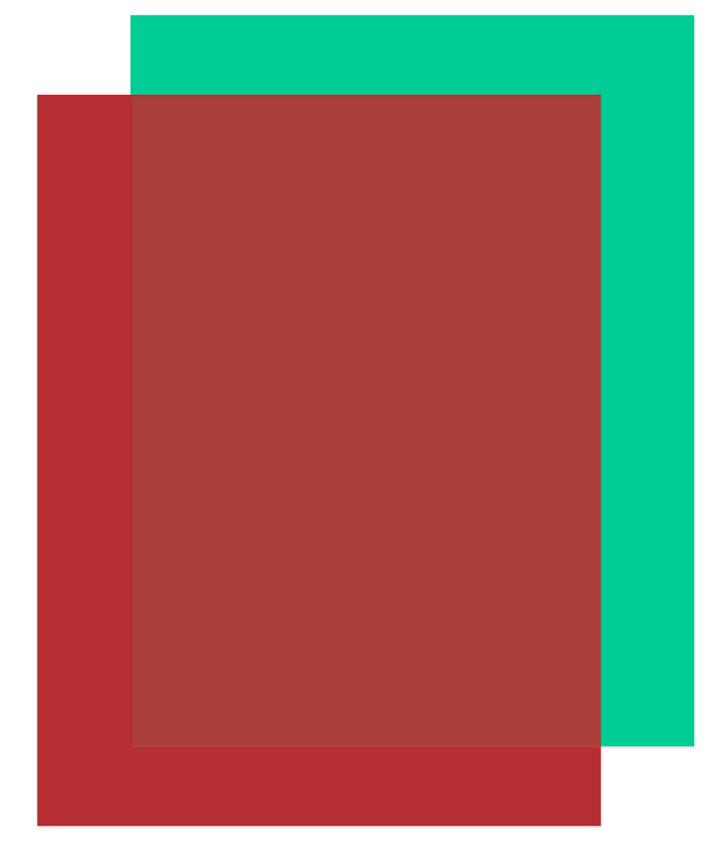
TO CHECK FOR THE PRESENCE OF OCULAR SUPPRESSION
Ref. 08275
A Red/Green Reading sheets for anti-suppression training. The patient reads or looks at a picture wearing anaglyph glasses and occluding one eye at a time. The sheets are to be held 2,5 cm above from the page or image. The sheets can be gently cleaned by rubbing them with a mild detergent or Isoproponal Alcohol or Centrostyle lens cleaning spray with a microfibre cloth. Do not use a paper towel as it will scratch the surface.
Dimensions: 127 x 178 mm
Bar width 15 mm
6 pcs.
TO CHECK FOR THE PRESENCE OF OCULAR SUPPRESSION
Ref. 08277
Red and green sheets used for anti-suppression in visual training. Place sheets in front of tables, images and digital screens.
PRIMARY FILTERS
Green: Transmission Y%=3.6/Absorption 1.44
Red: Transmission Y%= 11.09/Absorption 0.063888
Dimensions: 216 x 280 mm 6 pairs
Ref. 08277G
Individual green vynil sheet 1 pc.
Ref. 08277R
Individual red vynil sheet 1 pc.
Hendrickson lifesaver card

TO EXERCISE ACCOMMODATIVE FLEXIBILITY AND CONVERGENCE
Ref. 08278
White 6 pcs.
Ref. 08279
Transparent 6 pcs.
Two cards, one clear the other opaque. Each containing two vertical line of four green lifesaver circles and four red lifesaver circles.
The user is required to demonstrate the maximum accommodative flexibility, convergence and accommodation-convergence interaction. To develop speed, resistance and flexibility. Prismatic glasses can be used with R/G and polarized filters.
Dimensions:107x158 mm
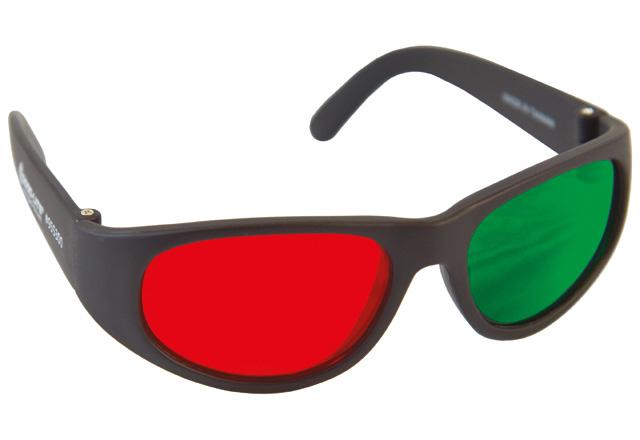
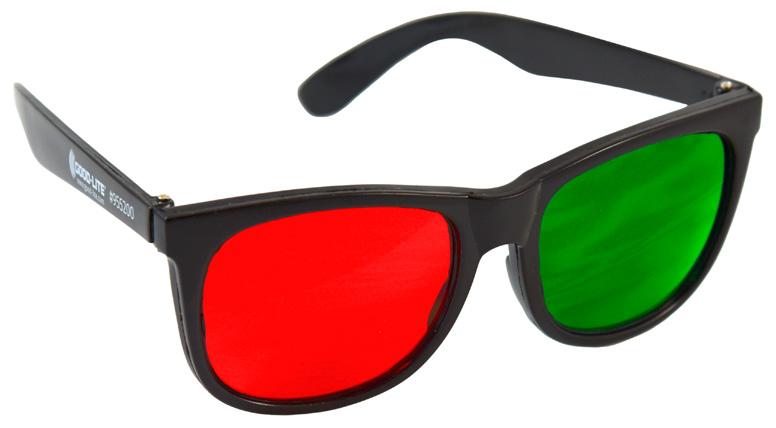
GLASSES USED FOR ANAGLYPHIC TESTS
Ref. 08292
Children 1 pc.
Ref. 08291
Adult 1 pc.
The red/green anaglyphic glasses are ideal for use in several of the binocular vision tests as well as in vision control in red/green anti-suppression exercises. Ideal for most Lancaster Red-Green tests, Hess Screen Test colors and commonly used visual therapy, exercises requiring patients to wear red/green lenses.
Available in adult and children sizes.
Transparent and opaque cards with eccentric red/green circles
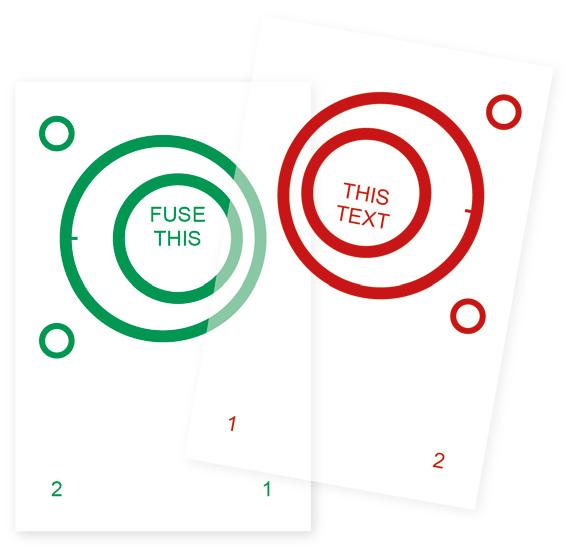
Ref. 08272
Pairs of cards, transparent and opaque, with eccentric red/green circles to control central suppression and fixation disparity.
With the use of anaglyphic glasses, it is possible to carry out convergence and divergence exercises.
Dimensions: 50x76 mm
2 pcs. transparent cards 2 pcs. opaque cards.
Ref. 08274
Pairs of cards, transparent and opaque, with eccentric circles to control central suppression and fixation disparity.
Dimensions: 50x76 mm
2 pcs. transparent cards 2 pcs. opaque cards.

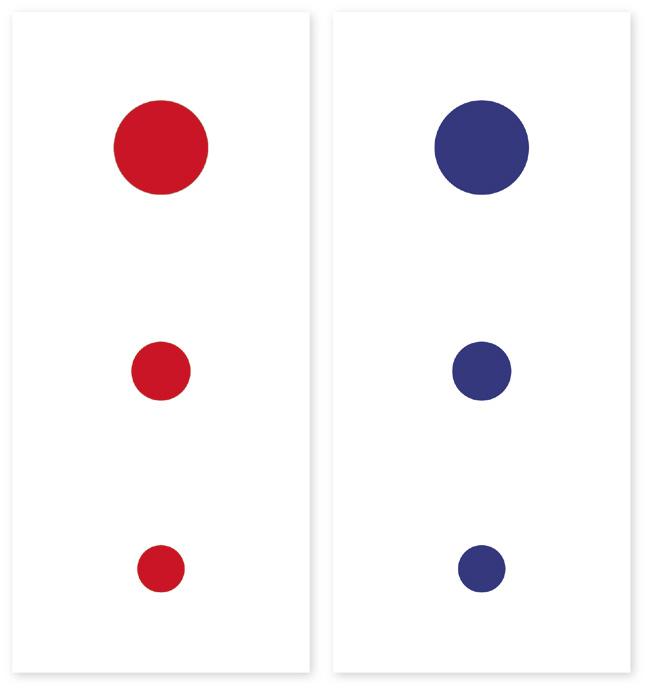
Ref. 08276
Double-sided card with 3 red circles on one side and 3 blue circles on the other side.
Used to develop control and accuracy of vergences (convergence and divergence). Improve voluntary convergence and normalize the next point of convergence (PPC).
Useful in the presence of convergence insufficiency. It can be used to explain and improve the sense of physiological diplopia.
Dimensions: 63x140 mm 1 pc.

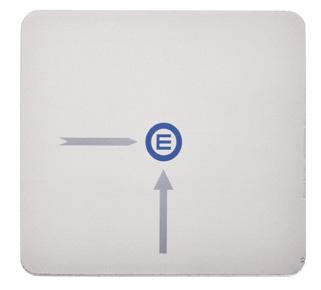
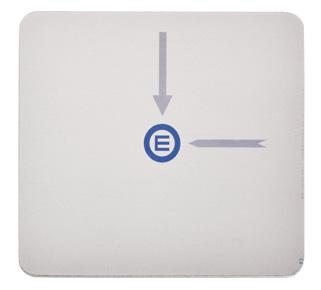

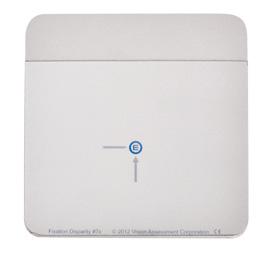
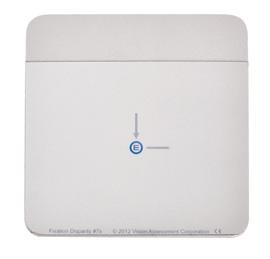
FIXATION SUPPRESSION TARGET FOR ASSESSING BINOCULAR VISION AT DISTANCE
Ref. 08431
• Quick test for assessing the presence of monocular suppression at distance, about 6 m, in free space or behind the phoropter.
• Fixation target E in the centre of the test to test the ability to fuse images at a distance.
• 4 arrows of two sizes to assess the presence of suppression in the right and left eye.
• The test is performed in a well-lit area without glare.
• Dimensions: 145x127 mm
Complete with polarized spectacles (Ref. 08412.1) and instructions
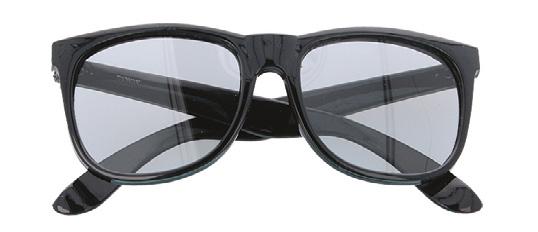
FIXATION SUPPRESSION TARGET FOR ASSESSING BINOCULAR VISION
Ref. 08430
• Quick test for assessing the presence of monocular suppression at close range, 41-46 cm, in free space or behind the phoropter.
• E fixation target in the centre of the test to test the ability to fuse images at proximal distance
• 4 arrows of two sizes to assess the presence of suppression in the right and left eye
• The test is performed in a well-lit area without glare.
Dimensions: 114x114 mm
Complete with polarized spectacles (Ref. 08412.1) and instructions

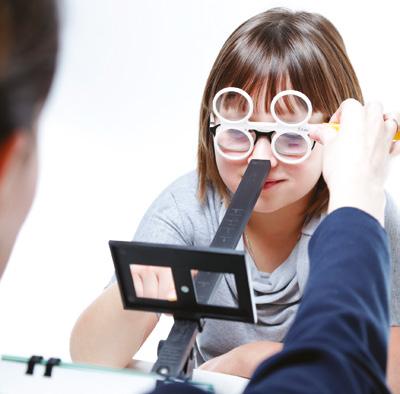
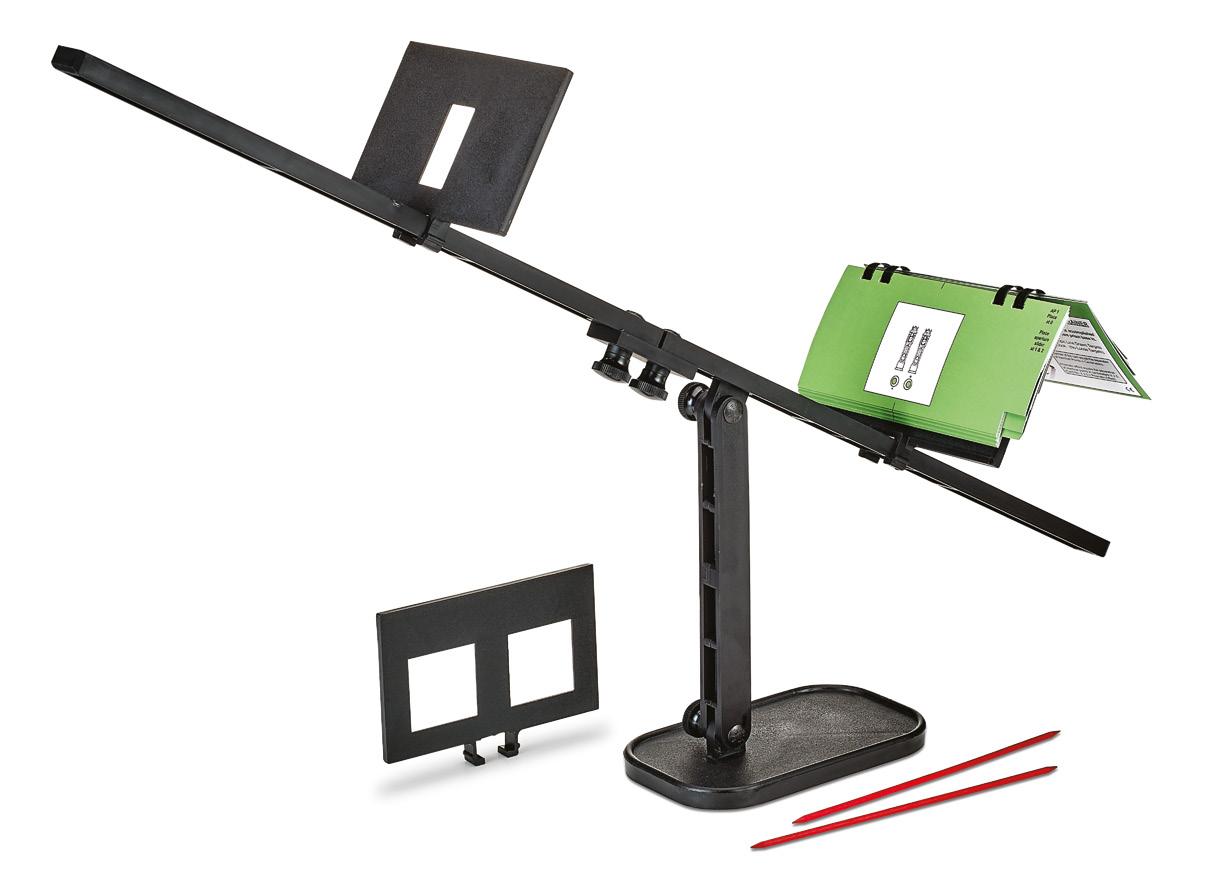
Ref. 08357
In most visual training programs, the Fusional Trainer is a standard tool. This kit features progressive fixed demand and helps improve LOW fusional and accommodative reserves, poor stereopsis, fixation disparity suppression. No polarized or tinted lenses required.
The optometrist assists patients with eye strain and visually related learning difficulties. Base-Out 30PD to 17.5PD Base-In.
The kit includes:
• Sport/Action Card Set
• Single and double opening cursors
• Red pointers
• Manual
Medical device compliant with EU Regulation no. 2017/745
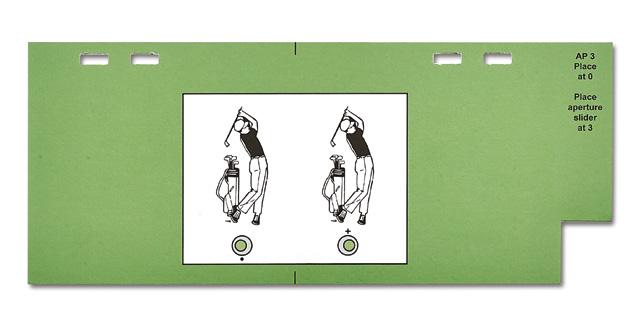



Hart’s Tables

TO IMPROVE ACCOMMODATIVE FLEXIBILITY
Ref. 08270
Tranparent sheet with concentric circles on the top and a matrix of letters and numbers at the bottom. The purpose of this target is to improve the eyes’ focusing system. It helps build-up flexibility of accommodation quickly and accurately. Can help in sports performance skills to improve reaction time and hand-eye coordination and can also improve classroom reading and copying skills.
The Bull’s eye target must be held in front of the examined eye at a distance between 30 and 40 cm.
Dimensions: 70x146 mm 10 pcs.
TO IMPROVE ACCOMMODATIVE FLEXIBILITY
Ref. 08271
White
Dimensions: 215 x 280 mm 20 pcs.
Ref. 08273
Transparent
Dimensions: 76 x 90 mm 6 pcs.
Two tables, both with white background and black lettering, one is transparent. The purpose of this table is to help train the eye accommodative system from distance to near on demand. There are different ways to apply these charts depending on the result required (for example to develop the ability to perform rapid and accurate saccadic eye movements and to increase accommodative flexibility).
It can be used in conjunction with the Bull’s Eye Test. The table set comprises of two cards of different size letterings.
Medical device compliant with EU Regulation no. 2017/745

Ref. 08350
Two chromed fixation spheres of different diameters for quick evaluation of ocular motility, fixation stability, saccadic movements and pursuits. Used in the NPC test (near point of convergence) for the evaluation of the break and recovery of convergence. They can use by the patient themselves as a fixation target.
Spheres: Ø 6 and 13 mm - stick: 36 cm 2 pcs.

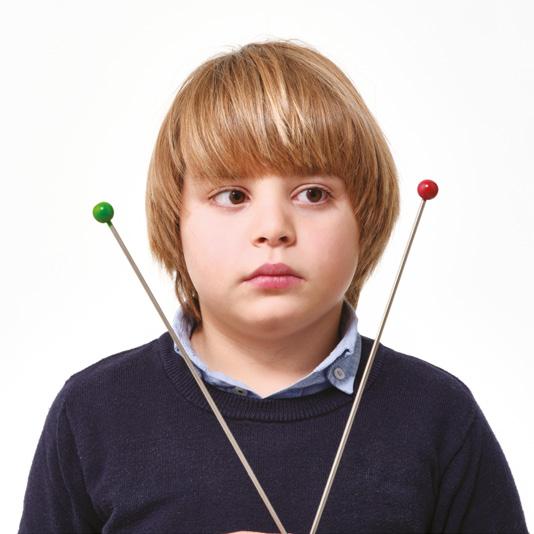
Ref. 08351
One set of RED and GREEN fixation spheres of different diameters. Used for quick assessment of eye movement, fixation stability, saccadic movements and pursuit movements (pursuits) with anti-suppressive control in the NSUCO test procedure.
Spheres: Ø 6 and 13 mm - stick: 36 cm 2 pcs.

LANG FIXATION CUBES
Ref. 08352R
Red
Length 155 mm - 1 pc.
Ref. 08352W
White
Length 155 mm - 1 pc.
Fixation cube white and red with pictures designed to attract the attention of children in order to observe the eyes motility and the fixation movements in all directions of gaze. They are being used for assessment of eye fixation, motility, accomodation, convergence, for cover test and to prepare the patient for testing with the LANG-STEREOTEST.
Usage at 30 cm reading distance.
LANG FIXATION STICK
Ref. 08355
FRONT: Fixation Test with the same pictures as on the Lang Fixation Cubes
BACK: Examination of accommodation and convergence with numbers. Recognizing the pictures prepares the child for the Lang I and II tests.
Visus: Distance of 30 cm 0.2-0.5.

Length 146 mm - 1 pc.
Children’s flip-up occluder glasses are made of TPE (thermoplastic rubber) and latex-free.
Each occluder flips up and down for easy occlusion with large circular lenses for maximum coverage. The new gender neutral colours make them suitable for boys and girls.
The rubber temple tips help prevent the glasses from slipping.
The flexible and durable plastic makes these glasses almost indestructible.
Available in matt or frosted occluder lenses.
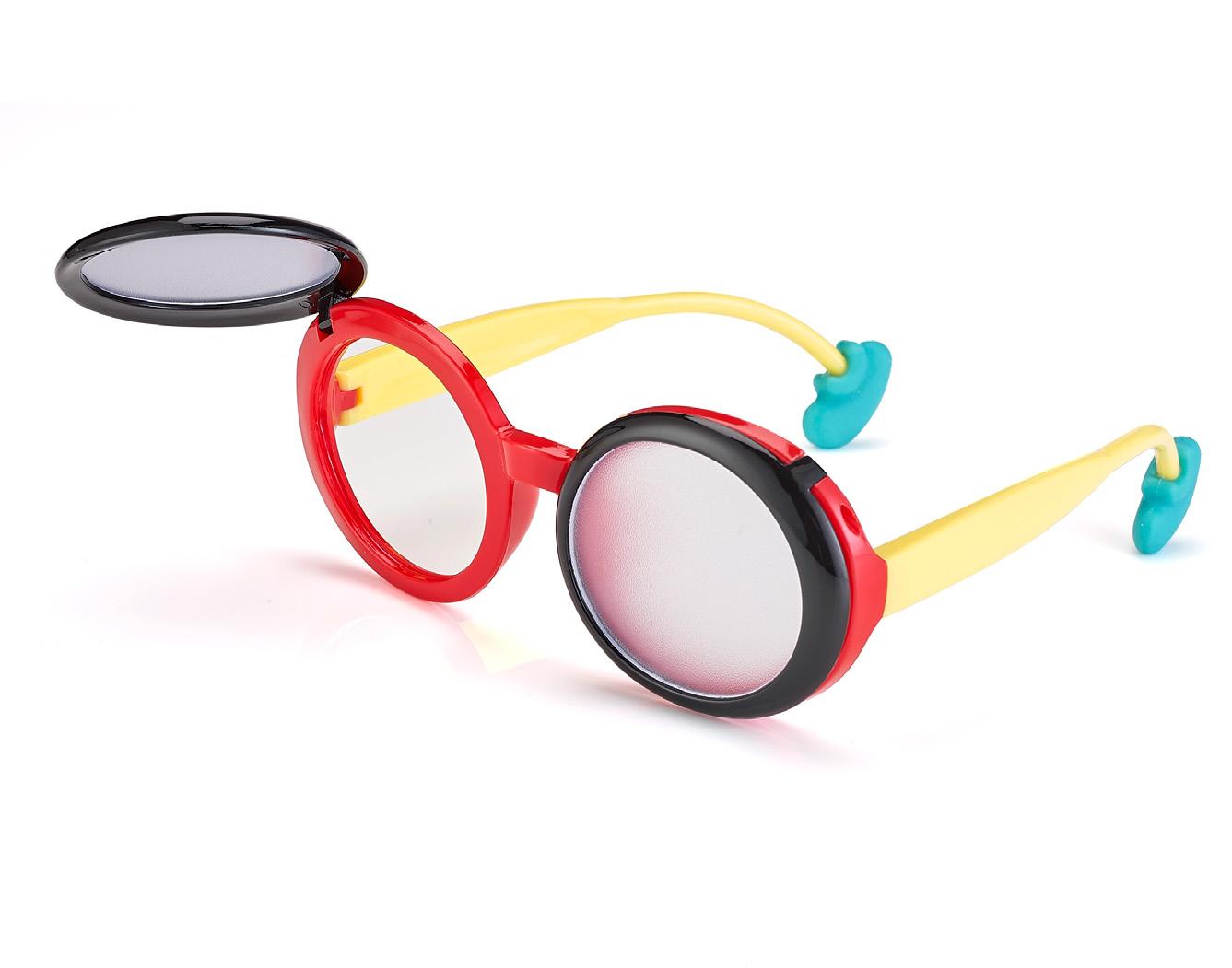
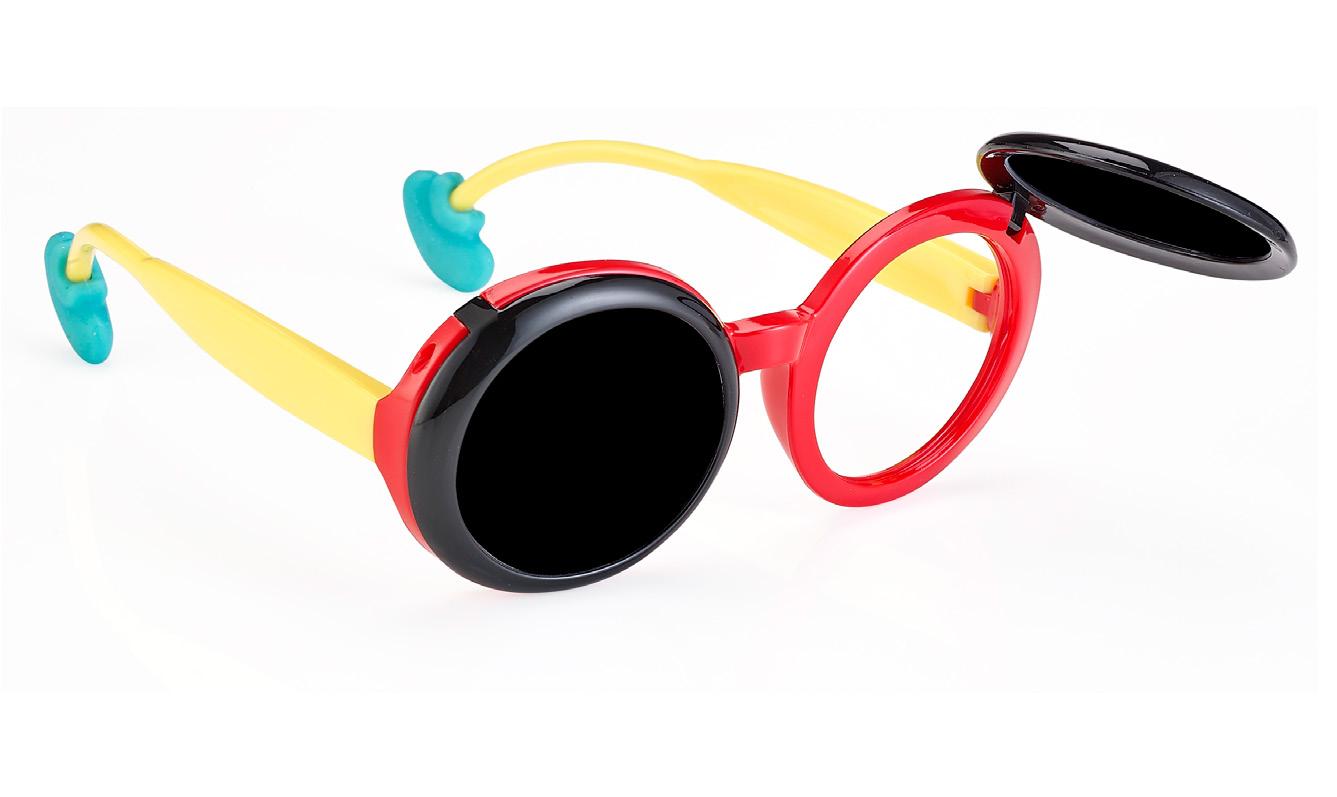
08283
Ref. 08287
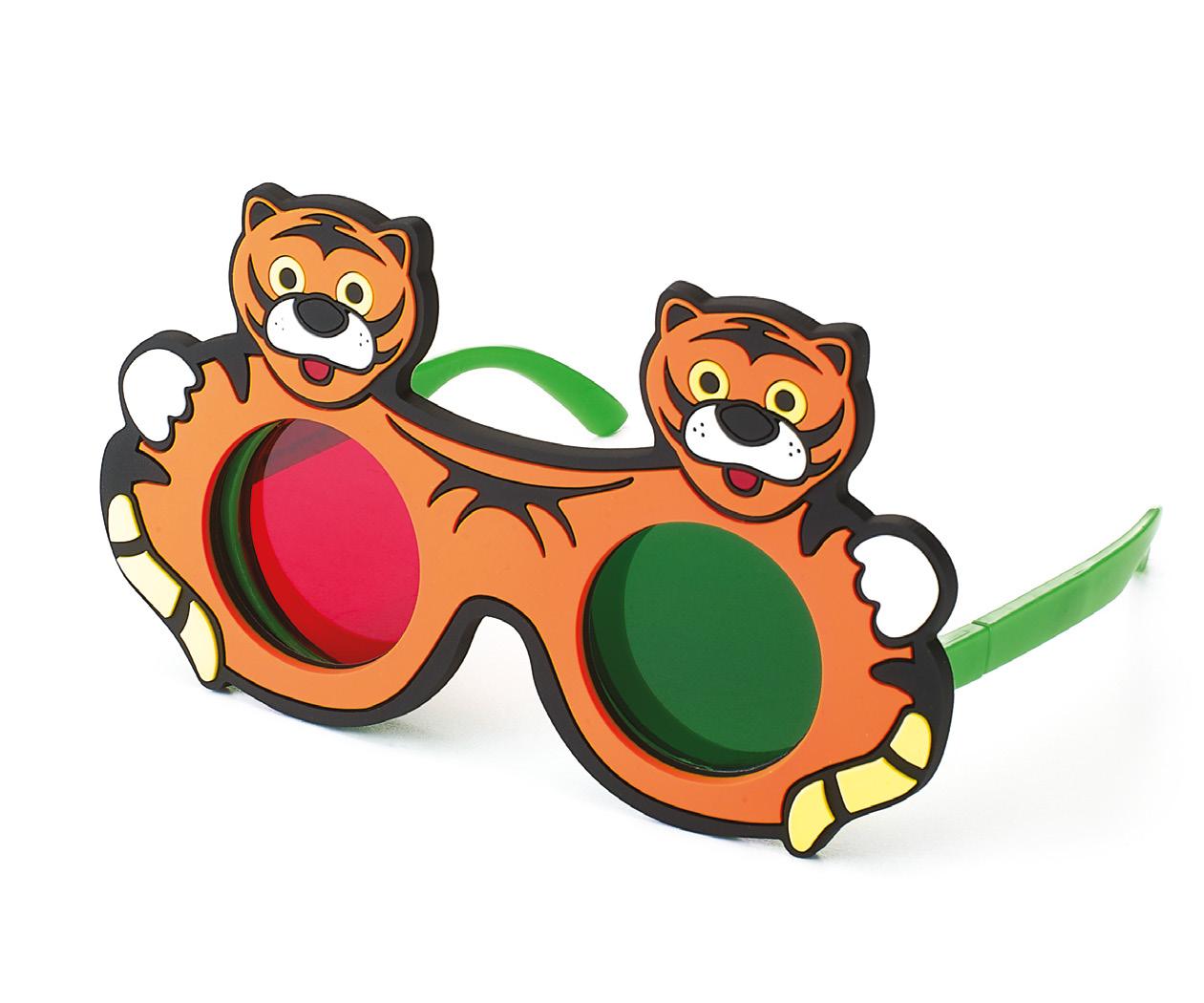
Nice children’s glasses in soft material with red/green filters for carrying out anaglyphic tests.
From 4 years old. 1 pc.

Ref. 08288
Nice children’s glasses in soft material with polarized lenses to be able to carry out various stereo tests.
From 4 years old.
1 pc.

Ref. 08285
Tube designed to hold a selection of 16 home training products.
Kit includes:
• 1 Bull’s eye target;
• 3 accommodative charts with letters, numbers and arrows (9, 18, 72 point chart), made of cardboard;
• 3 antisuppressive chart with letters, numbers, and arrows (9, 36, 72 point chart), made of cardboard;
• 1 red-green goggle;
• 1 couple of fusion cards;
• 1 peripheral awareness chart with letters, made of cardboard;
• 1 red-green bar reader;
• 1 soft training ball with letters, adhesive hook to hang the ball enclosed;
• 1 trainer string;
• 1 couple of triangular pencil trainers;
• 1 translucent polyfusion;
• 1 translucent occluder.
Everything is contained in a sturdy cardboard tube.
Tube dimensions: Ø 11 cm., length 43 cm., weight 600 gr.



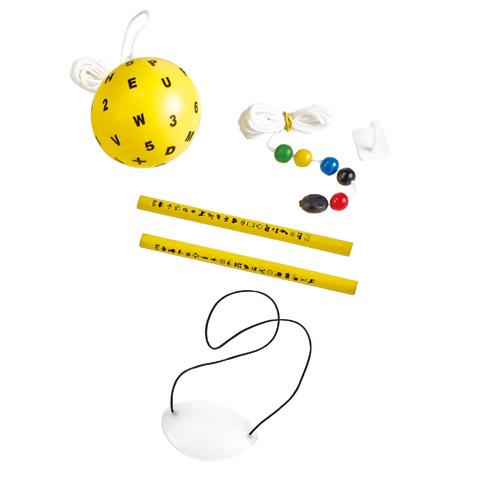
OCULOMOTOR PROCEDURES
Fixation - Rotation - Pursuit
They improve the motor skills of the visual system by organising space and pursuing a target.
PROCEDURE ACCOMODATIVE
Per aumentare il potere fusionale e la flessibilità dell’accomodazione e costruire controllo e consapevolezza del sistema accomodativo.
3 RED - GREEN POLYHEDRAL BOARDS
1 ANAGLYPHIC GOGGLE
Useful for developing the ability to move the focus point quickly, from near to far, while maintaining good eye coordination without diplopia and suppression. The tests are carried out using the anaglyphic goggle.
2 FUSION EXERCISE CARDS
1 BOARD WITH LIFESAVER RINGS
1 BOARD WITH RED-GREEN BARS
Useful for developing the ability to use the eyes in a coordinated way and achieve flexible interaction between the focusing system and the eye coordination system. The tests are carried out with the use of anaglyphic goggles.
1 MARSDEN TRAINING BALL
To develop awareness of spatial assessment and focusing skills used to improve accuracy and speed of tracking and turning movements.
2 PENCILS FOR TRAINING EXERCISES
For improving coordinated eye function over long periods.
1 BROCK STRING
For improved eye coordination and increased ability to move binocular vision from one point to another in space quickly and accurately.
1 OCCLUDER - EYE PATCH WITH ELASTIC CORD
For use in monocular assessments.

Ref. 08286
The lectern has the following features:
• Supports A4 and A3 sheets and books
• Smooth and rigid surface for writing and drawing
• Designed not to hinder the movement but to support the forearm in writing for both for right-and left-handed people,
• Its low slope support minimises sheets, book and/or pencils slippage
• A handle for easy carrying
• The upper part shows the correct positions to adopt and the incorrect ones to avoid; in addition, these drawings represent peripheral visual stimulation
• The supports feet are easily assembled by removing the protective film from the double-sided adhesive that is already applied.
The kit includes:
• ergonomic grip, pencil, functional instructions for the user, assembly instructions..
Top dimensions: 485 x 370 mm
Inclination: 15°
Total weight: 500 g
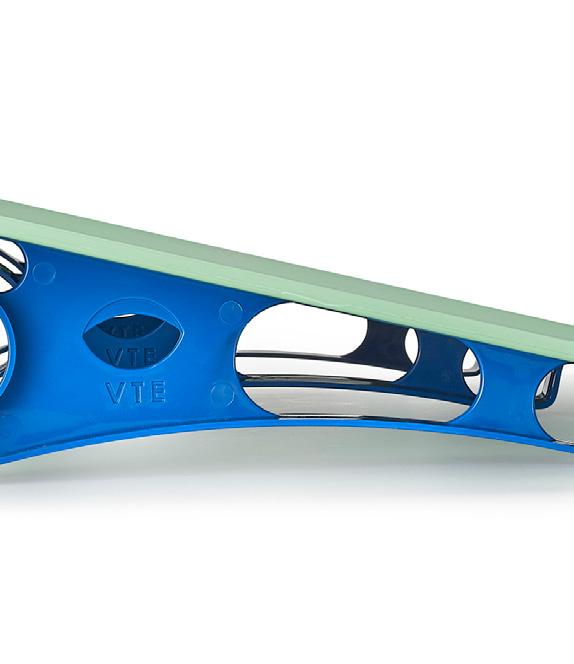
The inclined plane is suitable for use at school and home to ensure support for the correct angle during visual-cognitive exercise and to impose correct posture placement.


THE RULE OF THE NUMBER 3
The pen must be kept between thumb, index and middle index that acts as a support. The fingers form an equilateral triangle.
ERGONOMIC GRIP:
Used for fixation exercises. The ergonomic triangular silicone sleeve fits over pens or pencils for comfortable grip by the hand to support correct posture when writing. The triangular shape of the handle helps to maintain the correct grip of the pencil during drawing and writing activities. Has black alphabetic characters printed on the body pencil and the ergonomic grip.
Ref. 08286R/B
Pack:
2 pcs. Ergonomic grips - BLUE
2 pcs. Ergonomic grips - RED

The evaluation of the functional state of the subject consists of a series of tests that investigate the different abilities of the visual system in recognizing objects around it, such as visual acuity, contrast sensitivity and spatial localization. In order to maintain clear and comfortable binocular vision at all viewing distances, each individual requires a number of well-functioning skills:
• must be able to align the two eyes and maintain alignment for a prolonged period of time;
• must have accurate and efficient accommodation based on the request and must be able to sustain it comfortably over time;
• accommodation and convergence must interact appropriately
All this cannot ignore a state of good health of the visual organs.
Given the different visual abilities, it is necessary to adopt various types of tests, some of which provide a predominantly quantitative evaluation of visual performance, while others emphasize the qualitative aspect.
To obtain maximum information from visual skills tests, it is important to take note not only of the quantitative result of the performance produced but also of the quality of the response.
The evaluation of the visual system can be divided into three main moments:
1. Preliminary tests: they aim to provide mainly qualitative information about the degree of development of binocular integration and the degree of functioning of the sensorial, integrative motor systems.
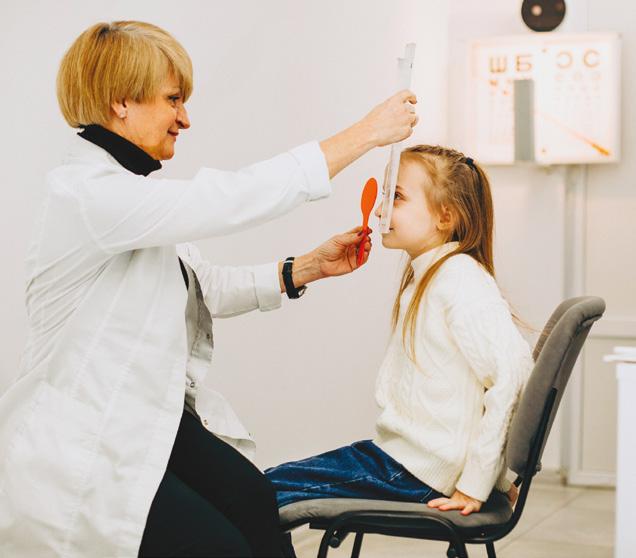
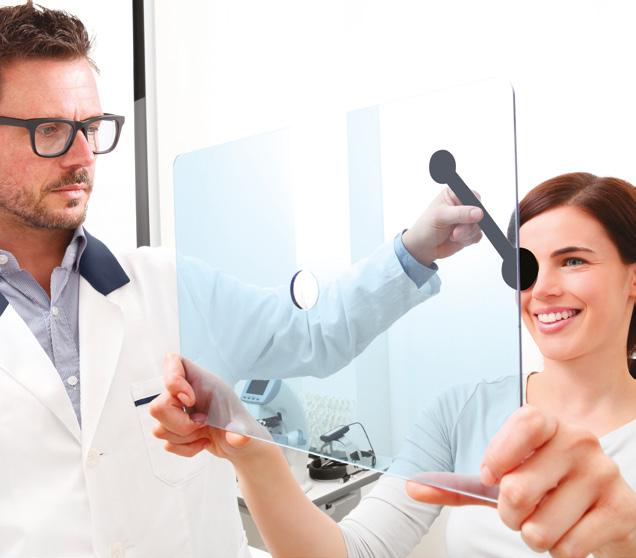


2. Phoropter tests: allow you to evaluate the subjective refraction of the eye. Through this instrument, it is possible to perform numerous visual tests thanks to the vast combination of auxiliary lenses that facilitate the realization of all possible refractive options that ca cannot be achieved through other analysis methods.

3. Analysis in free space: allows you to better observe the attitudes that the subject adopts during the analysis by providing qualitative information, reducing the sense of “claustrophobia” given by the phoropter, allowing a more natural posture of the body and eyes, as well as allowing a considerable increase in the peripheral field, more similar to the subject’s real visual needs.
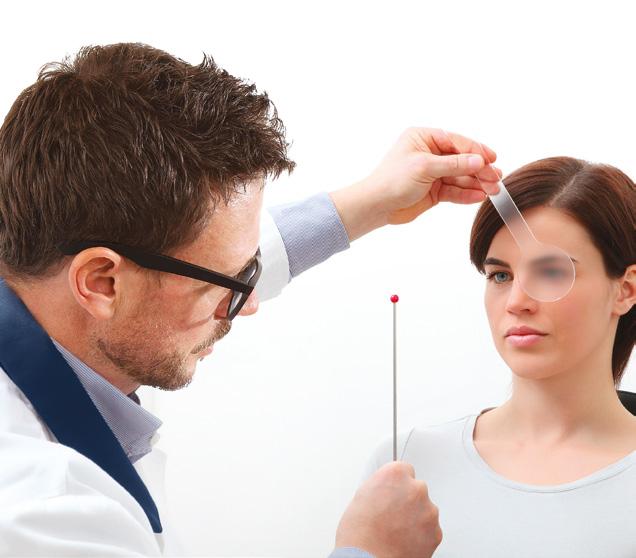


Berens Prism Bar - Vertical and horizontal bar

VERTICAL BAR
HORIZONTAL BAR

The prism dioptres are used to evaluate strabismus. With the use of cover testing it is possible to measure, in prism dioptres, phorias and tropias.
Ref. 08300
In a rigid protective case, complete with:
• 1 vertical bar with the following prism diopters:
1∆, 2∆, 3∆, 4∆, 5∆, 6∆, 8∆, 10∆, 12∆, 14∆, 16∆ , 18∆, 20∆, 25∆ .
• 1 horizontal bar with the following prism diopters:
1∆, 2∆, 4∆, 6∆, 8∆, 10∆, 12∆, 14∆, 16∆, 18∆, 20∆ , 25∆ , 30∆ , 35∆ , 40∆ .
Medical device compliant with EU Regulation no. 2017/745


For dynamic retinoscopy use in conjunction with the Wolff’s Target. The presence of positive and negative lenses allows to neutralize both main meridians.
If used in conjunction with a phoropter the field of view can be reduced by 70%.
Ref. 08304
In a rigid protective case, complete with:
• 1 red rack from -1.0D to -10.0D with additional sliding lens -0.5D and -10.0D
• 1 green rack from +1.0D to +10.0D with additional sliding lens +0.5D and +10.0D
Medical device compliant with EU Regulation no. 2017/745
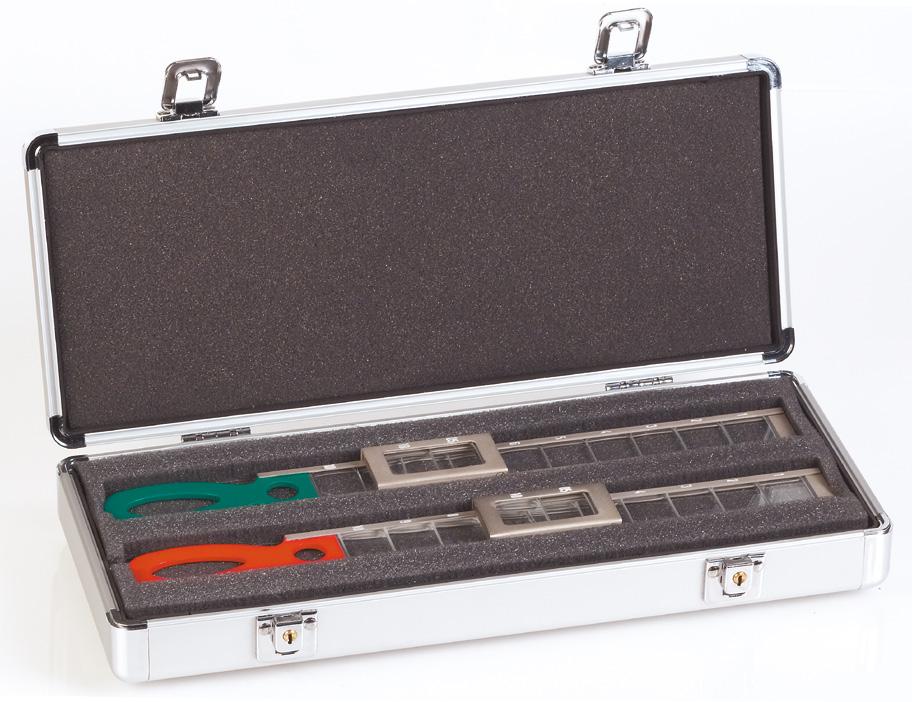
MATT WHITE WITH MIRROR

TRANSPARENT
Ref. 08346
Two plexiglass plates, transparent and matt, with a hole in the center (approx. 2 cm). They are used to assess which eye is the dominant eye in monocular fixation of a sight, from a distance and at the proximal distance using the mirror strip. It helps identify the eye on which to preferably place the filters and dissociating prisms during the execution of the preliminary tests.
N.B.: The transparency of the plexiglass allows the maintenance of the fixation of the aim at a distance while raising the arms in order to center the aim through the hole.
On the other hand, a matt plate, does not allow observation of the aim while raising the arms, thus increasing the probability of error in centering the examining eye.
Dimensions: 253x153 mm
2 pcs.

Instructions available in Italian, English, French, German, Spanish.

ISHIHARA COLOUR TESTS
38 PLATES Ref. 08400
Used principally by ophthalmologist.
24 PLATES Ref. 08401
Used principally for occupational screening.

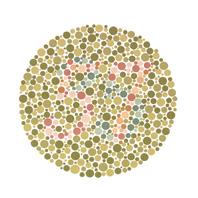

The Ishihara colour tests are:
• Internationally recognised
• Pseudoisochromatic plates
• Simple to use
• Speedy to use
• Efficient in detecting red/green colour vision deficiency
• Includes instruction booklet
To prevent colour fading and to keep hues sharp never expose plates to bright sunlight or leave pages open for any length of time.
Test should be conducted with light levels at 500-600 lux.
Medical device compliant with EU Regulation no. 2017/745
14 PLATES Ref. 08399
Used mainly for driving licence renewals.
10 PLATES Ref. 08402
Used principally for children and illiterates.


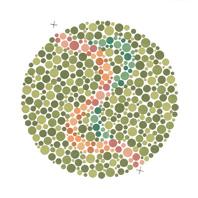
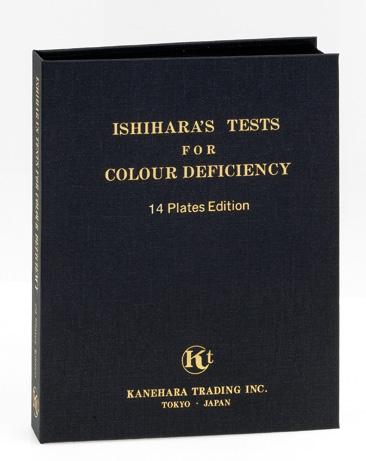
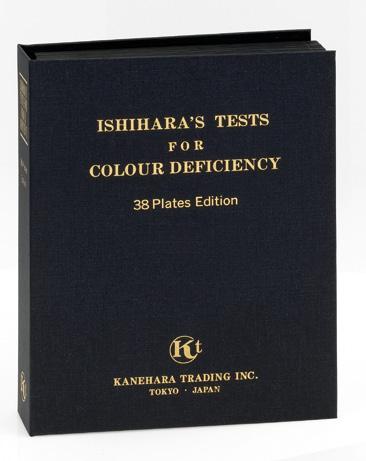
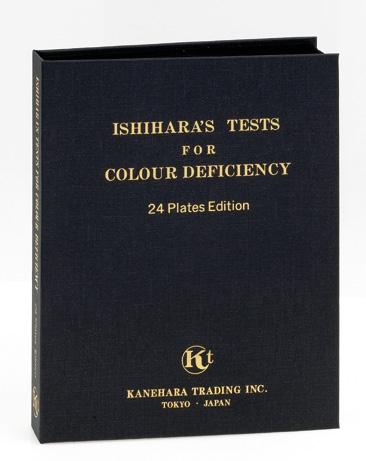

The development of Binocularity occurs gradually, and it is possible to divide it into different steps. Worth distinguished three phases and named them “degrees of development of binocular vision”:
1° degree - Simultaneous perception or Biocularity: the simultaneous perception of the two eyes without the possibility of binocular fusion. Through this phase it is possible to investigate the presence or absence of suspension or suppression and to detect heterophoria. Test example: Test with prism Von Graefe.
2° degree - Flat fusion or Binocularity: two images strike the two retinas in corresponding points, after having reached the occipital visual cortex, and are
associated in a single image that represents the fusion of the two primitive images. Test examples: Worth’s lights or Red Filter Test.
3° degree - Stereopsis: a visual-perceptive process which, starting from two slightly different monocular retinal images, leads to the sensation of depth. It occurs only at the level of the striated cortex where the re-elaboration of the information of the two eyes occurs. Examples of stereotests; Lang, Titmus, Butterfly.

Ref. 08307
Prism of 6 prismatic diopters (∆) useful to detect the first degree of biocularity.
The prism must be placed with a vertical base in front of one of the eyes while the person is fixing a point-like target projected from a distance. A prism of
1 pc.
Medical device compliant with EU Regulation no. 2017/745
this power cannot be compensated for by vertical fusion reserves, therefore, under normal conditions, the person should report vertical diplopia. Otherwise it could be a case of suppression. Before proceeding with further investigations, move the prism to the other eye or flip the base
The red occluder determine a level of dissociation between the two eyes. The orange filter, less dissociating than the red one, helps the practitioner to more adequately quantify the prescriptive value for restoring single binocular vision.The purpose of the test is to evaluate the fusional stability (hence
the quality) of binocular vision at different distances and in different gaze positions. The red filter test can highlight the presence or absence of suspension or suppression of the monolateral and alternating type. It is recommended to use the penlight and the black occluder to carry out the test.


pc.
Ref. 08317
White penlight 135 mm - 1 pc. 2 batteries AAA 1,5V included.
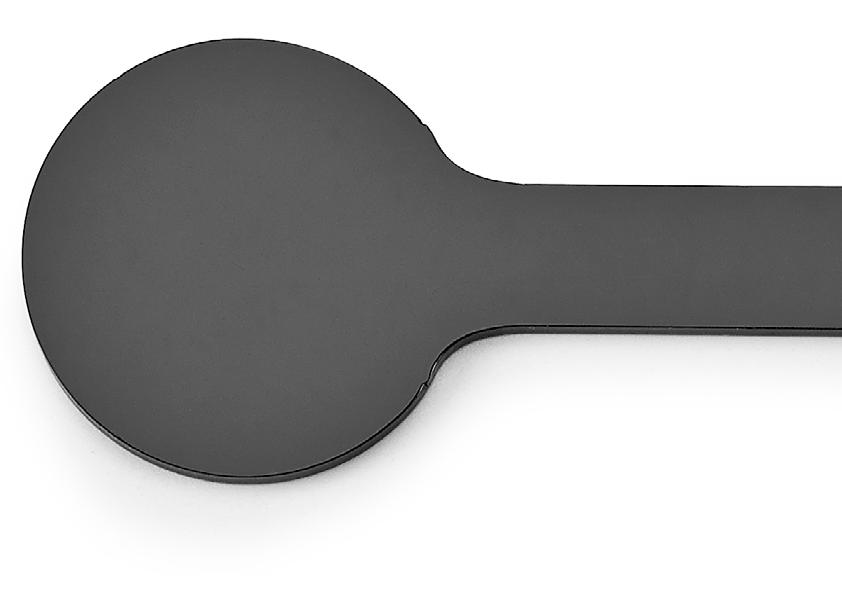

Ref. 08305
Flashlight with 4 coloured dots (one red, two green and one white) with a diameter of 6 mm each and anaglyph glasses with red-green filters. Test performed to assess the presence of flat binocular fusion and its stability in different gaze positions from near and to detect the presence or absence of
monolateral and/or alternating suspension or suppression. The test can be performed while wearing prescription lenses or with trial lenses, in low lighting conditions. Worth’s test should also be performed in cases of reduced visual acuity that does not improve with the pinhole test.

Flashlight battery type D not included.
Ref. 08308
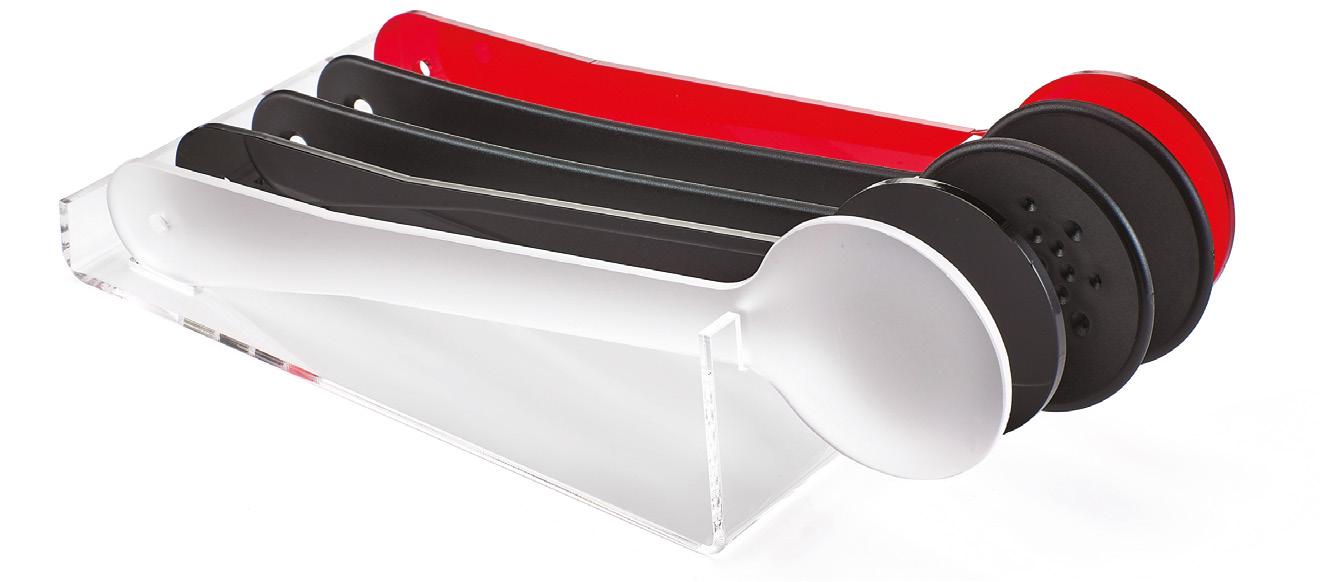
Set of 5 occluders with plexiglass display: 1 red occluder, 1 frosted occluder, 1 black paddle occluder, 1 multi pinhole occluder, 1 black sniny occluder.
Dimensions: Display: 245x120 mm Occluders: Ø 60 mm x 240 mm
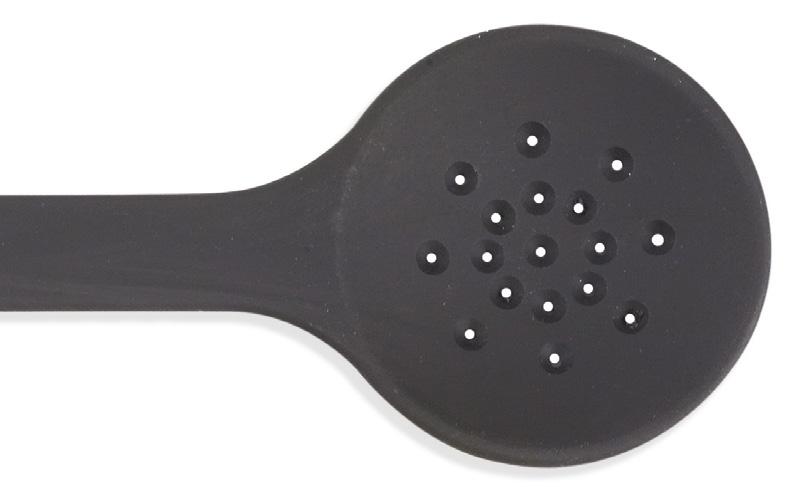
Holes Ø 1.4 mm
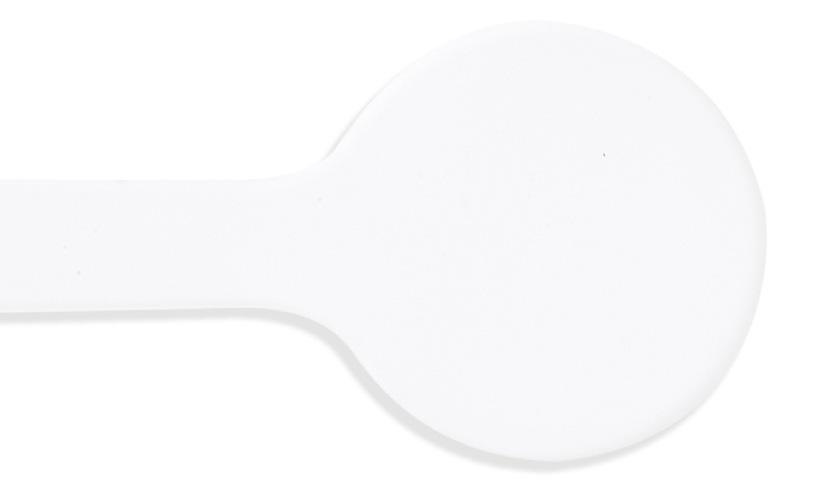

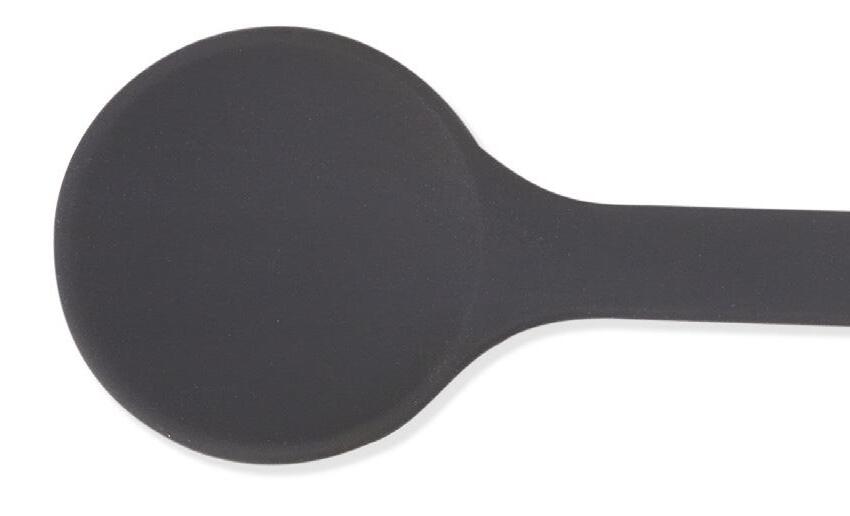


Ref. 08348
Orange occluder
In situations of diplopia, the search for the prismatic value that compensates for the ocular deviation in the considered gaze position should be sought by minimizing the dissociation between the two eyes. The orange filter was created for this purpose because it is less dissociating than the classic red filter used to identify the maximum deviation as it has a high chromatic dissociation. Using the orange filter can help the clinician to more adequately quantify the prescribable value for the restoration of single binocular vision since, as is well known, the more the degree of dissociation between the two eyes increases, the greater the angle of deviation found will be.
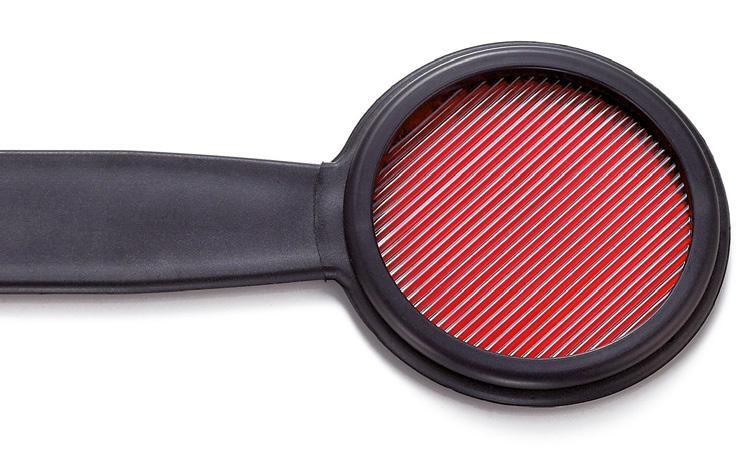

Ref. 08347
Matt white occluder
Used so as not to alter the perception of ambient light intensity and not to create pupil dilation. Occlusion is however total and the test appears more ecological.
Ref. 08316
Red Maddox Rod with grooves at 45° from the centre of the lens.
Used in combination with prisms to measure horizontal and vertical phorias from near and from far.
Length: 220 mm
Lens diameter: 50 mm
Medical device compliant with EU Regulation no. 2017/745
FLY STEREOPSIS TEST
Ref. 08412
• Rapid test for amblyopia and strabismus
• Traditional Fly picture testing Gross Stereopsis
• 10 levels of 4 circle disparity for critical testing
• Graded circle test from 400 seconds down to 20 seconds (with no monocular clues)
• Fine stereopsis (400 to 100 seconds of arc) measuring 3 Gross levels of disparity using the internationally recognised Symbols - Square, Circle, Plus and Triangle
• Ideal for both children and adults including non-reading and non-verbal
• New easy-to-hold booklet
• Answer key on back cover
• Instructions included. Includes 1 adult and 1 child’s polarized goggles

STEREO BUTTERFLY TEST
Ref. 08413
• Rapid test for amblyopia and strabismus
• Traditional Butterfly picture testing Gross Stereopsis
• 10 levels of 4 circle disparity for critical testing
• Graded circle test from 400 seconds down to 20 seconds (with no monocular clues)
• Fine stereopsis (400 to 100 seconds of arc) measuring 3 Gross levels of disparity using the internationally recognised Symbols - Square, Circle, Plus and Triangle
• Ideal for both children and adults including non-reading and non-verbal
• New easy-to-hold booklet
• Answer key on back cover
• Instructions included.
• Includes 1 adult and 1 child’s polarized goggles
Medical device compliant with EU Regulation no. 2017/745
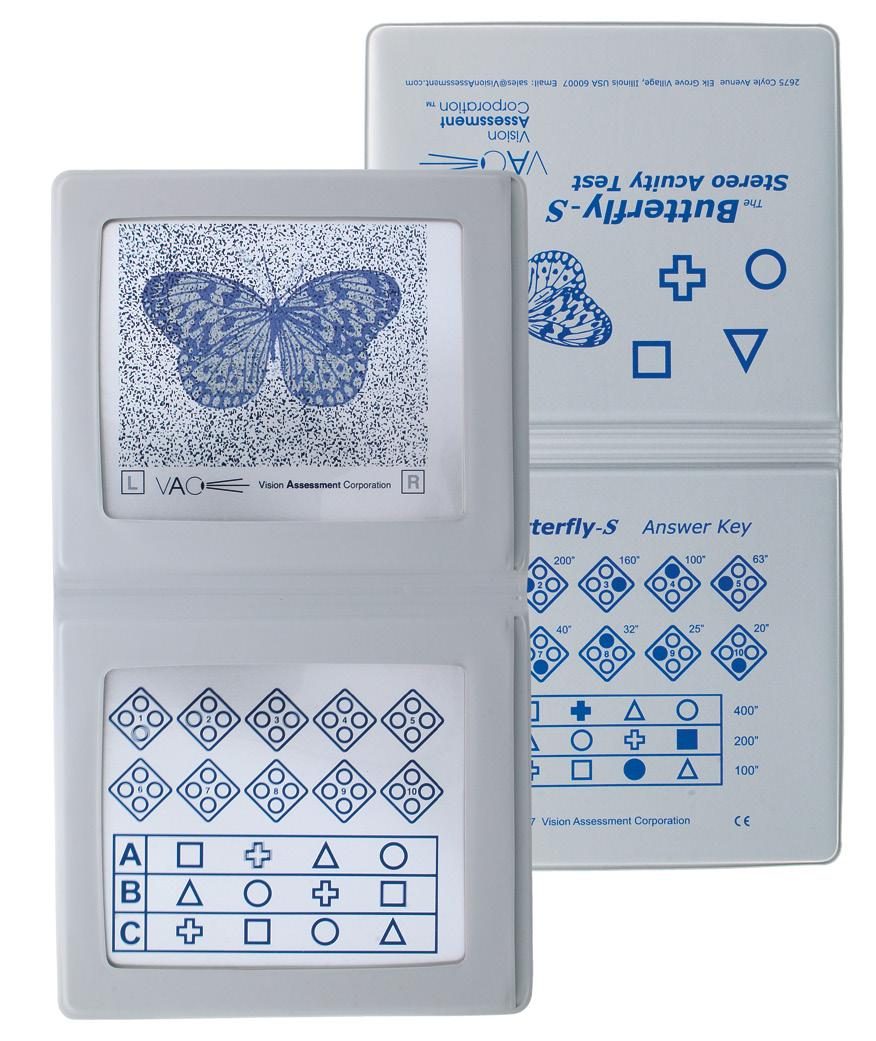
RANDOM DOT STEREOPSIS TEST
Ref. 08414
• Rapid test for amblyopia and strabismus
• Ideal for children and adults who are nonreaders and non-verbal
• Expanded Random Dot Symbols Test - Square, Circle, Plus and Triangle (400, 200, 100 seconds of arc).
• Graded circle test to 12.5 seconds of arc with no monocular clues
• New improved booklet
• Answer key on back cover
• Instructions included.
Includes 1 adult and 1 child’s polarized goggles
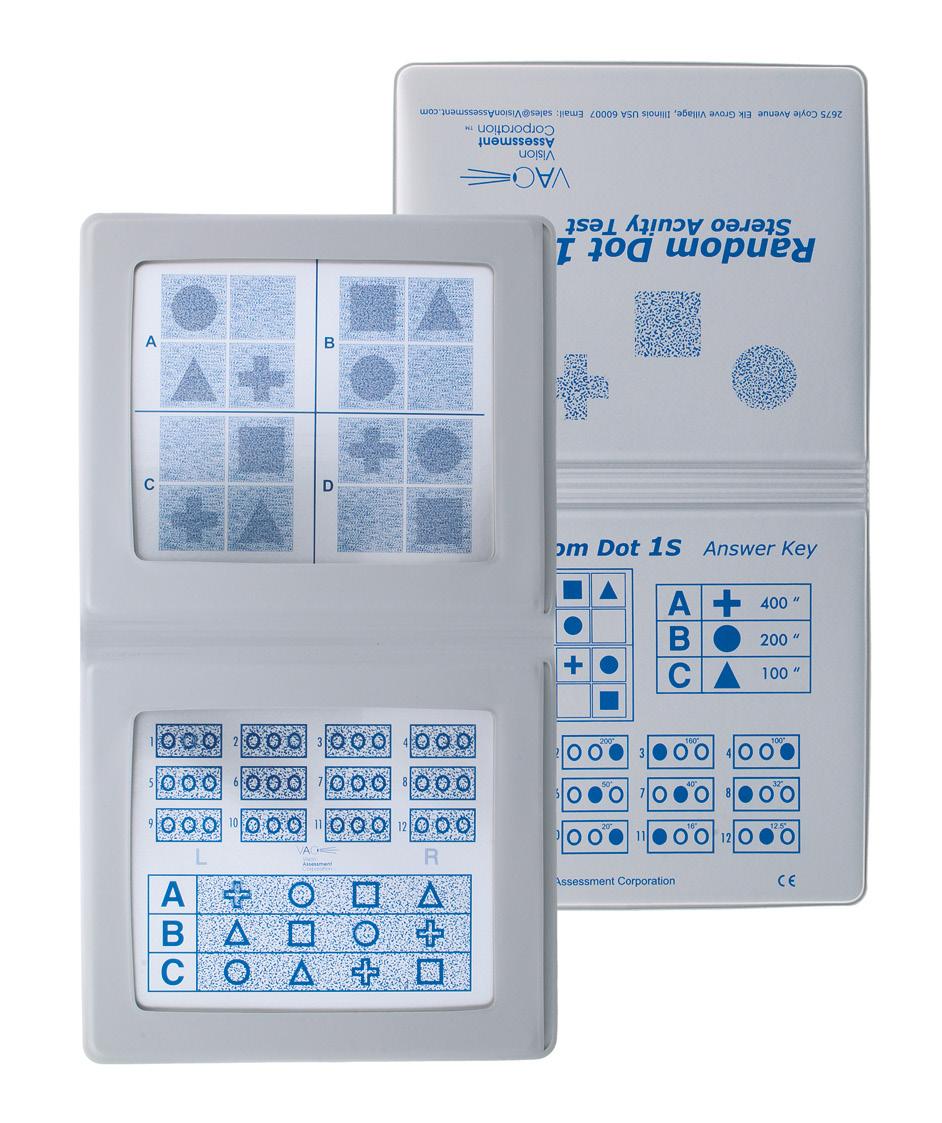
Ref. 08412.2
Children
1 pc.
Ref. 08412.1
Adult
1 pc.
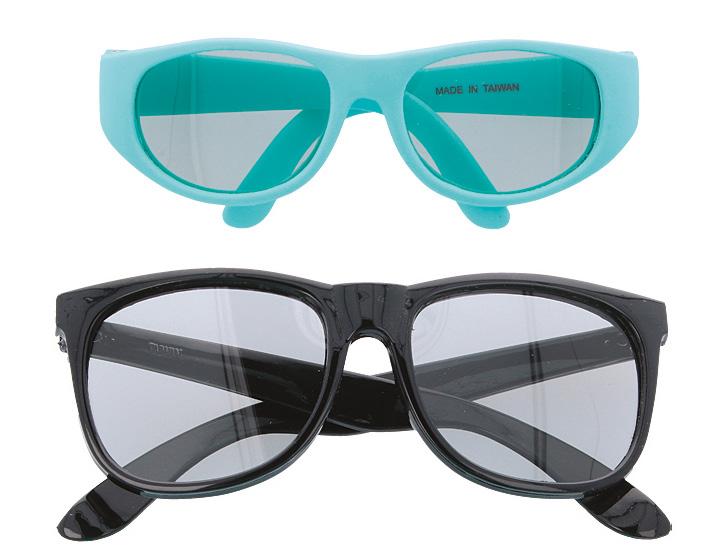
Medical device compliant with EU Regulation no. 2017/745
The LANG STEREOTEST® is a rapid test for the screening of stereoscopic vision disorders in children. This test provides early diagnosis without the use of polarized glasses.
Lang Stereotest® I-R
Ref. 08393
Three random point stereo objects with different disparities CAT 1200’’, STAR 600’’ and CAR 400’’.
Test distance 30-40 cm
Dimensions: 14.5x9.5 cm with rounded corners.
New features of the LANG STEREOTEST® I-R:
• INCREASED SHARPNESS AND UNIFORMITY OF THE PATTERN a 400’’ disparity, making the gradation between objects more harmonious.
• REDUCED SINGLE EYE RECOGNITION. In monocular vision these stereograms do not reveal any contours, while in binocular vision the areas that produce a horizontal disparity are seen in relief.
• ROUNDED CORNERS
• BRIEF INSTRUCTIONS IN ENGLISH ON THE BACK OF THE TEST CARD,WITH SCHEMATIC DIAGRAM FOR USE.
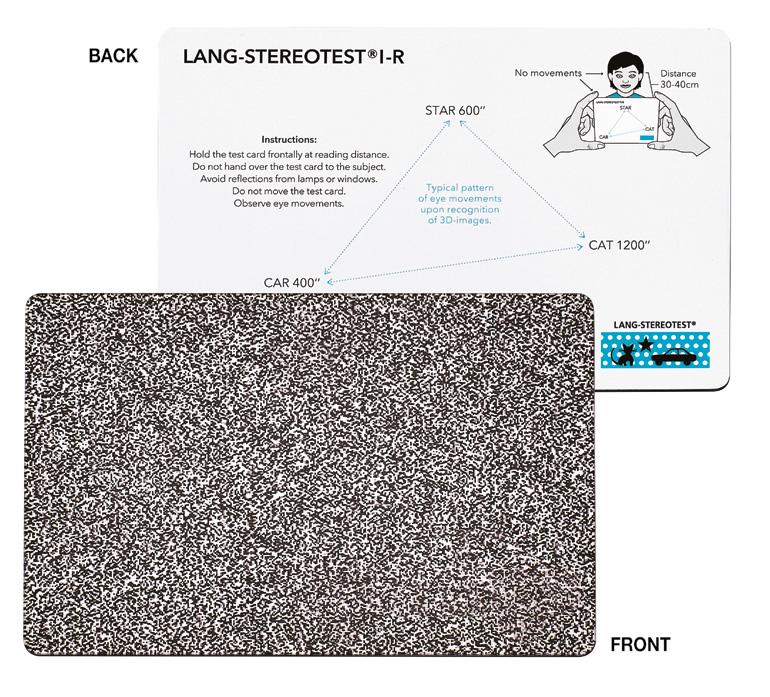
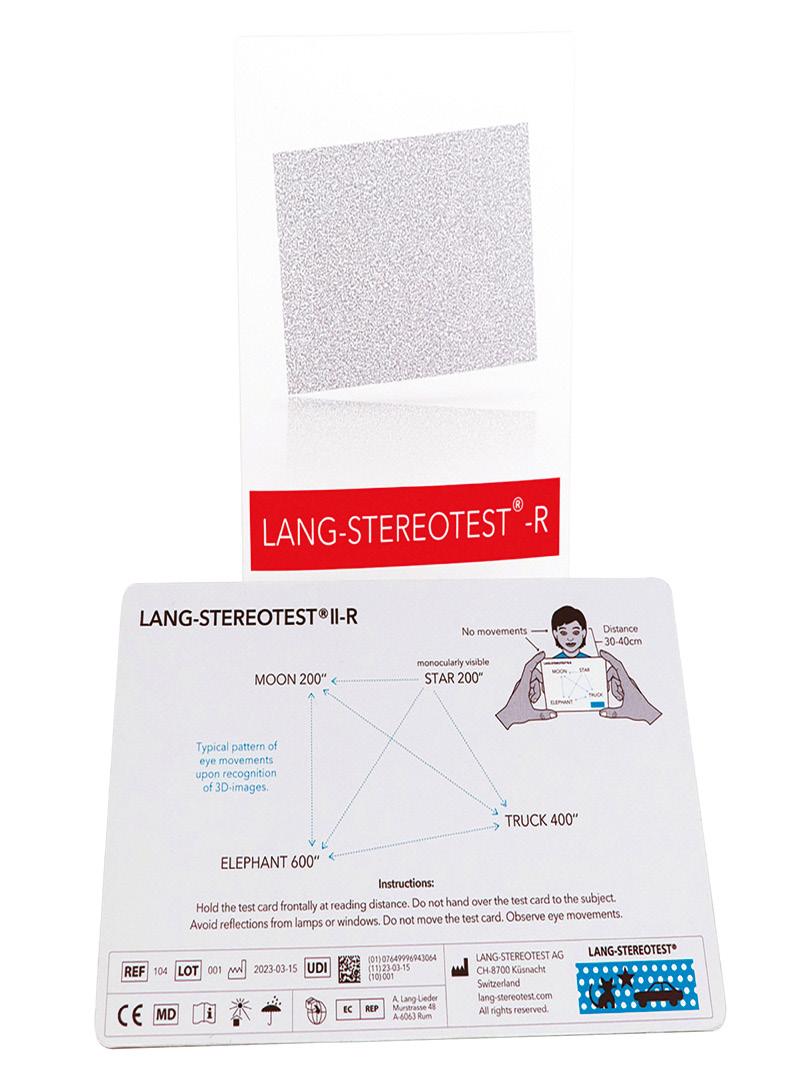
Lang Stereotest® II-R
Ref. 08394
Four 3D transverse disparity test figures ELEPHANT 600’’, JEEP 400’’, MOON 200’’ and STAR 200’’ (always visible).
Test distance 30-40 cm.
Size: 14.5 cm x 9.5 cm with rounded corners.
New features of the LANG STEREOTEST® II-R
• IMPROVED OPTICAL AND PRINT QUALITY
• THREE FIGURES VISIBLE ONLY BINOCULARLY (moon, jeep and elephant) AND ONE SINGLE VISIBLE FIGURE (star). The disparities are chosen to be finer
• ROUNDED CORNERS
• BRIEF INSTRUCTIONS IN ENGLISH ON THE BACK OF THE TEST SHEET, WITH SCHEMATIC DIAGRAM FOR CORRECT USE (specular arrangement of stereophonic objects and typical pattern of eye movements in stereophonic subjects.
Medical device compliant with EU Regulation no. 2017/745
TEDDY BEAR TEST
Ref. 08417

Accurate and fast test for the determination of amblyopia and strabismus. Also used for convergence and divergence exercises.
• Teddy Bear Vectograph has a range of 2,600 seconds of arc stereopsis depth.
• Teddy Bear & Blocks orientation at +30 to +1500 seconds of arc and -25 to -1100 seconds of arc.
• Used to strengthen the binocularity system and to provide Base-In & BaseOut training
• 16-diopter range for base-in (divergence) training and 24-diopter range for base-out (convergence) training for a total accommodation range of 40 diopters.
• Set includes: Protective binder with pen, Doctor and Patient Manuals, Therapy Record Form & Standard Polarized Goggle.
Complete with polarized spectacles for adult (Ref. 08412.1) 1 pc.
Amsler Test
1. Se richiesto, fare questo test con gli occhiali da lettura indossati tenendo il foglio a 30 cm.
30 cm
2. Coprite un occhio con una mano e fissate il punto bianco al centro del test per qualche secondo.
3. Eseguite il test sull’altro occhio.
GENERAL INSTRUCTIONS
1. If prescribed, take this test with reading glasses on, and view it at 11 inches (30 cm).
INSTRUCCIONES DE USO
30 cm
2. Cover one eye with your hand and look at the white solid square in the center.
3. Test the opposite eye in a similar way.
4. If any lines or squares appear wavy, distorted or otherwise irregular or if a blind area appears during the testing of either eye, consult a licensed eye specialist. 11 in
4. Se notate che qualche linea o quadrato appaiono ondulate, distorte, irregolari o se durante il test doveste percepire delle zone scure, consultate appena possibile uno specialista.
GEBRAUCHSANWEISUNG
1. Führen Sie diesen Test, wenn nötig, mit Lesebrille und halten Sie einen Abstand von 30 cm. vom Blatt.
30 cm
2. Bedecken Sie ein Auge mit einer Hand und fixieren Sie den Weißpunkt in der Mitte des Tests für einige Sekunden.
3. Testen Sie dann das andere Auge.
4. Wenn Sie bemerken, dass einige Zeilen oder Quadrate wellig, deformiert, unregelmäßig erscheinen, oder während des Tests sollte man dunklen Bereiche wahrnehmen, bitte wenden Sie sich an einen Spezialisten.
1. Si necesario, hacer la prueba con gafas de lectura y sosteniendo la hoja a 30 cm.
2. Cubrir un ojo con una mano y fijar el punto blanco en el centro de la prueba durante unos segundos.
3. Hacer la prueba de la misma forma en el otro ojo.
4. Si durante la prueba alguna línea o el cuadrado parecen ondulados, distorsionados, irregulares o si percibe áreas oscuras, consulte a un especialista.
MODE D’EMPLOI
1. Si necessaire, effectuez ce test avec lunettes de
Instructions available in Italian, English, French, German, Spanish.
TO QUALITATIVELY TEST THE CENTRAL VISUAL FIELD
Ref. 08409
Heavy card consisting of a white grid on a black background to check changes in the macula.
It is a qualitative, fast-performing technique to test the central visual field (10°) for the presence of age-related macular degeneration (ARMD) by identifying a relative or absolute scotoma.
The subject is asked to describe what he sees, if the lines distort or disappear, while the fixation remains stable on the central point.
The test must be performed without wearing bifocal or multifocal lenses, occluding one eye at a time and with natural lighting.
Dimensions: 130 x 175 mm
2 pcs.

Ref. 08325
BINOCULAR CONFIRMATION TEST
Used to verify that the dioptre previously tested on both eyes is adequate. With two sliding lenses for optical centring, in protective case.
• Powers: ± 0.25D
• Powers: ± 0.50D
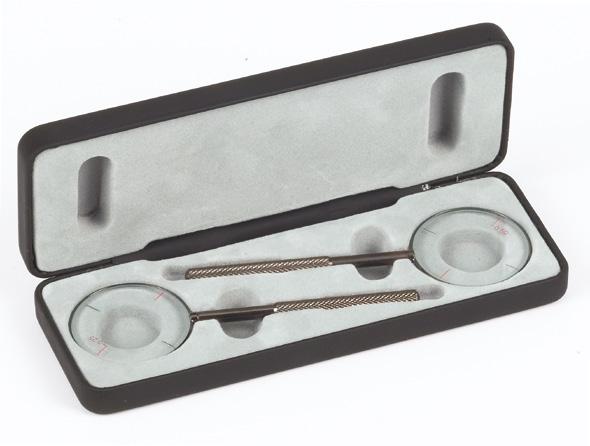
Ref. 08330
CROSS CYLINDERS
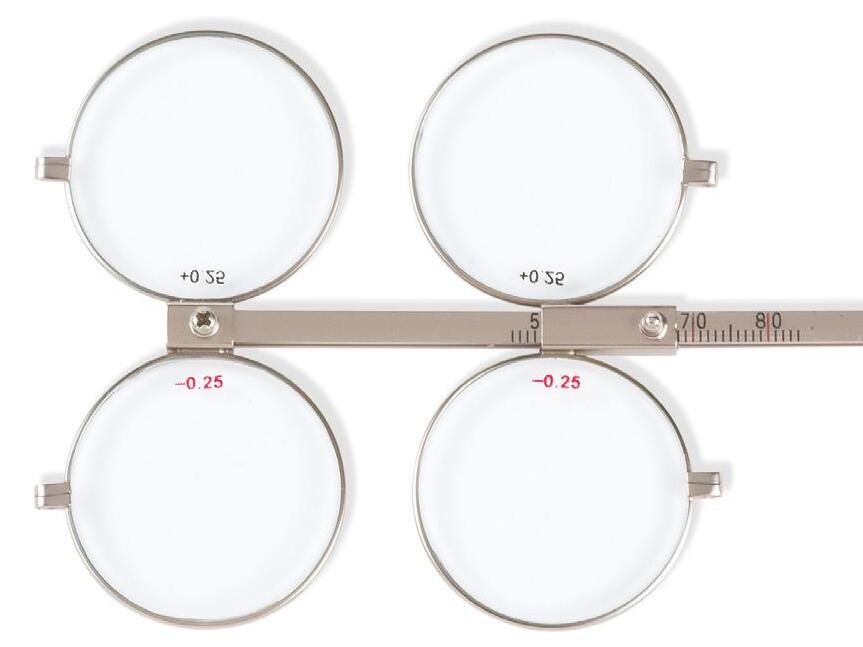
Binocular confirmation test

Cross cylinders
Used to refine axis and power of astigmatism cylinders. With knurled handles in protective case.
• Powers: ± 0.25D
• Powers: ± 0.50D
Medical device compliant with EU Regulation no. 2017/745










Ref. 08331
Flipper to place lenses for test purposes
Ref. 08332
Confirmation Test ± 0.25D
Ref. 08333
Confirmation Test ± 0.50D
Ref. 08334
Confirmation Test ± 0.75D
Ref. 08335
Confirmation Test ± 1.00D
Ref. 08336
Confirmation Test ± 1.50D
Ref. 08337
Confirmation Test ± 2.00D
Ref. 08341
Confirmation Test ± 2.50D
Ref. 08342
Confirmation Test ± 3.00D
Ref. 08338
Flipper with polarized lenses and Red-Green filters
Medical device compliant with EU Regulation no. 2017/745
Ref. 08339
Set of 6 flippers with display
• 5 flippers with sphere lenses in optical glass. Powers: ± 0.25D, ± 0.50D, ± 1.00D, ± 1.50D, ± 2.00D
• 1 flipper with polarized lenses and Red-Green filters.
Ref. 08329
Set of 9 flippers with display
• 8 flippers with sphere lenses in optical glass. Powers: ± 0.25D, ± 0.50D, ± 0.75D, ± 1.00D, ± 1.50D, ± 2.00D, ± 2.50D, ± 3.00D
• 1 flipper with polarized lenses and Red-Green filters.

Mainly used for exercises on the flexibility of convergence/divergence. As the prismatic power increases so does the difficulty of the exercise Used in the test of binocular balance provided for by the 21-point procedure.
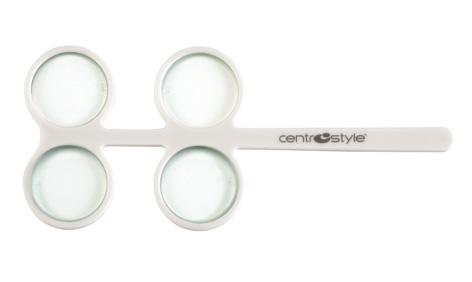
Ref. 08322
Prismatic flipper 4BI / 6BE
4 BI means (2 BI+2 BI on one side).
6 BO means (3 BO+3 BO on the other side).
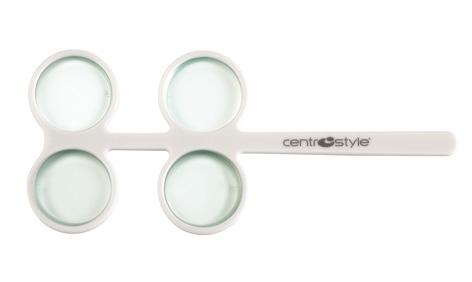
Ref. 08323
Prismatic flipper 8BI / 12BE
8 BI means (4 BI+4 BI on one side).
12 BO means (6 BO+6 BO on the other side).
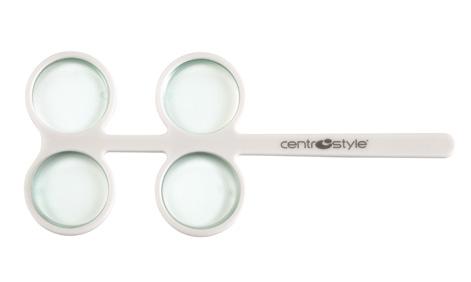
Ref. 08324
Prismatic flipper 10BI / 10BE
10 BI means (5 BI+5 BI on one side).
10 BO means (5 BO+5 BO on the other side).
Used especially in cases of anisometropia to balance the optical compensation detected with the subjective examination monocular distance view.

Ref. 08327
Prismatic flipper 3BA+3BB / 3BB+3BA



08327 Medical device compliant with EU Regulation no. 2017/745


15 34 110

• PD: 50 mm
• Weight: 16 gr.
Adjustable Silicone Tube
Three lens holders suitable for standard ø 38 mm trial set lenses.

• COMFORTABLE AND LIGHTWEIGHT
Frame without any metal parts Wrap-around temples
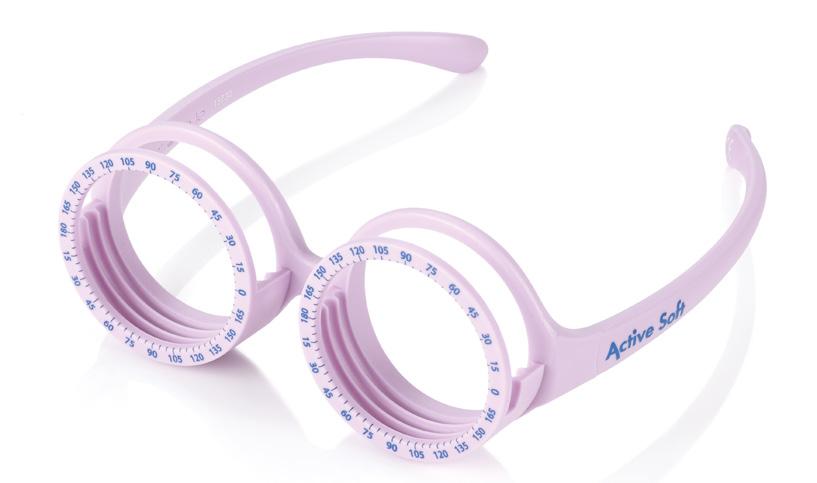
The design of the frame and its hypoallergenic material have been manufactured to offer the best possible visual comfort during eye examination. The wrap-around temples give a good fit to the child’s face.
• OPTICAL QUALITY
The bridge is centred and splayed, thereby helping to maintain the optical centres. The frame has three external lens holders suitable for all ø 38 mm trial set lenses. Determination of the astigmatism axis is according to the TABO system.

Ultra-light - For optometrical refractions - Tabo System
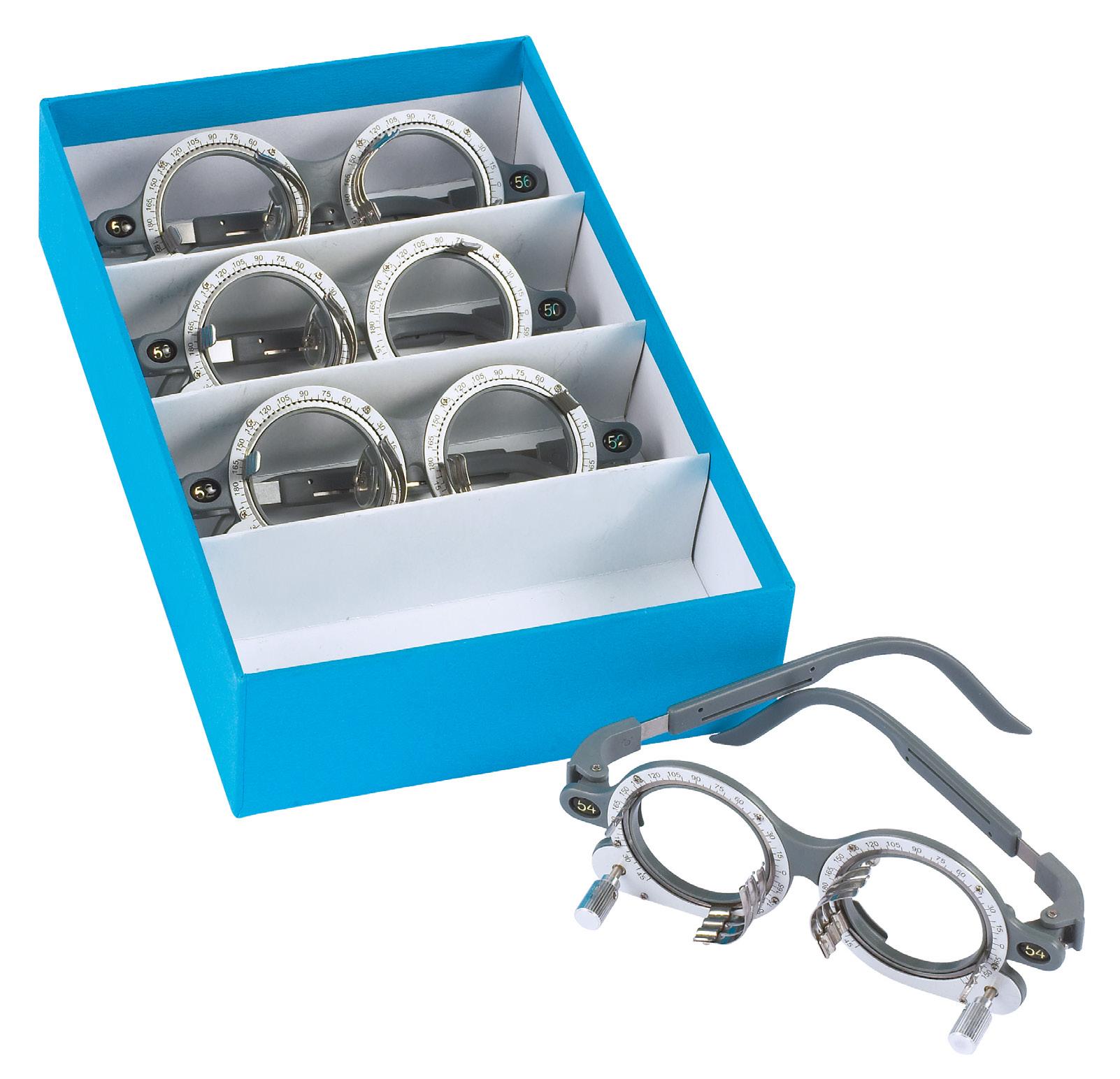
Ref. 08215
Display box with 4 children’s trial frames. PD range 50-52-54-56 mm
• Lightweight, non-allergic structure, suitable for all standard Ø 38 mm trial lenses.
• Standard axis rotation.
• Comfort bridge.
• Flex temples, length adjustable from 90 to 130 mm.
• 4 lens holders each eye: 3 external rotating and 1 fixed internal.
• Manual lens axis rotation, scale in 5° increments. Peso: 30 g
1. - Pupillary distance adjustment
2. - Left temple pantoscopic adjustment
3. - Left lens axis adjustment
4. - Bridge height adjustment
5. - Right lens axis adjustment
6. - Right temple pantoscopic adjustment
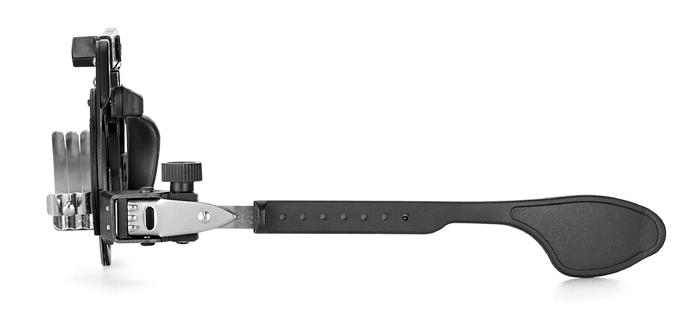



Ref. 08220
Non-allergic, light weight and strong, for optometrical refractions.
Suitable for all standard Ø 38 mm trial lenses. Standard axis rotation.
• Determination of the astigmatism axis is according to the TABO system.
• Temples adjustable in length and inclination.
• PD adjustment from 54 to 70 mm with selector in 2 mm increments.
Weight: 49 g
PD adjustable from 54 to 70 mm
• Adjustable pads.
• Bridge height adjustable (+4 mm).
• Temple length adjustable from 95 to 135 mm.
• Temple pantoscopic ±10° from the horizontal by means of a screw.
• 4 lens holders each eye: 3 external rotating and 1 fixed internal.
• Manual lens axis rotation, scale in 5° increments
1. PD adjustment, right and left eye
2. Bridge height adjustment
3. Corneal vertex distance adjustment
4. PD measurement scale
5. Scale for reading the axis position and base position
6. Scale for measuring the corneal vertex distance (VD)
7. Temple inclination adjustment
8. Adjustable temple ends
9. Temple length slide adjustment
10. Knob for setting the axis position and base position
11. Lens holder
12. Nose pad on rack
38 mm
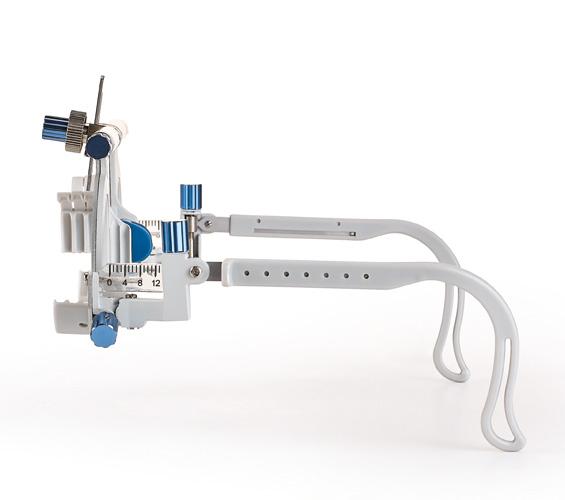

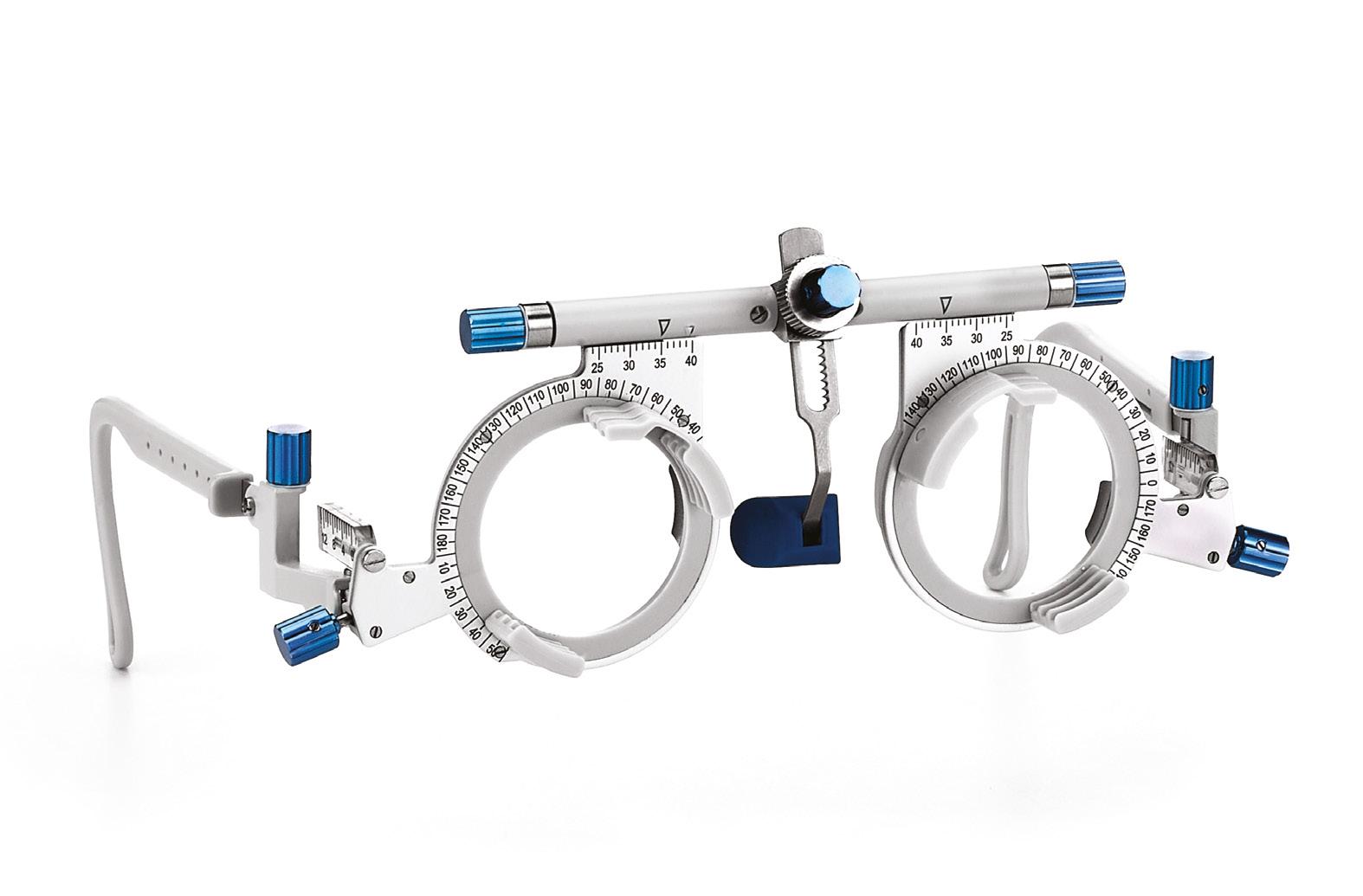
Ref. 08228
Lightweight structure, suitable for all standard Ø 38 mm trial lenses.
• Standard axis rotation
• Back vertex distance measurement gauge
• Independent monocular adjustments for optical centres
• Vertical and projection bridge adjustments
• Temple length and inclination adjustable
• PD adjustable range 50 to 80 mm
• Right and left PD adjustable independently from 25 to 40 mm
• Bridge height adjustable by up to 23 mm
• Temple adjustable in length from 100 to 135 mm and in inclination from +6° to -15°
• 5 lens holders each eye: 3 external rotating by 360° and 2 fixed internal
• Axis rotation is continuously adjustable, in increments of 5°.
Weight: 55 g
PD adjustable from 50 to 80 mm
Ref. 08228.1 Standard nose pad - 1 pc.
Ref. 08228.2 Small nose pad - 1 pc.
Ref. 08228.3 Complete right temple - 1 pc.
Ref. 08228.4 Complete left temple - 1 pc.
Ref. 08228.5 Metal bridge - 1 pc.
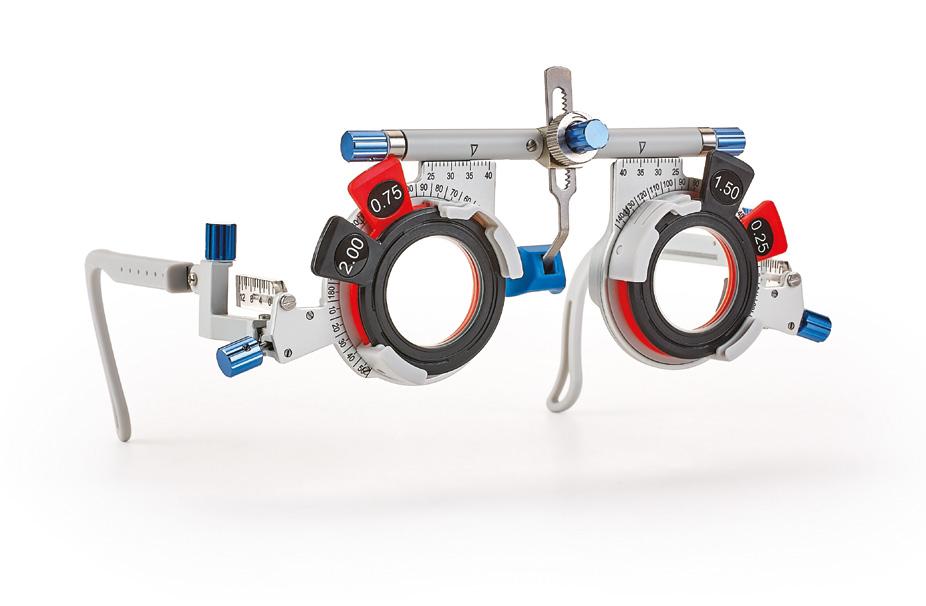

1 - PD adjustment, right eye
2 - Bridge height adjustment
3 - PD adjustment, left eye
4 - Left temple inclination adjustment
5 - Left lens axis adjustment
6 - Vertical height adjustment
7 - Right lens axis adjustment
8 - Right temple inclination adjustment
9 - Back Vertex distance gauge (both sides)
10 - Temple length slide adjustment
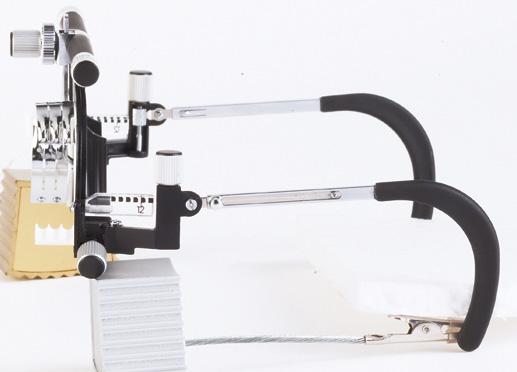


Ref. 08225
LIGHTWEIGHT TRIAL FRAME
Lightweight, non-allergic structure, suitable for all standard Ø 38 mm trial lenses.
• Standard axis rotation.
• Back vertex distance measurement gauge.
• Independent monocular adjustments for optical centres.
• Vertical and projection bridge adjustments.
• Temple length and inclination adjustable.
• PD adjustable range 48 to 80 mm.
• Right and left PD adjustable independently from 25 to 40 mm.
• Bridge height adjustable by up to 15 mm.
• Temples adjustable in length from 98 to 135 mm.
• Temple inclination adjustable from +6° to -15°.
• 5 lens holders each eye: 3 external rotating by 360° and 2 fixed internal.
• Axis rotation is continuously adjustable, in increments of 5°.
Weight: 58 g
1 - PD adjustment, right eye
2 - Bridge height adjustment
3 - PD adjustment, left eye
4 - Left temple inclination adjustment
5 - Left lens axis adjustment
6 - Locking screw - left axis adjustment
7 - Bridge projection adjustment
8 - Locking screw - right axis adjustment
9 - Right lens axis rotation
10 - Right temple inclination adjustment


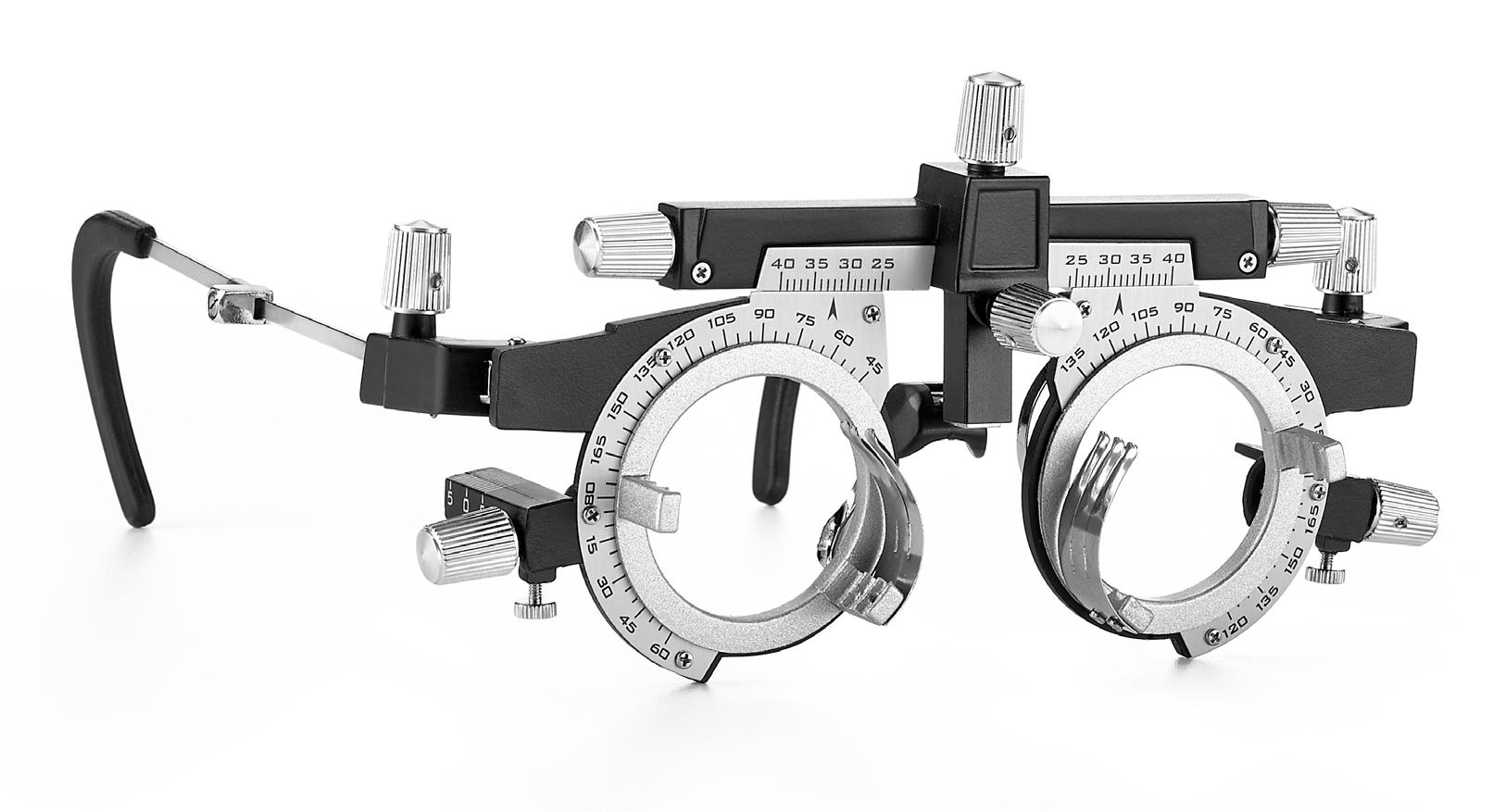

Ref. 08224
Lightweight, non-allergic structure, suitable for all standard Ø 38 mm trial lenses.
Standard axis rotation.
Independent monocular adjustments for optical centres. Vertical and projection bridge adjustments for corrected vertex distances.
Temple length and inclination adjustable.
Weight: 72 g
PD adjustable from 48 to 80 mm
• PD adjustable from 48 to 80 mm
• Right and left PD adjustable independently from 24 to 40 mm.
• Bridge height adjustable by up to 13 mm.
• Bridge projection distance adjustable by up to 16 mm.
• Temples adjustable in length from 98 to 135 mm
• Temple inclination adjustment from +6° to -20°.
• 4 lens holders: 3 external and 1 internal.
• External axis rotation is continuously adjustable, scale at 5°increments.
Medical device compliant with EU Regulation no. 2017/745
1 - PD adjustment, right and left eye
2 - Bridge height adjustment
3 - Corneal vertex distance adjustment
4 - PD measurement scale
5 - Scale for reading the axis position and base position
6 - Scale for measuring the c orneal vertex distance (VD)
7 - Temple inclination adjustment
8 - Adjustable temple ends
9 - Temple length slide adjustment
10 - Knob for setting the axis position and base position
11 - Lens holder
12 - Polarizing filter
13 - Nose pad on rack
14 - Knob for turning the polarizing filter for 45° and 135°


38 mm
Ref. 08234
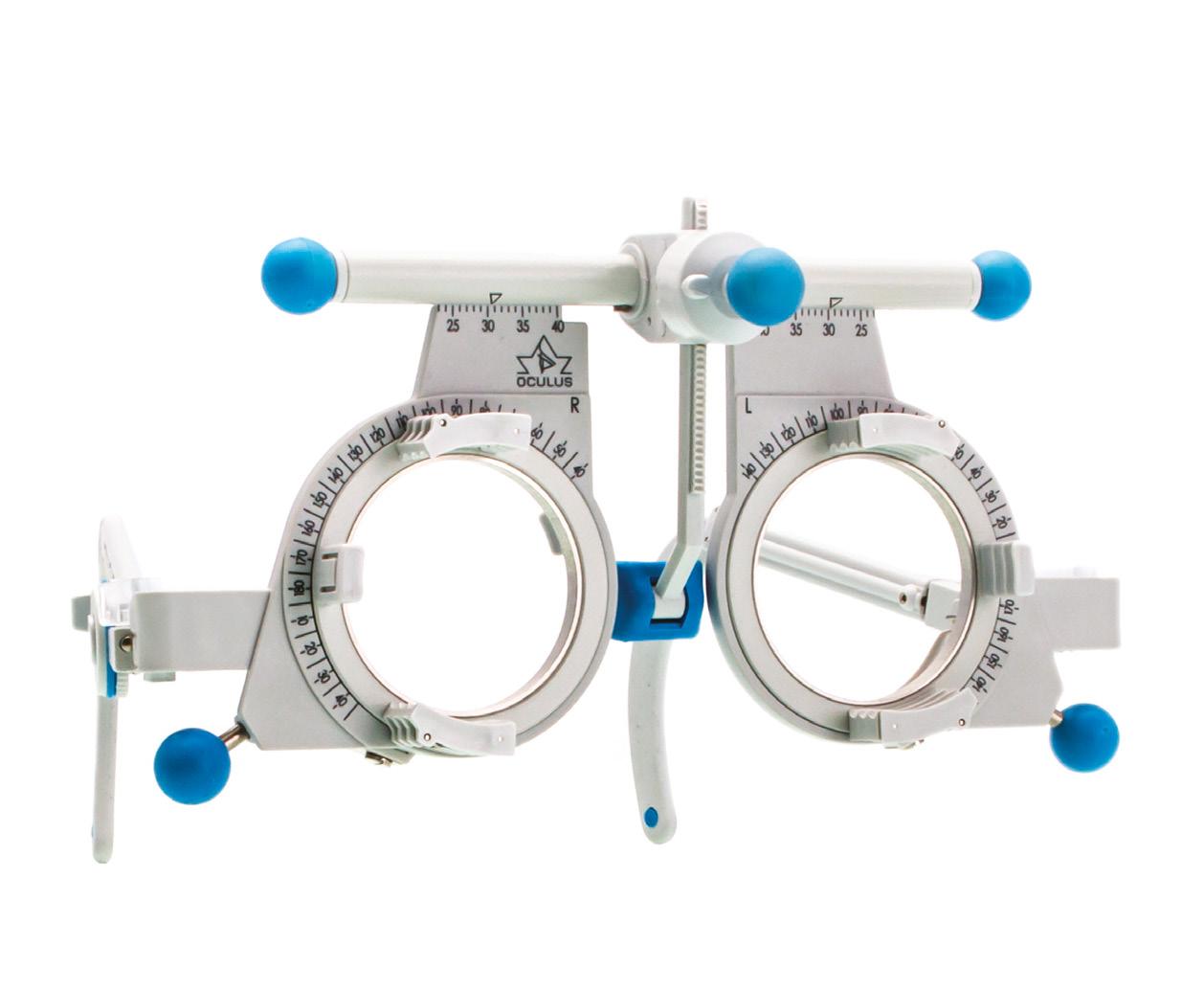
PD adjustable from 48 to 80 mm
Lightweight, non-allergic structure, suitable for all standard Ø 38 mm trial lenses.
• Standard axis rotation
• Back vertex distance measurement gauge
• Independent monocular adjustments for optical centres
• Vertical and projection bridge adjustments
• Temple length and inclination adjustable
• PD adjustable range 48 to 80 mm
• Right and left PD adjustable independently from 24 to 40 mm
• Bridge height adjustable by up to 15 mm
• Temple adjustable in length from 98 to 135 mm and in inclination from +6° to -15°
• 5 lens holders each eye: 3 external rotating by 360° and 2 fixed internal
• Axis rotation is continuously adjustable, in increments of 5°.
Weight: 63 g (without polarizing filters)
Ref. 08234.1B Blue nose pad - 1 pc.
Ref. 08234.1G Grey nose pad - 1 pc
Ref. 08235 Linear polarizing filter (1 pair)
Ref. 08236 Circular polarizing filter (1 pair)


1 - PD adjustment, right and left eye
2 - Bridge height adjustment
3 - Corneal vertex distance adjustment
4 - PD measurement scale
5 - Scale for reading the axis position and base position
6 - Scale for measuring the c orneal vertex distance (VD)
7 - Temple inclination adjustment
8 - Adjustable temple tips
9 - Temple length slide adjustment
10 - Knob for setting the axis position and base position
11 - Lens holder
12 - Nose pad on rack
38 mm
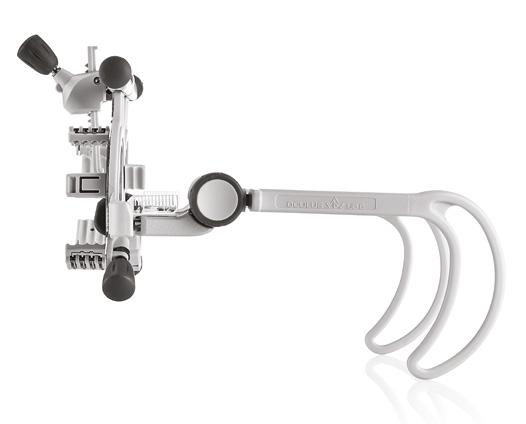


Ref. 08238
PD adjustable from 48 to 80 mm
Lightweight, non-allergic structure, suitable for all standard Ø 38 mm trial lenses.
• Determination of the astigmatism axis according to the TABO system
• Back vertex distance measurement gauge
• Independent monocular adjustments for optical centres
• Vertical and projection bridge adjustments
• Temple length and inclination adjustable
• PD adjustable range 48 to 80 mm
• Right and left PD adjustable independently from 24 to 40 mm
• Bridge height adjustable by up to 15 mm
• Temple adjustable in length from 98 to 135 mm and in inclination from +6° to -15°
• 6 lens holders each eye: 4 external rotating by 360° and 2 fixed internal
• Axis rotation is continuously adjustable, in increments of 5°.
Weight: 63 g (without polarizing filters)

Ref. 08251
236 meniscus lenses in carrying case.
Lenses in optical glass with refraction index of 1.523.
• 35 pairs of positive sphere lenses from +0.12D to +20.00D
• 35 pairs of negative sphere lenses from -0.12D to -20.00D
• 19 pairs of positive cylinder lenses from +0.12D to +6.00D
• 19 pairs of negative cylinder lenses from -0.12D to -6.00D
• 10 prisms from 1Δ to 10Δ (the lens base is indicated by the notch near the handle).
• 10 supplementary lenses: Maddox Rod white (2 pieces) - Grid - Pinhole - OccluderStenopeic slot - Red filter - Green filter - Clear glassOpaque glass.
All the inside lens curves are the same to guarantee a consistent vertex distance.
The rims are made from polycarbonate and are coloured red for minus powers and black for plus powers and grey for prisms and supplementary lenses.
Case dimensions: 530 x 400 x 100 mm
Weight: 5.1 kg
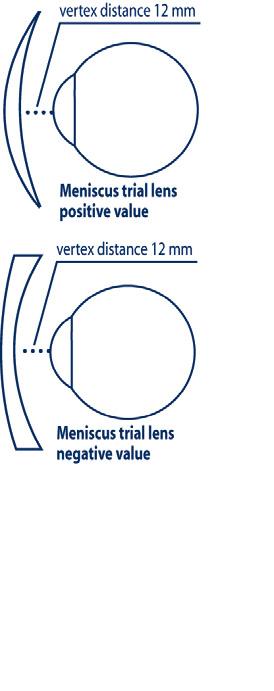
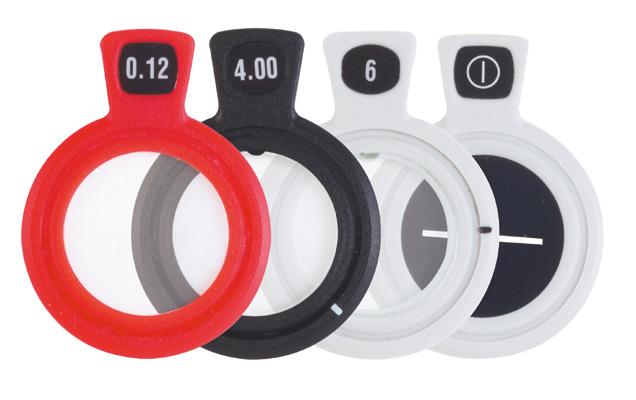

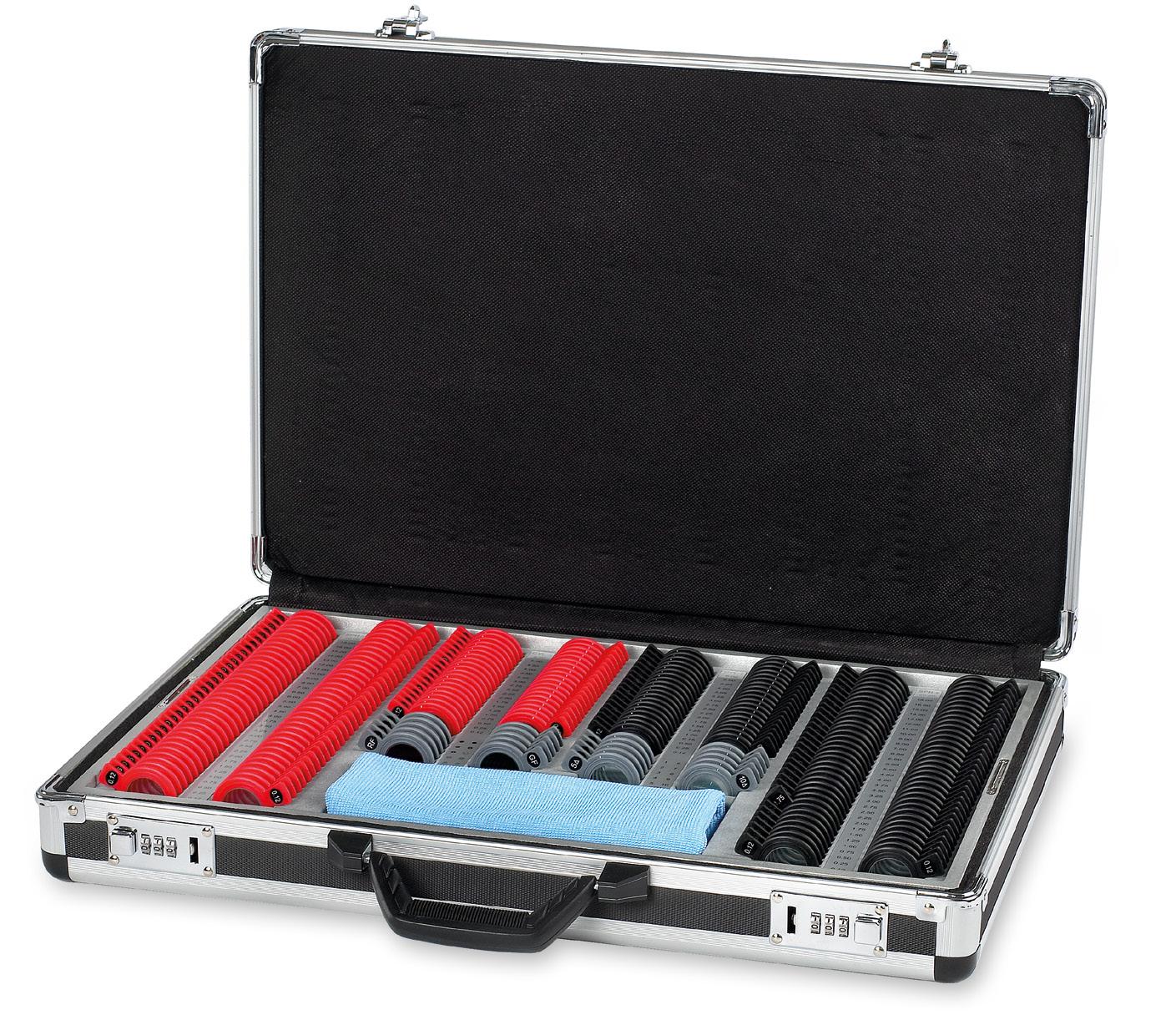
Ref. 08260
232 plain lenses in carrying case with removable tray. Lenses in optical glass with refraction index of 1.523. Thin lenses with traditional flat bi-concave and bi-convex curves.
• 34 pairs of positive sphere lenses from +0.12D to +20.00D
• 34 pairs of negative sphere lenses from -0.12D to -20.00D
• 19 pairs of positive cylinder lenses from +0.12D to +6.00D
• 19 pairs of negative cylinder lenses from -0.12D to -6.00D
• 10 prisms from 1Δ to 10Δ (the lens base is indicated by the notch near the handle).
• 10 supplementary lenses: Maddox Rod white - Pinhole (2 pcs.) - Occluder (2 pcs.)Stenopeic slot - Red filter - Green filter - Clear glassOpaque glass.
The rims are made from ABS plastic and are coloured red for minus powers and black for plus powers and grey for prisms and supplementary lenses.
Dimensions:
Case: 555 x 370 x 95 mm
Tray: 520 x 340 x 35 mm
Weight: 4 kg

(not included in Ref. 08260)
Ref. 08260/0.25PRIS 0.25∆ - 1 pc.
Ref. 08260/0.50PRIS 0.50∆ - 1 pc.
Ref. 08260/0.75PRIS 0.75∆ - 1 pc.
Ref. 08260/POL Linear polarized lens 45°-135° - 1 pair
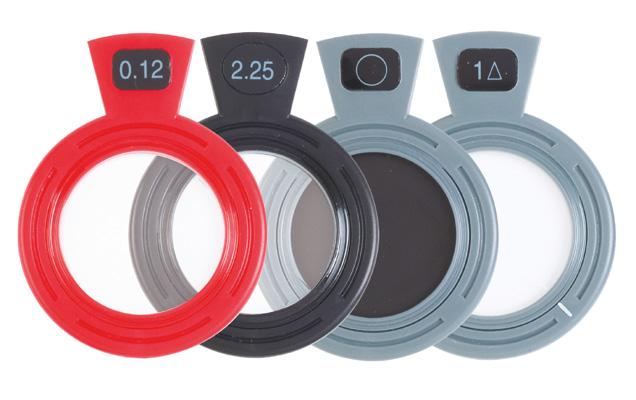

Ref. 08261
232 plain lenses Ø 38 mm in optical glass with refraction index of 1.523.
Removable tray.
High dioptrical power thin lenses.
• 34 pairs of positive sphere lenses from +0.12D to +20.00D
• 34 pairs of negative sphere lenses from -0.12D to -20.00D
• 19 pairs of positive cylinder lenses from +0.12D to +6.00D
• 19 pairs of negative cylinder lenses from -0.12D to -6.00D
• 10 prisms from 1Δ to 10Δ (the lens base is indicated by the notch near the handle).
• 10 supplementary lenses: Maddox Rod white - Pinhole (2 pcs.) - Occluder (2 pcs.)Stenopeic slot - Red filter - Green filter - Clear glassOpaque glass.
The rims are made of metal and are coloured red for minus powers and black for plus powers and grey for prisms and supplementary lenses.
Medical device compliant with EU Regulation no. 2017/745

Dimensions:
Case: 555 x 370 x 95 mm
Tray: 520 x 340 x 35 mm
Weight: 5.6 kg

260 plain lenses with metal ring Ø 38 mm in carrying case

260 LENSES WITH ANTIREFLECTIVE COATING
REMOVABLE TRAY
Ref. 08267
Test case containing 260 flat lenses Ø 38 mm in optical glass with refraction index of 1.523
Dimensions:
Case: 370 x 280 x 90 mm
LENSES WITH GREY METAL RING
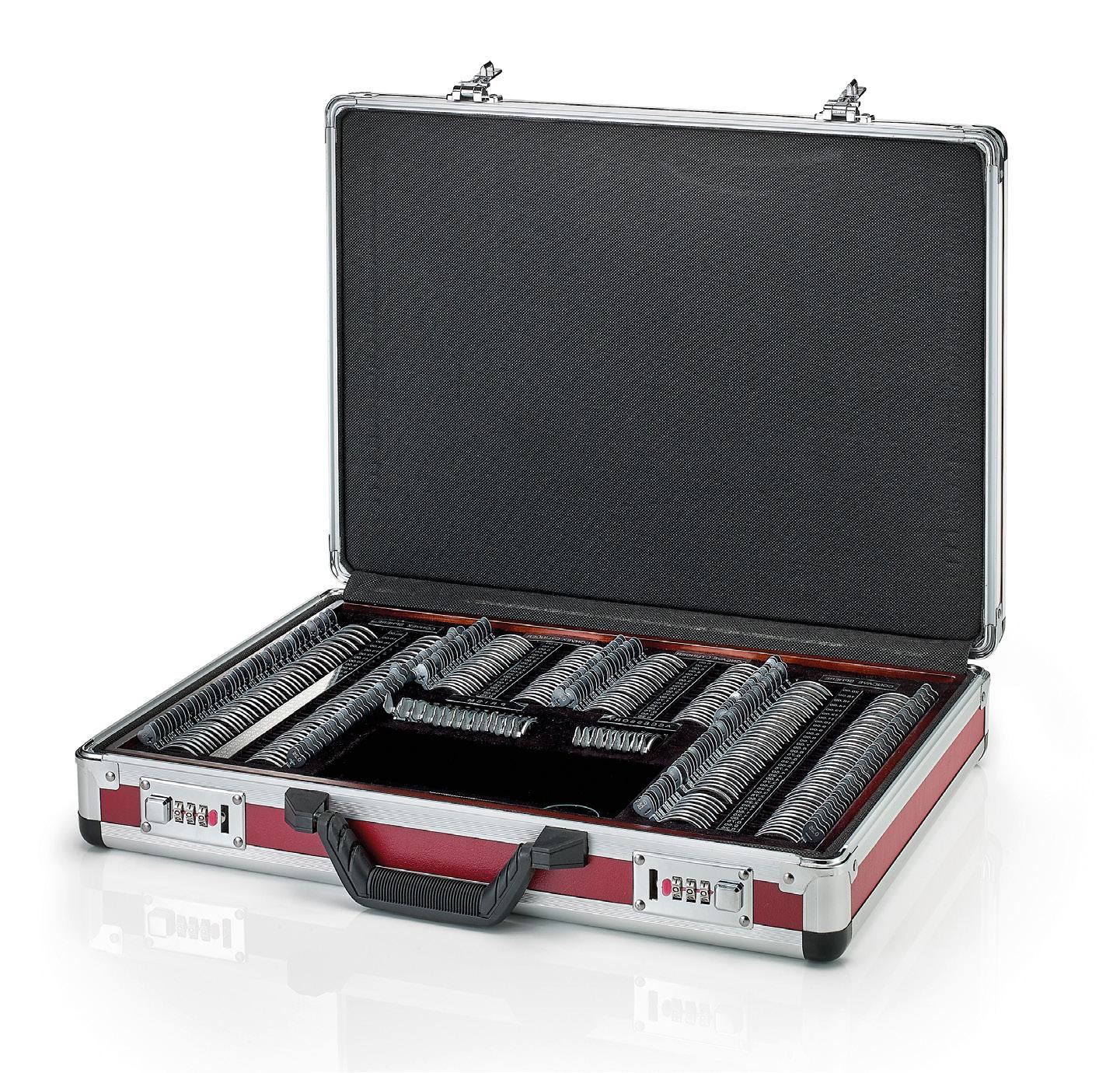
High dioptrical power thin lenses
• 34 positive spherical lens pairs from +0.25D to +20.00D
• 34 negative spherical lens pairs from - 0.25D to - 20.00D
• 20 positive cylindrical lens pairs + 0.25D to + 6.00D
• 20 negative cylindrical lens pairs from - 0.25D to - 6.00D
• 14 prismatic lenses from 0.50D to 10D (the base of the lens are indicated by the notch near the handle)
• 10 accessory lenses: Maddox rod white - Stenopeic hole 1.0 - Stenopeic hole
1.5 - Occluder - Stenopeic slot - Red filter - Green filterClear glass - Cross-Cylinder - 0.25D
Tray: 345 X 250 X 30,5 mm
Weight: 6.3 kg
Medical device compliant with EU Regulation no. 2017/745

90 metal rim plain lenses Ø 38 mm in carrying case
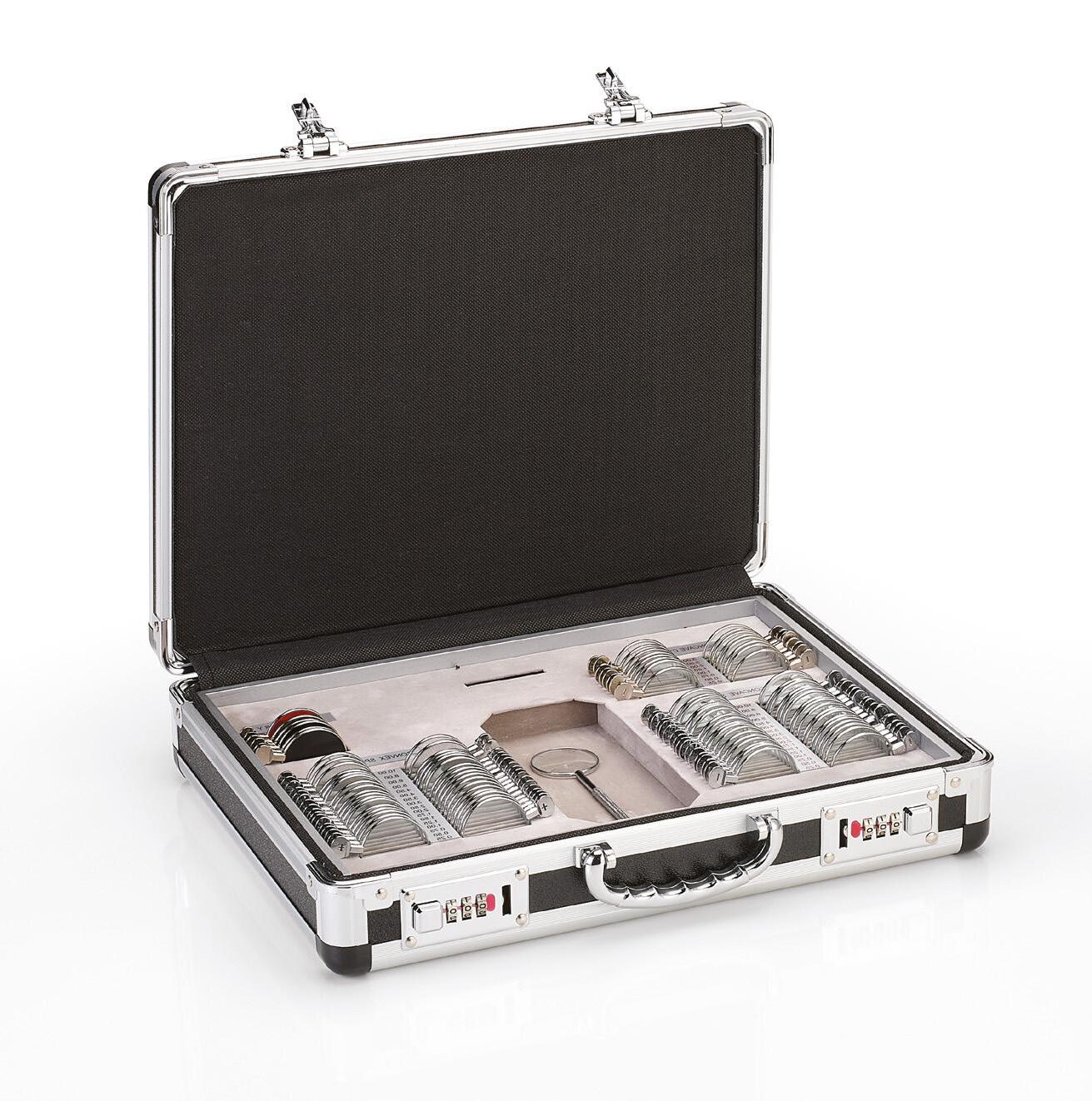
Ref. 08262
90 plain lenses Ø 38 mm in optical glass with refraction index of 1.523.
Removable tray.
• 17 pairs of positive sphere lenses from +0.25D to +10.00D
• 17 pairs of negative sphere lenses from -0.25D to -10.00D
• 8 pairs of negative cylinder lenses from -0.25D to -3.00D
• 7 supplementary lenses: Maddox Red - Pinhole - Occluder - Stenopeic slotRed filter - Green filter - Cross cylinder -0,25D. The rims are made of silvered metal.
Lens trail included in the suitcase for eye check/home care Ref. 08269

Dimensions:
Case: 370 x 280 x 90 mm
Tray: 345 x 250 x 30,5 mm
Weight: 3.3 kg
Medical device compliant with EU Regulation no. 2017/745

Designed to hold a selection of items ideal for an in-home visual exam or for screenings outside the office. It also contains eyewear maintenance and adjustment tools consisting of a selection of screws, nose pads, pliers and screwdrivers most used in daily practice.

Ref. 08269 Contains:
For eyesight testing
Ref. 08262 Regular trial lens set with 90 lenses
Ref. 08311 Red occluder
Ref. 08312 Frosted occluder
Ref. 08313 Black occlude
Ref. 08317 Pen light
Ref. 08333 Confirmation Test Visus +/-0.50D
Ref. 04961 Multifunction ruler
Ref. 04959 Plastic PD ruler with black occluder
Ref. 08427 Reading chart 3 m distance with “E” letters
Dimensions: 555x370x95 mm
Weight: 5.5 kg
Tablet not included
TABLET NOT INCLUDED
For eyewear maintenance
Ref. 03250N Easy Move inclination plier
Ref. 03722 Screw holding tweezer
Ref. 02257 Ball-bearing screwdriver
Ref. 03546N Hard metal inclined side cutter
Ref. 03200N Easy move holding plier
Ref. 00299 Stainless steel screws for flex hinges
Ref. 00410 Self-tapping stainless steel screws M1.2
Ref. 00412 Self-tapping stainless steel screws M1.4
Ref. 00341 Nickel-silver screws for nose pads M1,0
Ref. 01466 Symmetrical screw fixing
silicone nose pads 14,5 mm
Ref. 01461 Symmetrical push-on silicone nose pads 14,5 mm
14 metal rim progressive AR coated lenses Ø 38 mm in carrying case
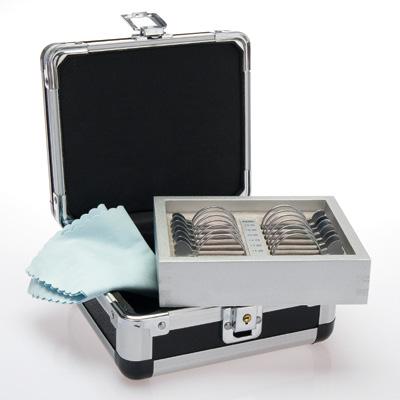
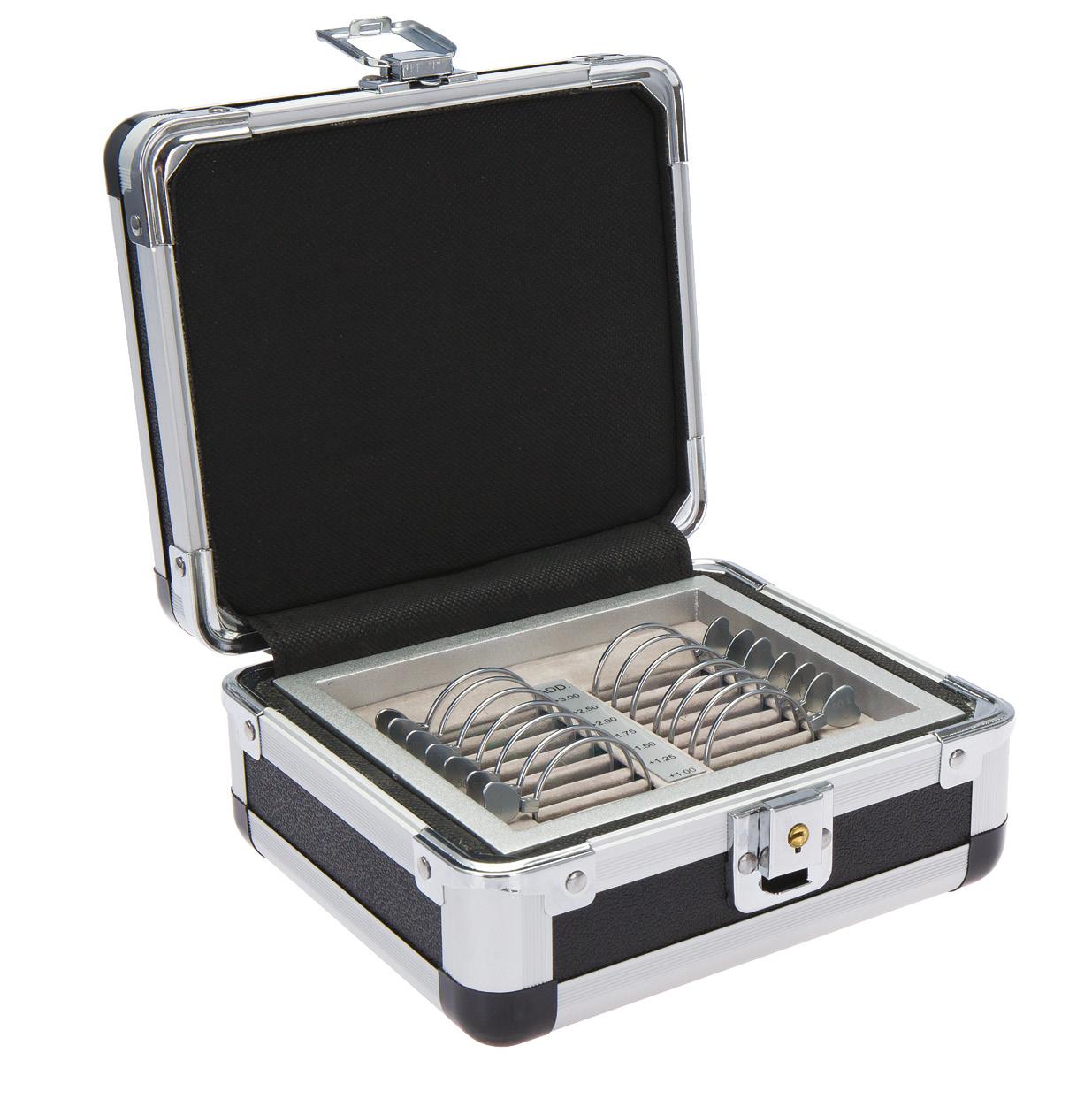
14 PROGRESSIVE LENSES
Ref. 08266
Trial lens set with 14 progressive lenses Ø 38 mm in metal rims.
Used by the optician to let the customer experience progressive lenses before purchasing ophthalmic lenses.
AR coated lenses in organic material with refraction index of 1.56.
Short progressive corridor length of 12 mm
Addition power ranges included:
+1.00D, +1.25D, +1.50D, +1.75D, +2.00D, +2.50D, +3.00D.
For each addition power range there is one right lens and one left lens.
Laser engravings identify:
- Nasal position “N”
- Horizontal axis “-“
- Near fitting circle “O”
The rims are made of metal.
Removable tray.
Dimensions:
Case: 175 x 155 x 95 mm
Tray: 150 x 130 x 40 mm
Weight: 1.3 kg
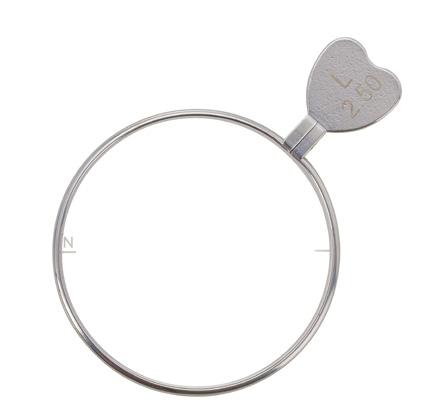
For best results, it is recommended to combine it with a trial lens set with lenses with a metal rim to ensure a larger field of vision

76 prism Ø 38 mm trial lenses with AR coating in carrying case
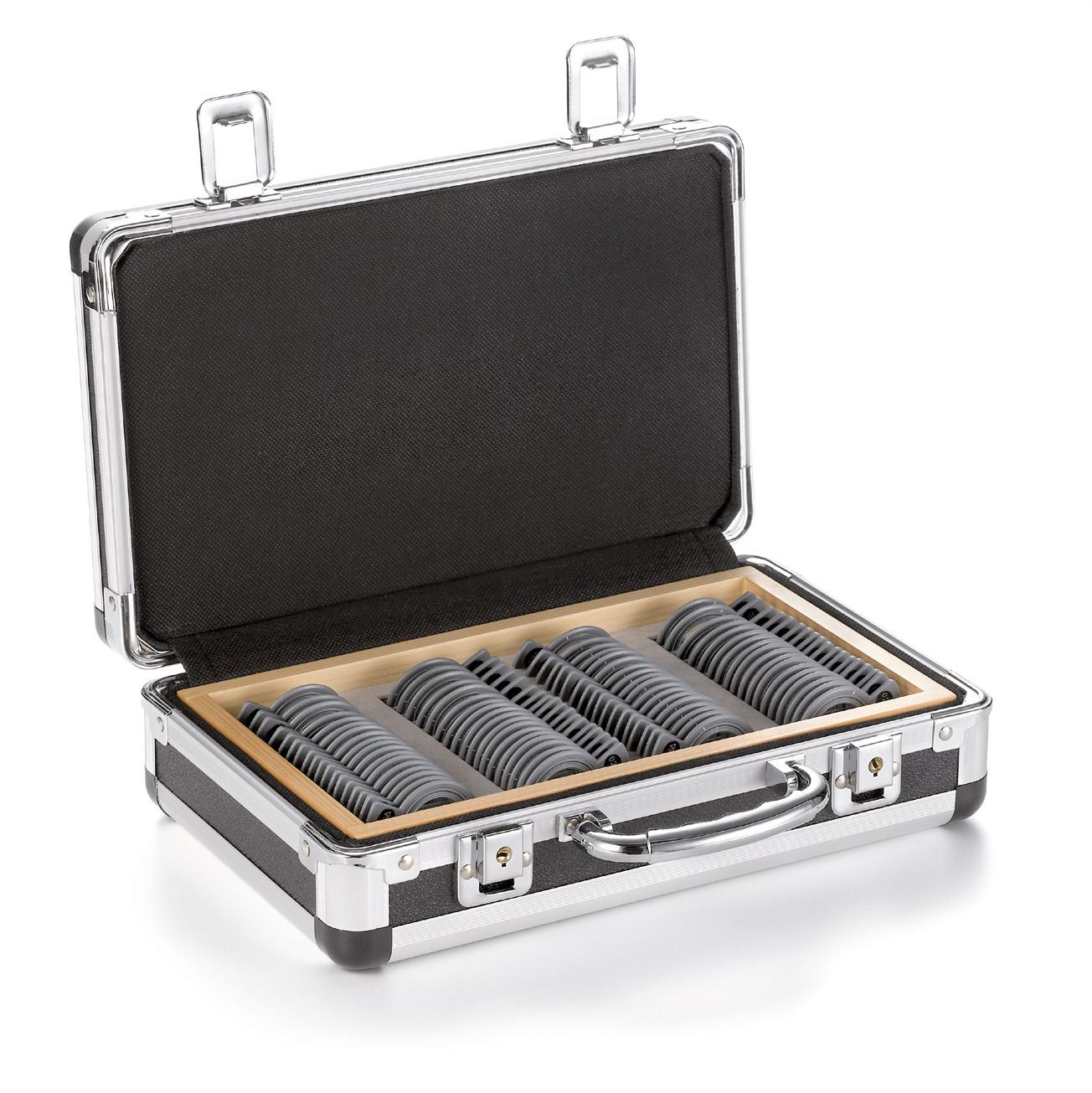
76 PRISM LENSES
Ref. 08264
76 prism lenses Ø 38 mm in carrying case with removable wooden tray. Suitable for the measuring and correction methodology after H.-J. Haase (MKH).
AR coated lenses in optical glass with refraction index of 1.523. Prism diopter range:
0.25∆-0.50∆-0.75∆-1.00∆-1.25∆-1.50∆-1.75∆-2.00∆-2.50∆-3.00∆3.50∆-4.00∆-4.50∆-5.00∆-6.00∆-7.00∆-8.00∆-9.00∆-10.00∆. This set contains 4 lenses for each prism diopter, with 4 different prism inclinations.
A reference mark indicates the base (notch) and the vertex (dot) of the prism.
Thin lenses with high prism powers. The rims are made from grey coloured ABS plastic.
Dimensions:
Case: 300x190x93 mm
Tray: 270x155x35 mm
Weight: 1.9 kg
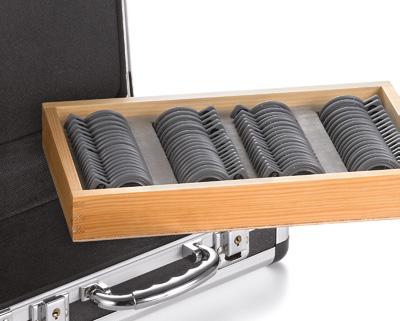

Ref. 08229
Monocular trial clip which may be used with almost all types of spectacles frames.
2 trial clips with 3 lens holders for Ø 38 mm trial lenses.
Ideal for low vision testing.
Weight: 9 g each

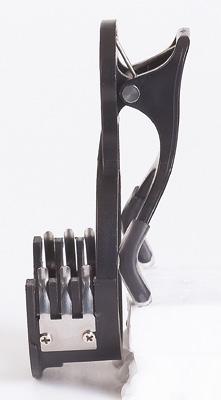


Ref. 08344
Trial Lens Holder for 4 lenses
With 0°-45°-90°-135° and 180° axis marks
For Ø 38 mm trial lenses.

With PD adjustment slide
1 - PD/LD switch
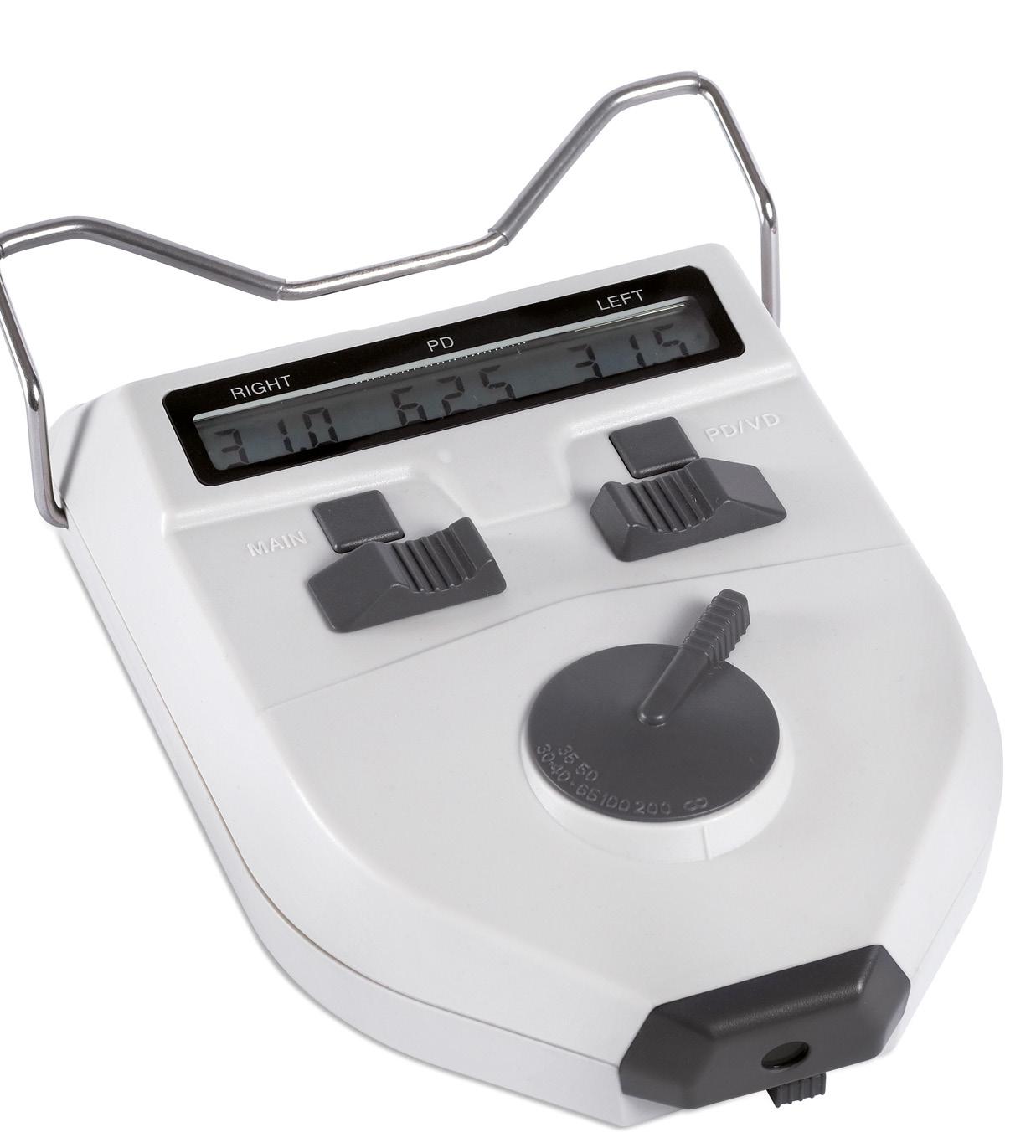
Ref. 04966
With PD adjustment slides.
Additional lens +2.00D switchable on the PD measurement ocular.
• Internal light with high brilliancy LED
• Measurement range: 45-82 mm (0,5 mm increments)
• Measurement: monocular and binocular
• Viewing distance: from 30 cm to infinity
• Power off: automatically after 1 minute without use
Power supply: 2 batteries (1.5V AA) not included
Dimensions: 221x166x63 mm
Weight: 0,66 kg (with batteries))
2 - PD adjustment slide (left)
3 - Focusing distance selection lever
4 - Practitioner’s viewpiece
5 - Viewpiece add-power switch
6 - PD adjustment slide (right)
7 - ON/OFF switch
8 - Right eye measurement display
9 - PD distance
10 - Left eye measurement display
11 - Eye shield lever (mono/binocular switch)

Ophthalmic instrument used to investigate sight problems and binocular function
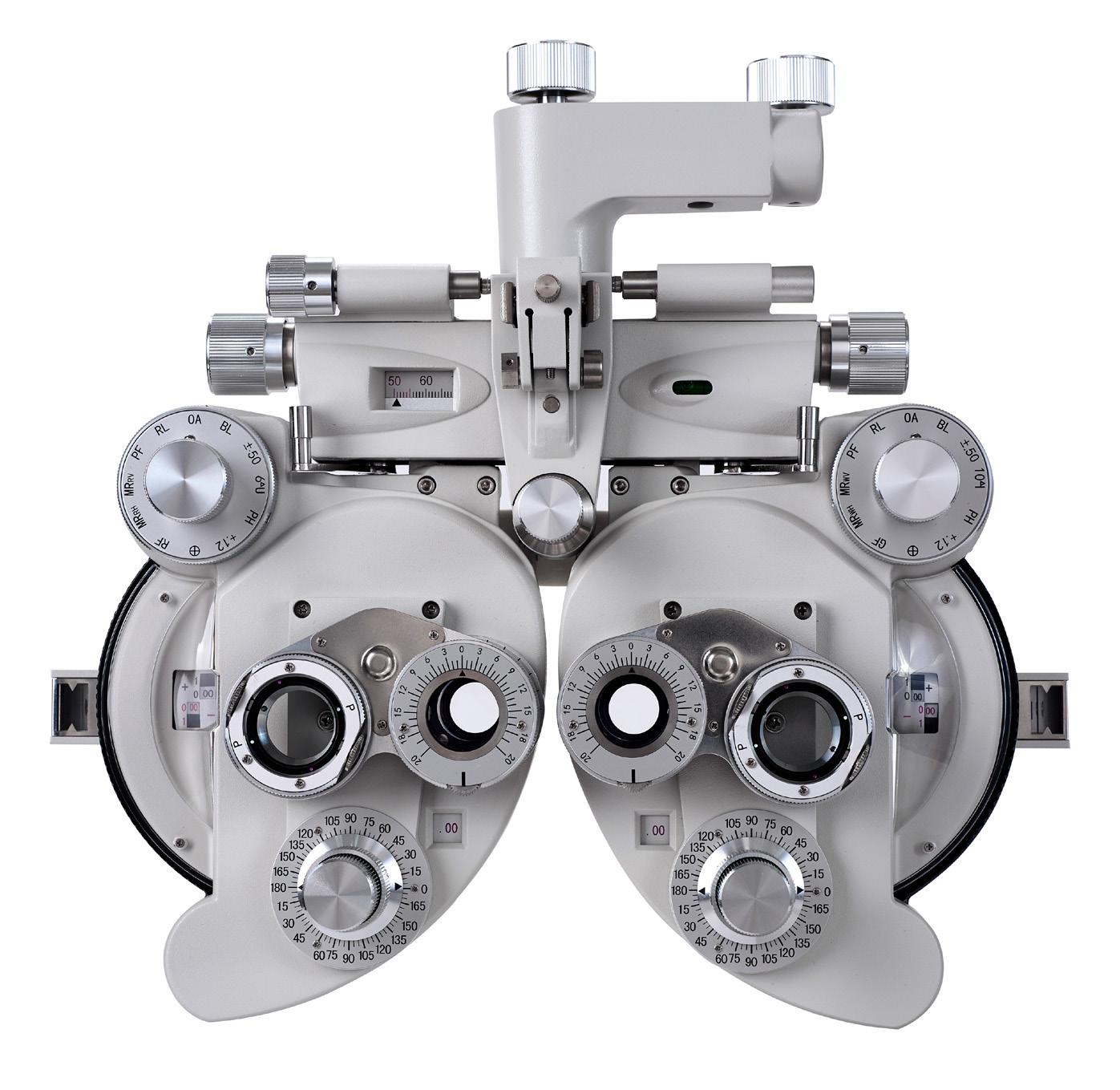
Ref. 08249
The vision tester is an instrument that is used to examine refractive problems. It contains most of the lenses used in the trial lens set including the Resley prisms.
Pupillary distance adjustment: from 48 to 75 mm in increments of 1 mm.
• Antireflection lenses
• Sphere lenses: from +16.75D to -19.00D (in increments of 0.25D)
• Cylindrical lenses: from -0.00D to -6.00D in increments of 0.25D (extendible to -8.00D with additional -2.00D auxiliary lens)
• Cylindrical axis: from 0 to 180° (in increments of 5°)
• Cross cylinders: ±0.25 D
• Rotating prisms: from 0Δ to 20Δ in increments of 1Δ
Dimensions: 345x350x155 mm
Weight: approx. 4.5 Kg
• Supplementary lenses:
- (O) Open lenses
- (R) Retinoscopy lenses +1.50 D
- (P) Polarized lenses: (45°left eye/135° right eye)
- (WMV) or (RMV) Maddox, vertical: left eye - white; right eye - red
- (WMH) or (RMH) Maddox, horizontal: left eye - white; right eye - red
- (GL) Green lens
- (RL) Red lens
- (+.12) Sphere lense + 0.12 D
- (PH) Pinhole
- (10 ∆ I) o (6∆ U) Dissociated prisms: left eye 10 (∆) I - right eye 6 (∆) U
- (±.50) Fixed cross cylinders
- (OC) Occluder Medical device compliant with EU Regulation no. 2017/745

ACCESSORIES INCLUDED WITH REF. 08249:
- Near vision test card with rod
- Protective cover
- Face shield with protective lens.

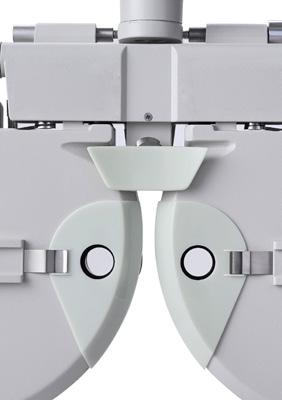
Ref. 08243
With wall-mounted support for vision tester, complete with chart projector mounting.

9 measurement functions in one tool

Ref. 04961
This multifunction ruler was designed to include 9 of the most useful functions for opticians for the correct fitting of lenses to the frame. Light, compact and easily transportable, it can be used both in the practice and during home visits.
1 pc.
1. Ruler: graduated scale from 0 to 200 mm.
2. Wrapping angle: curvature of the front of the frame is designed to keep the lenses as much as possible equidistant for all viewing positions on the horizontal plane. Most optical frames have a curve of about 5.
3. Lens diameter: Minimum diameter that the lens must have before being cut.
4. Progression channel height: millimeter reference for measuring the height of the canal progression.
5. Pantoscopic angle: angle of inclination of the
front with respect to the plane determined by the temples. The front must be tilted down towards the face of the patient in order to ensure as much as possible the equidistance of the lenses to the eye for all positions of view. Most optical frames have a pantoscopic angle of about 7.
6. Interpupillary distance: Graduated scale for measurement of the two half distances or of the total pupillary distance.
7. Height of the bifocal lens progression channel: Height of the progression channel that joins the distance optical zone with the reading area zone.
8. Corneal apex distance - lens: distance from internal surface of the ophthalmic lens at the corneal apex, usually between 12 and 14 mm.
9. Base of the frame: Double measurement scale to check the base of different frames size and caliber.
Ref. 04952
Plastic PD ruler to check children’s PD. Measuring range: 100 mm


Ref. 04959 PLASTIC PD SCALE WITH EYE OCCLUDER
Transparent section with millimeter scale for fast and quick check. Highly flexible, rounded edges.

Measuring range: 150 mm - 1 pc. 1 pc.
Ref. 04954
Highly flexible, scale non-erasable - 1 pc.. 1
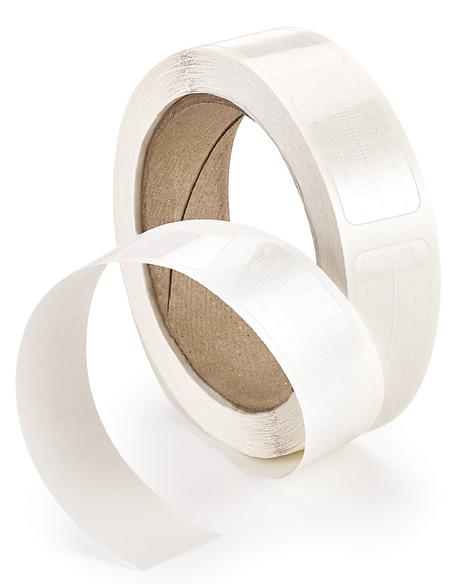
Ref. 04963
FITTING HEIGHT MEASURING TAPE
Static cling film that quickly and easily determines bifocal seg height and progressive fitting cross placement on any frame and the depth of the groove.
• 1 mm increments.
Roll 500 pcs.



Ref. 08425
Reading Chart made of washable flexible plastic material.
• Testing distance approx. 3 metres
• Can be fixed to the wall or used with a light box for rear illumination
• SLOAN letters
• LogMAR notation
• Line progression in LogMAR, decimal, metres, foot.
Dimensions: 230x360 mm
Weight: 65 g
Ref. 08426
Reading Chart made of washable flexible plastic material.
• Testing distance approx. 3 metres
• Can be fixed to the wall or used with a light box for rear illumination
• LEA symbols, ideal for children from the age of 3 years
• LogMAR notation
• Line progression in LogMAR, decimal, metres, foot.
Dimensions: 230x360 mm
Weight: 65 g
Medical device compliant with EU Regulation no. 2017/745
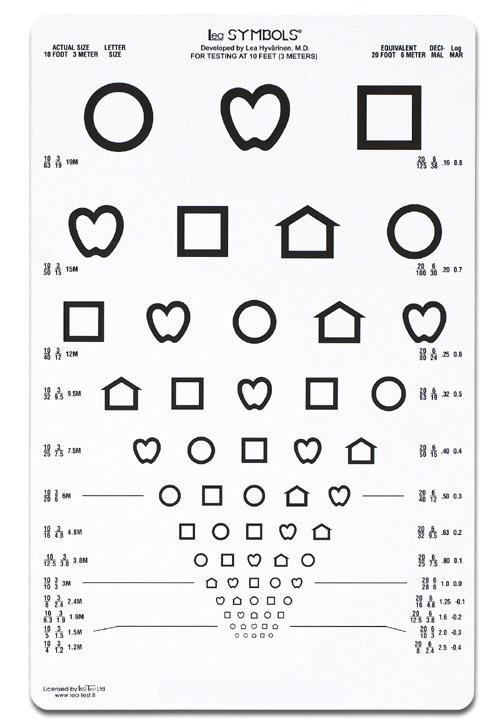

Ref. 08427
Reading Chart made of washable flexible plastic material.
• Testing distance approx. 3 metres
• Can be fixed to the wall or used with a light box for rear illumination.
• “E” letters specific for examinations on children from 4 to 6 years old.
• Lines progression: 10 ft. and 20 ft.
Dimensions: 230x360 mm
Weight: 65 g

Ref. 08424
Letter E in paper version.
Pack of 30 sheets size 210x297 mm in black cardboard with 2 letter E
Letter size: 90x160 mm
Medical device compliant with EU Regulation
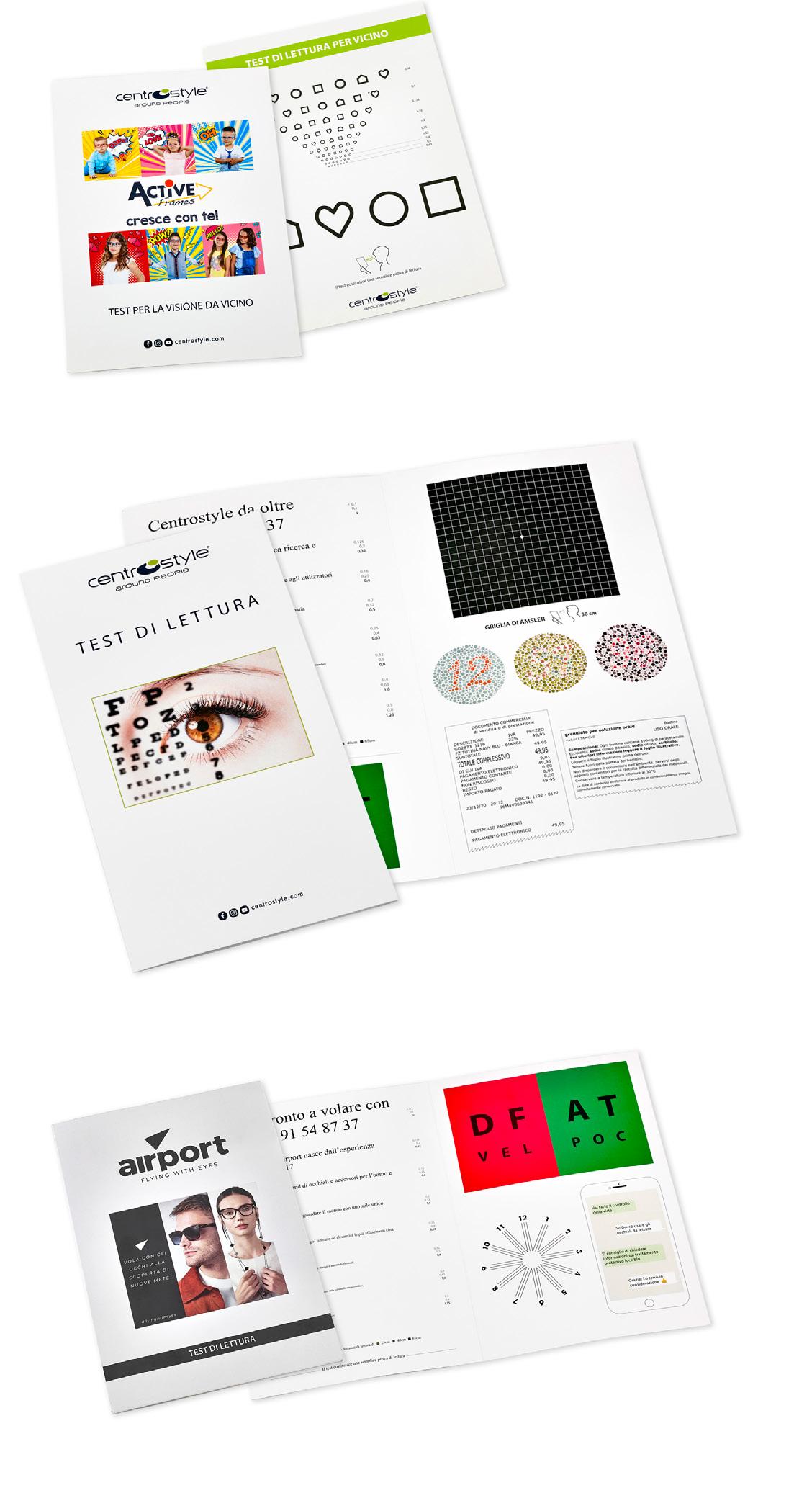
OPTOTYPE “ACTIVE”
Ref. 08421N
Paper optotype for reading test for children. ITA/GB
Dimensions: 150 x 210 mm. 2 pcs.
OPTOTYPE “CENTRO STYLE”
Ref. 08422GB
Paper optotype for reading test for adults.
Dimensions: 165 x 290 mm. 2 pcs.
OPTOTYPE “AIRPORT”
Ref. 08423GB
Paper optotype for reading test for adults.
Dimensionis: 150 x 210 mm. 2 pcs.

SCHIRMER TEST
Ref. 08781
Graduated strips for dry eye test. Measurement of tear volume and production. 100 pcs. (strips in single sterile pack)
Ref. 08783
Evaluation of integrity of the ocular surface, G.P. hard contact lens fitting and applanation tonometry. Each strip is impregnated with 1.0 mg of fluorescein sodium. 100 pcs. (strips in single sterile pack)

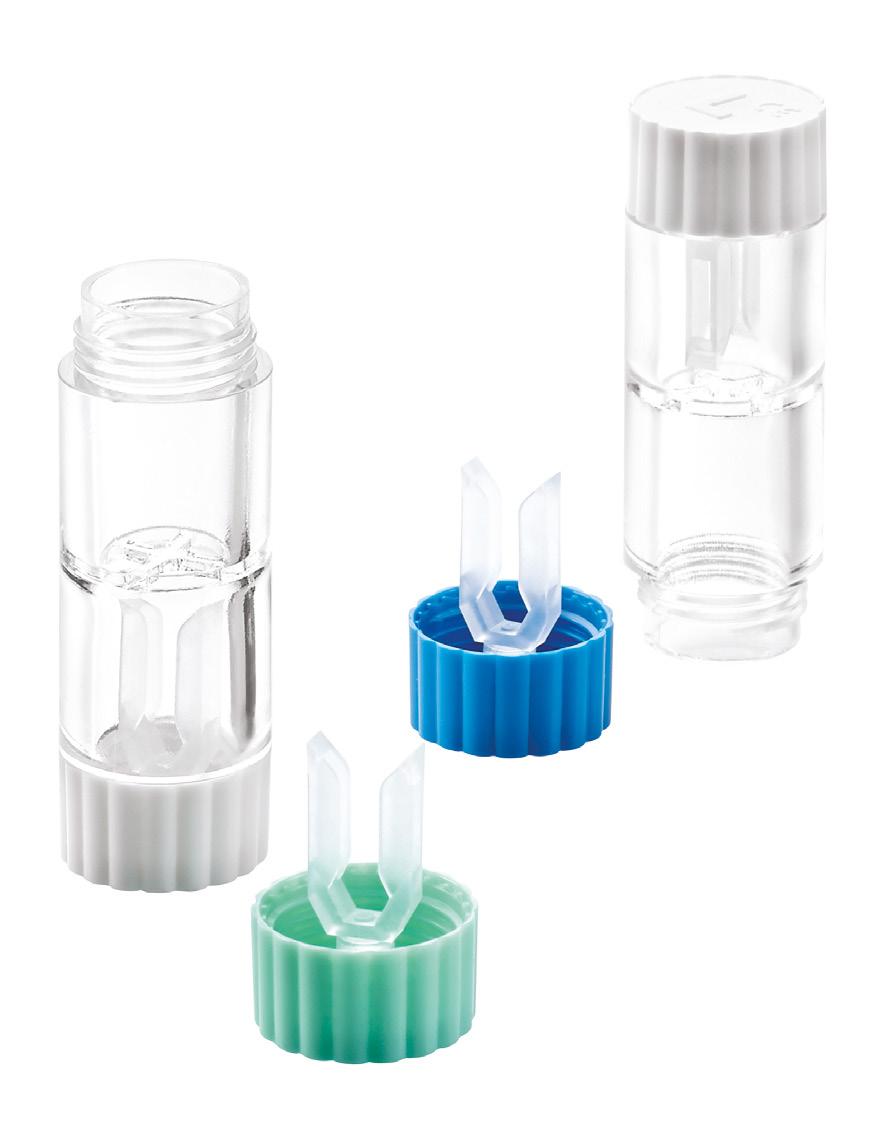
Ref. 08730
6 pcs. assorted
• Suitable also for:
• lenses used in orthokeratology.
• lenses with a diameter between 8.8 and 11 mm
Ref. 08747
6 pcs. assorted

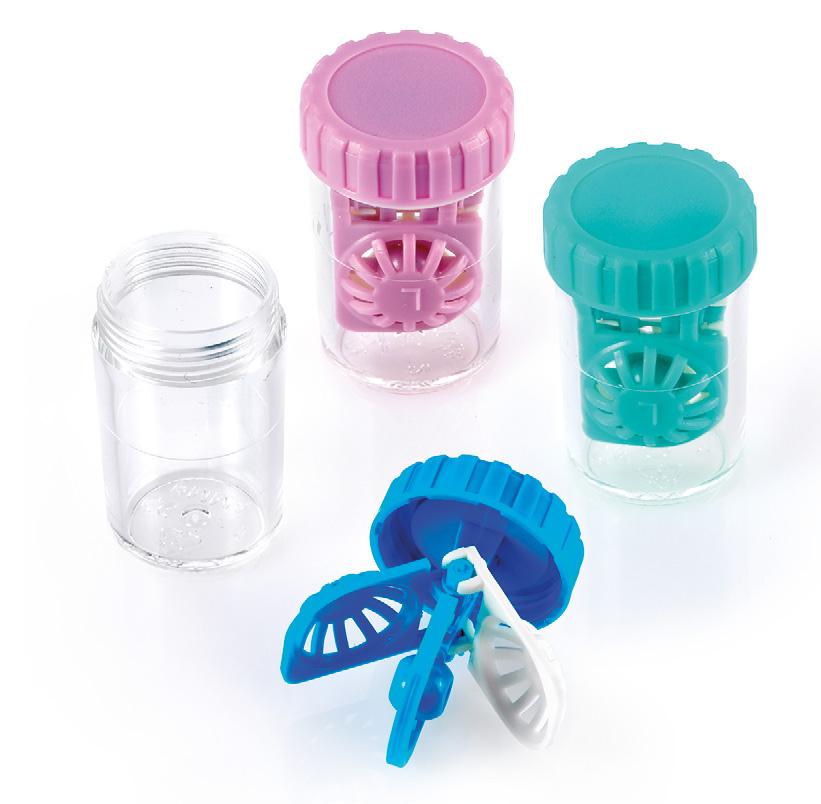

SUCKER HOLDERS
Indicate for semi-rigid contact lenses
Ref. 08764
Ref. 08765 12 pz./ref.
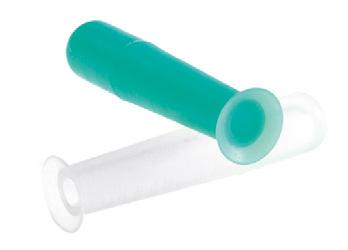
WITH HOLLOW CENTER
Indicate for soft contact lenses.
Ref. 08767
Ref. 08766 12 pz./ref.
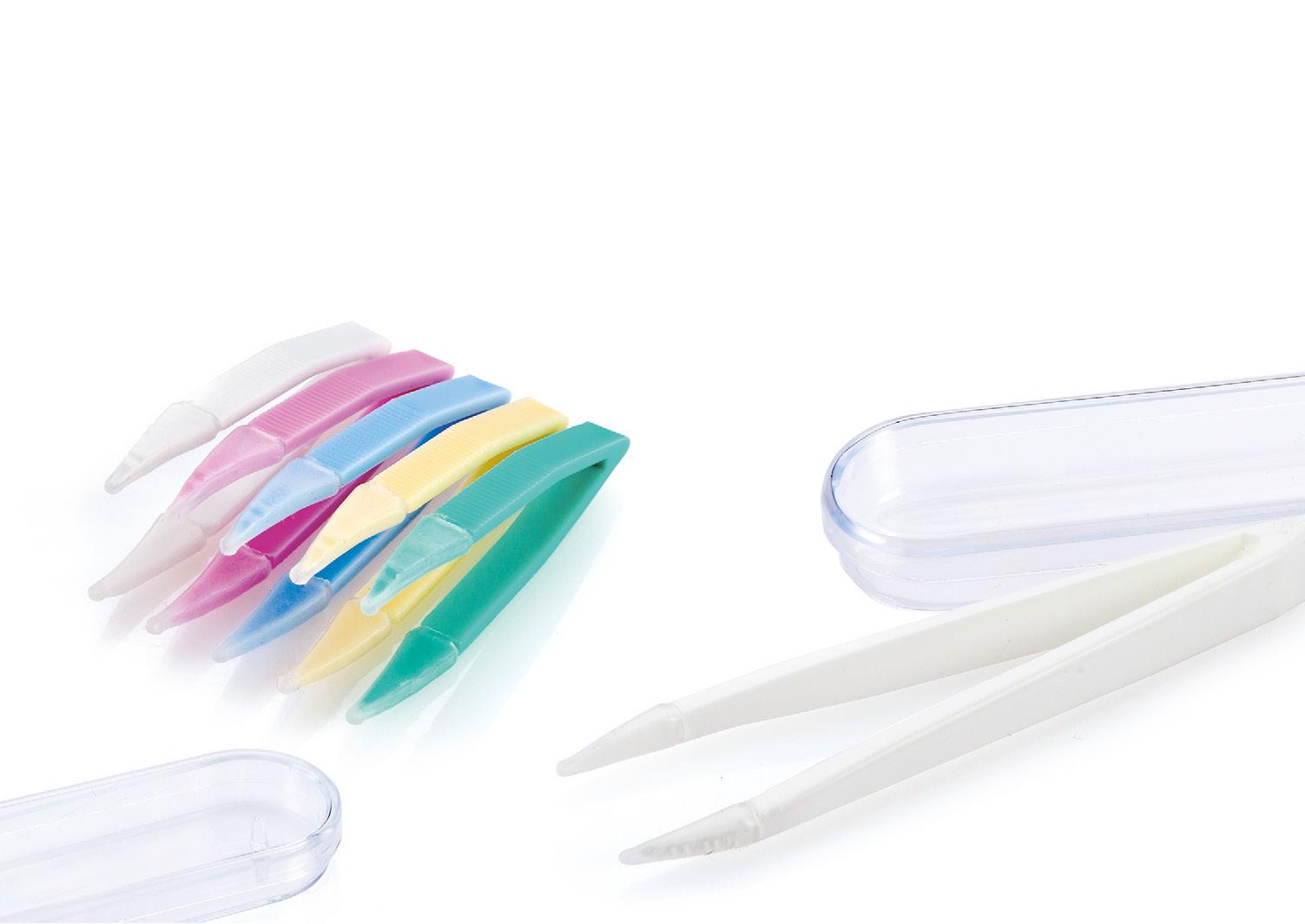
TWEEZERS
Ref. 08772 With case 12 pcs. assorted
TWEEZER
Ref. 08770 With case 6 pcs.
Protection during the visit

Ref. 06983
Disposable paper tissues for front rests and for optical equipment. Box of 200 pcs.
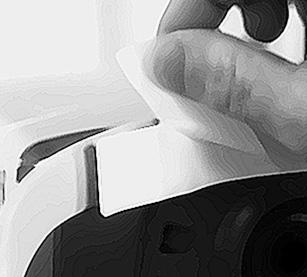

Ref. 06984
Disposable paper tissues for front rests for phoropter and optical equipment. Box of 200 pcs.


Ref. 06980
Disposable paper tissues for chin rests and for optical equipment. Box of 500 pcs.
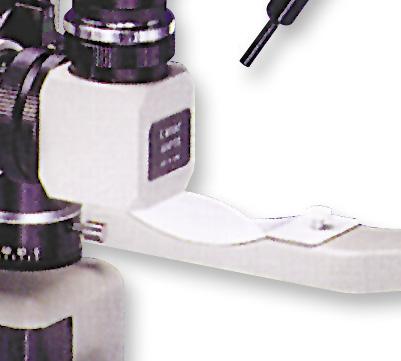

Ref. 11105
Poster illustrates the different parts of the eye i.e muscle, crystalline, optical nerve, lacrimal gland, net, cornea, eyelashes corps.
Dimensions: 57,5x42,5 cm 1 pc.